

A First Timer’s Guide to Visiting Berlin // 15 Tips to Know Before You Go
During Nick’s last European tour we had a few days to spend visiting Berlin in between his shows. Having only heard rave reviews about the city, we were excited to finally get a chance to see what the big fuss was about.
Lately, on these shorter trips we’ve been taking, I haven’t been planning much until we get there. After arriving in Berlin, I realized that while this approach has worked out for us in smaller cities, I should’ve had a better plan for Berlin.
It was a little overwhelming! Keep reading for everything I wish I would’ve known, plus where to stay, what to eat and just some general good-to-know tips for visiting Berlin.
A FIRST TIMER’S GUIDE TO VISITING BERLIN // WHAT TO KNOW BEFORE YOU GO
How to get to berlin city center from the airport.
Tegel Airport to Berlin City Center
The fastest and cheapest way to city center from Tegel Airport is by using one of the Airport Express Busses. You can catch the busses outside of the terminal, they leave every 10 minutes. The journey takes around 35 minutes and costs €2.80.
For information on which Express bus to take click here
Schonefeld Airport to Berlin City Center
The quickest and easiest way to get from Schonefeld Airport to the city center is by the Airport Express train.
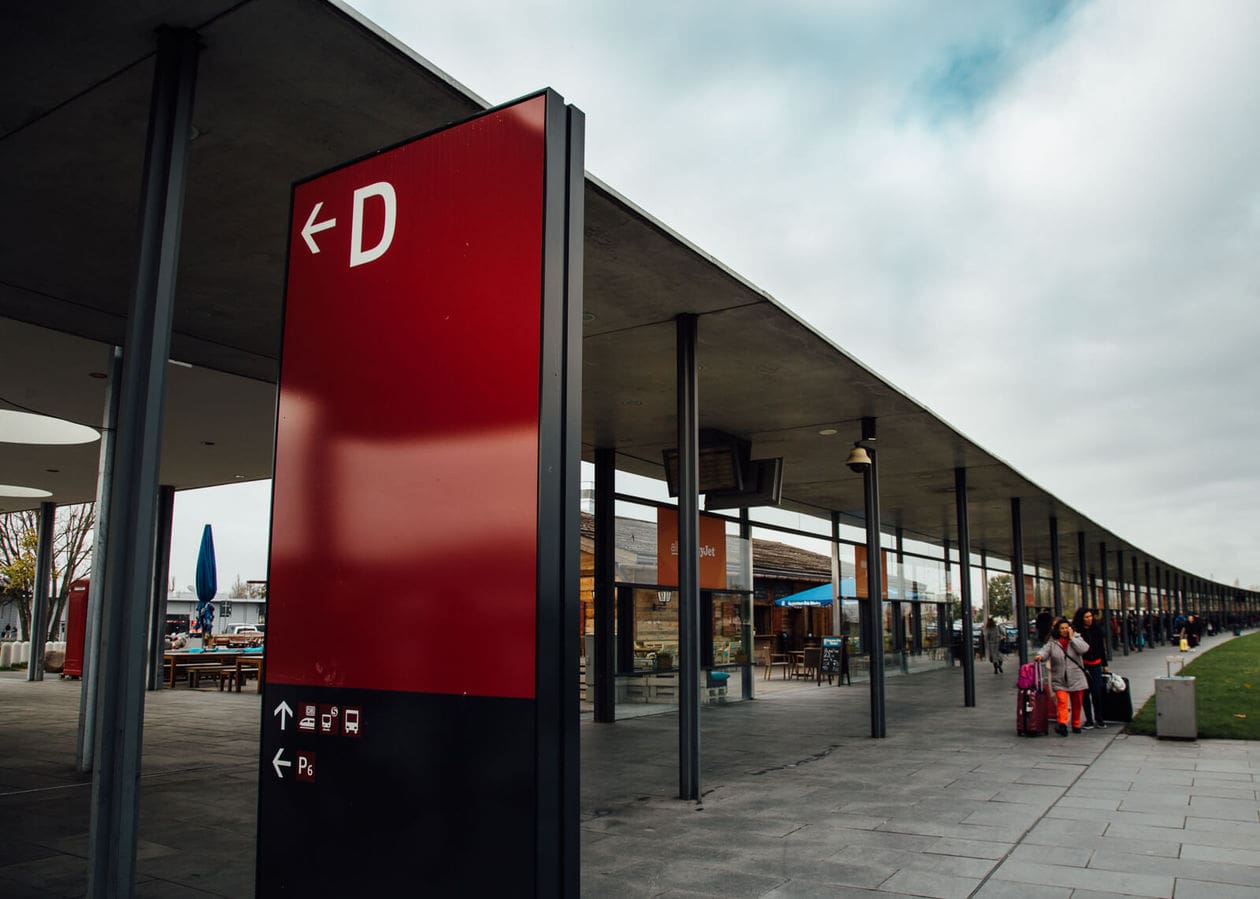
The Airport Express (RE7 and RB14) costs €3, it takes 28 minutes to reach Berlin’s central train station (Hauptbahnhof) and trains run from 05:00am to 11pm. Make sure your ticket includes zone C.
MAKE YOUR REICHSTAG DOME RESERVATION IN ADVANCE
The Reichstag building is one of the top things to do while visiting Berlin and the glass dome on top of the building is a must see. Unfortunately, we didn’t know you needed an advanced reservation and it was entirely booked during our trip.
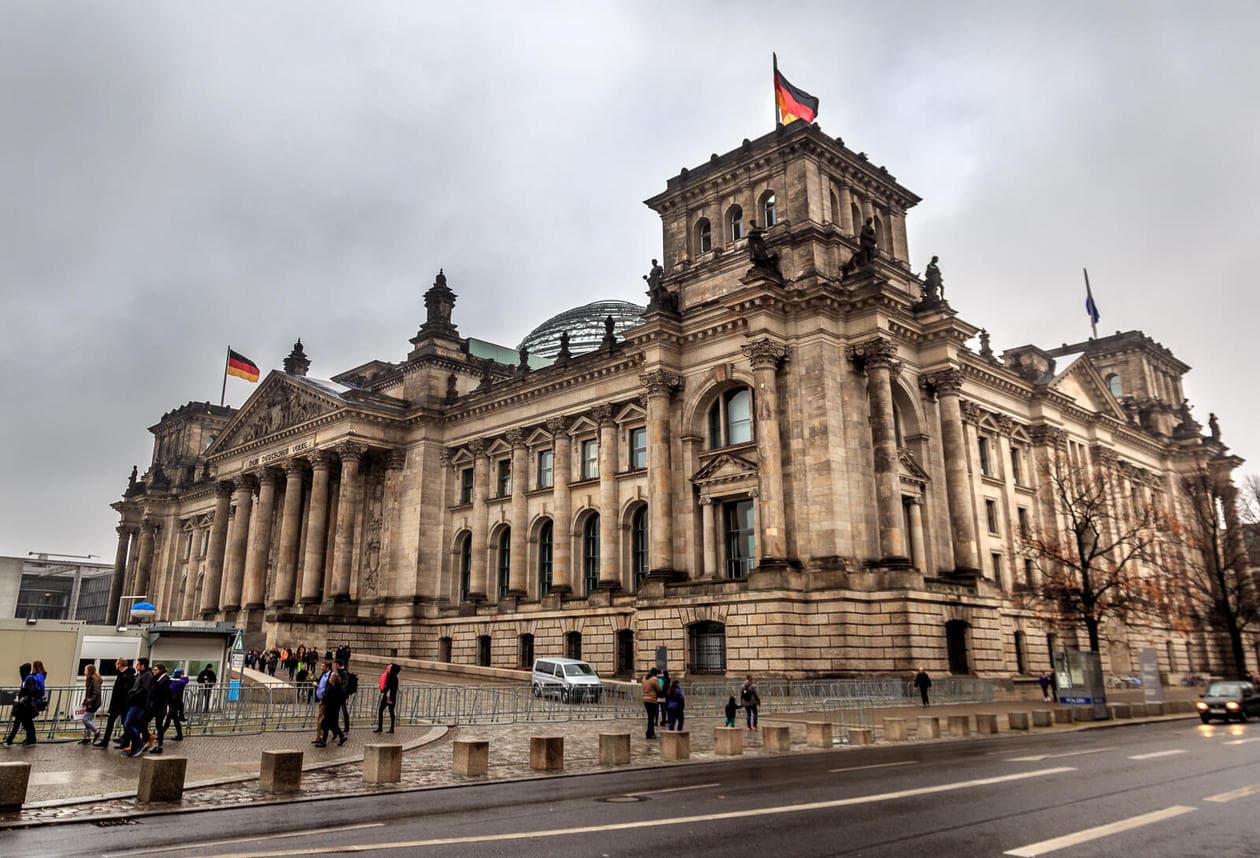
Admission is free. C lick here to visit their official website.
Or click here to purchase the 2 hour tour including a visit to the dome.
WHAT TO EAT & DRINK IN BERLIN
While you’ll find popular German dishes (schnitzel, eisbein etc) in most restaurants, there are a few food items Berlin is especially known for that you might want to check out.
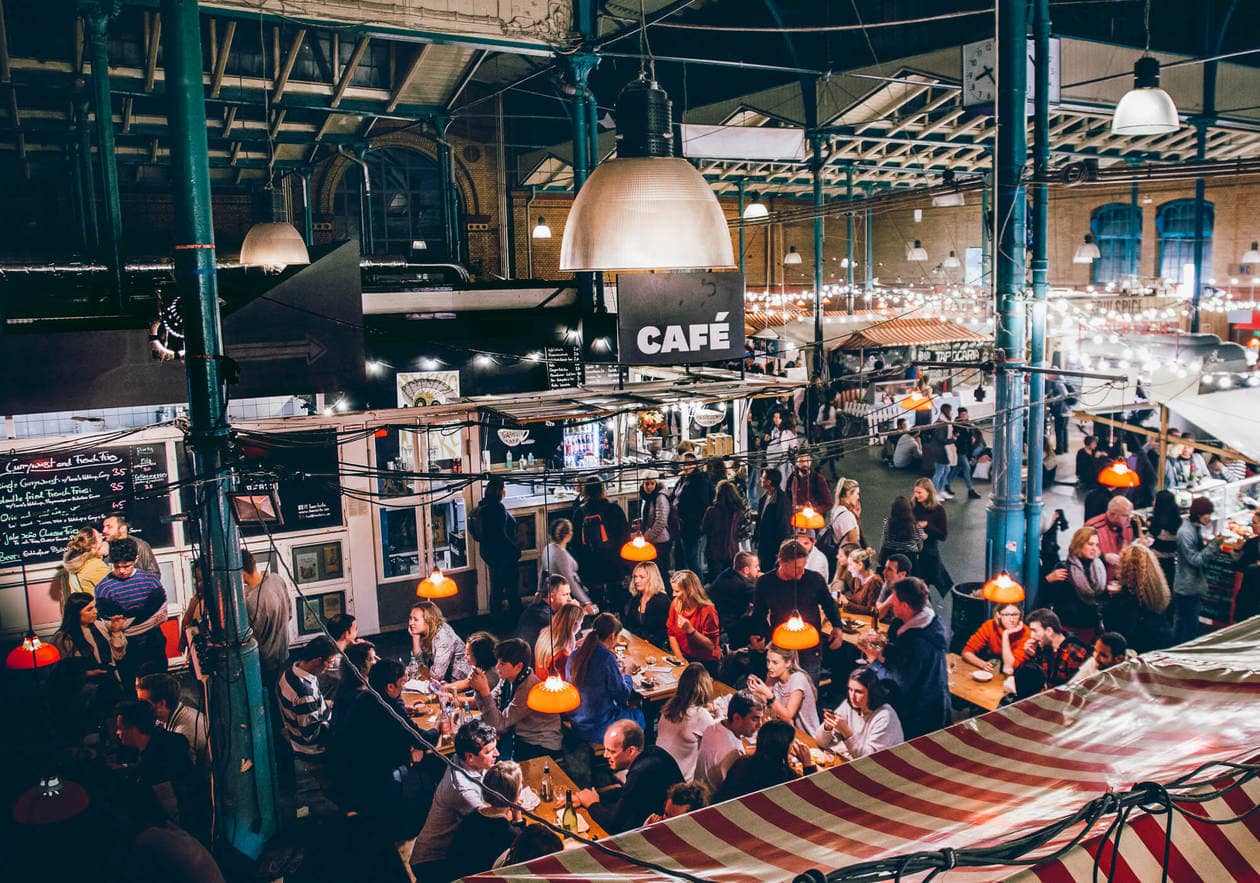
CURRYWURST Garnering just as much love as doner kebabs, currywurst is another mega popular street food favorite. It’s made out of pork sausage with sweet curry ketchup and a pinch of curry spice on top. The most legendary currywurst stalls in Berlin are Curry 36 in Kreuzeberg and Konnopke in Prenzlauer Berg.
BERLINER A Berliner Pfannkuchen is a traditional german pastry which is basically a jelly filled donut. They usually come with icing or powdered sugar on top.
VEGAN FOOD Berlin was named Vegan Capital of the World by Happy Cow in 2017. The city has 471 restaurants that cater to vegans as well as the largest vegan grocery store chain, Veganz.
BERLINER WEISS A lightly sour, low alcohol beer usually served with a shot of syrup. Berliner Weiss is a popular summer drink.
RELATED POST: STREET FOOD THURSDAY AT MARKETHALLE NEUN IN BERLIN
GO DURING THE SUMMER
Everyone I’ve ever met who’s been to Berlin loves it. Unfortunately for us, it just didn’t click and we were left wondering what we did wrong.
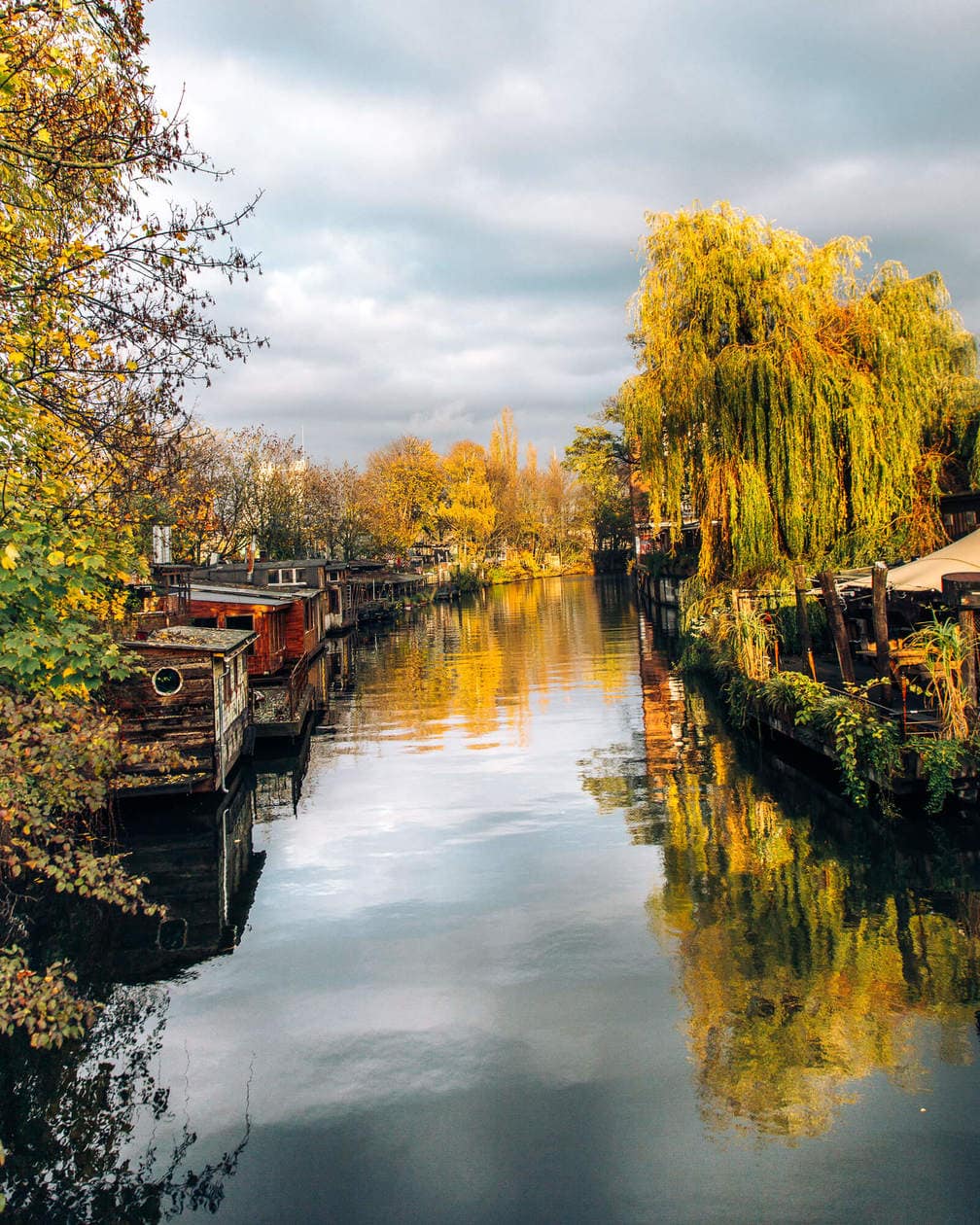
I’m certain that the weather was responsible for our mixed feelings. Most of the things we wanted to do were closed and we were constantly being forced inside due to the rain.
It’s my fault for trying make beer gardens and outdoor clubs happen in the rain but I’m from California and sometimes I forget the rest of the world has to deal with seasons. If possible, go during the warmer months. Or, unlike me, just make a more weather suitable itinerary. 🙂
WATCH FOR CYCLISTS
There are a lot of bicycles in Berlin and on the walkways, the road is divided into 2 sections. One side for pedestrians and one for cyclists. If it’s your first time visiting Berlin, it’s easy to wander onto the wrong path.
Most cyclists will ring their bell if they’re coming up behind you, but it’s best to stay aware and off the bike lane.

VALIDATE YOUR TRANSPORTATION TICKETS BEFORE YOU BOARD
After purchasing a ticket for the bus or metro, you’ll need to validate it before you start your journey. Validation machines are located on the platforms and in busses. Occasionally plainclothes ticket inspectors will check validations so it’s better to be safe than sorry.
If you have purchased a day pass, you only need to validate your ticket the first time you use it.
BUY A PUBLIC TRANSPORTATION DAY PASS
Berlin is a huge city and chances are you’ll find yourself on the U-Bhan quite a bit. Single journey tickets cost €2.80 or you can buy a day pass for €7.70.
Day passes are good for all public transportation in Berlin (S-Bahn, U-Bahn, buses, trams and ferries) and include up to 3 children (ages 6-14).
Just note that the Berlin travel day passes are not valid for 24 hours, and they expire at 3am.
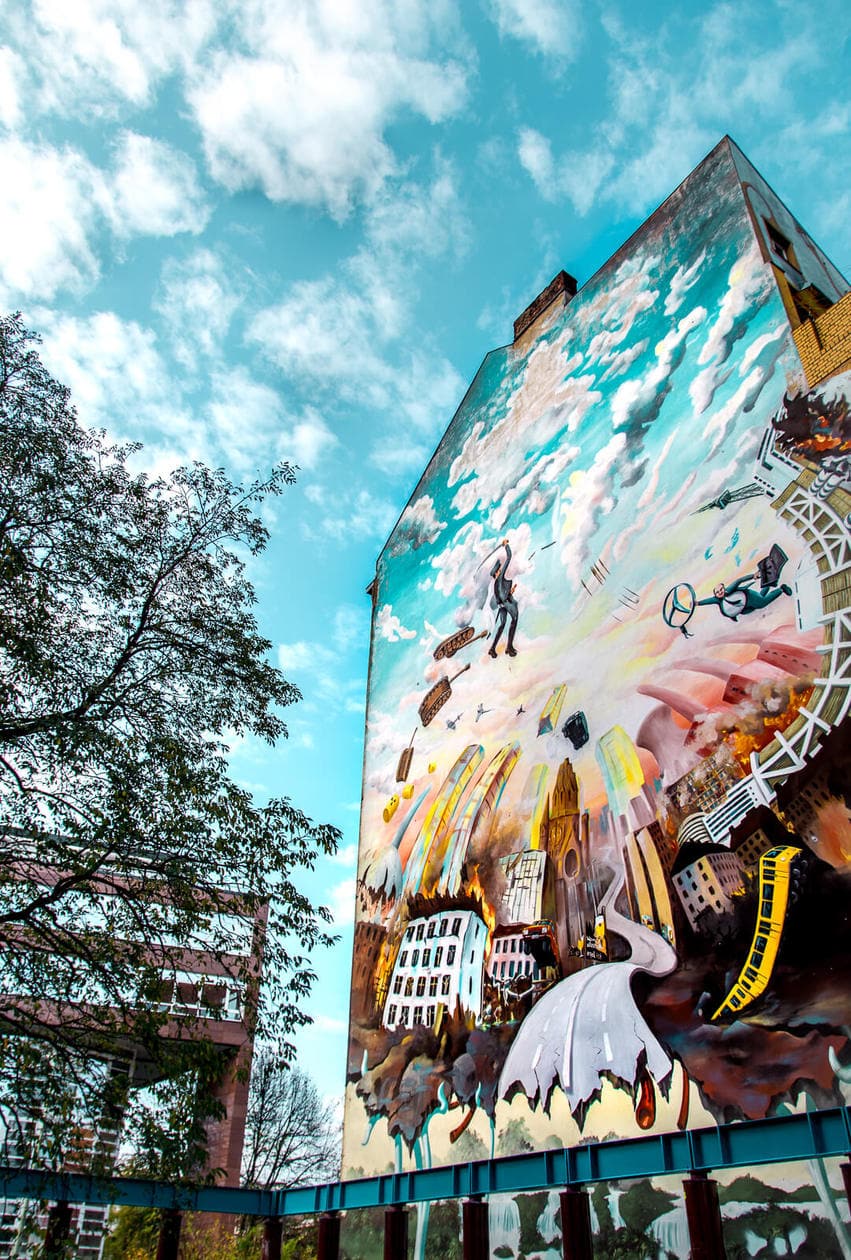
POWER SOCKETS & VOLTAGE
In Germany standard voltage is 230V and frequency is 50HZ and they use type F power sockets.

You will need a voltage converter if your country’s standard voltage is 100V – 127 V (US, Canada & most of South America). You don’t need a voltage converter if your country’s voltage is between 200V-240V (most of Europe, UK, Australia, Africa).
BERLIN IS NOT BAVARIA
I feel like this is probably common knowledge to most people, but it wasn’t to us..
In 2016, we visited Munich and vibed hard with Bavaria’s beer culture. We just assumed the entire country got down like that, leaving us a little disappointed in Berlin.
After an inauthentic visit to Hofbrauhaus Berlin we immediately realized our mistake. It was like going to Las Vegas and expecting to see the real Eiffel Tower..
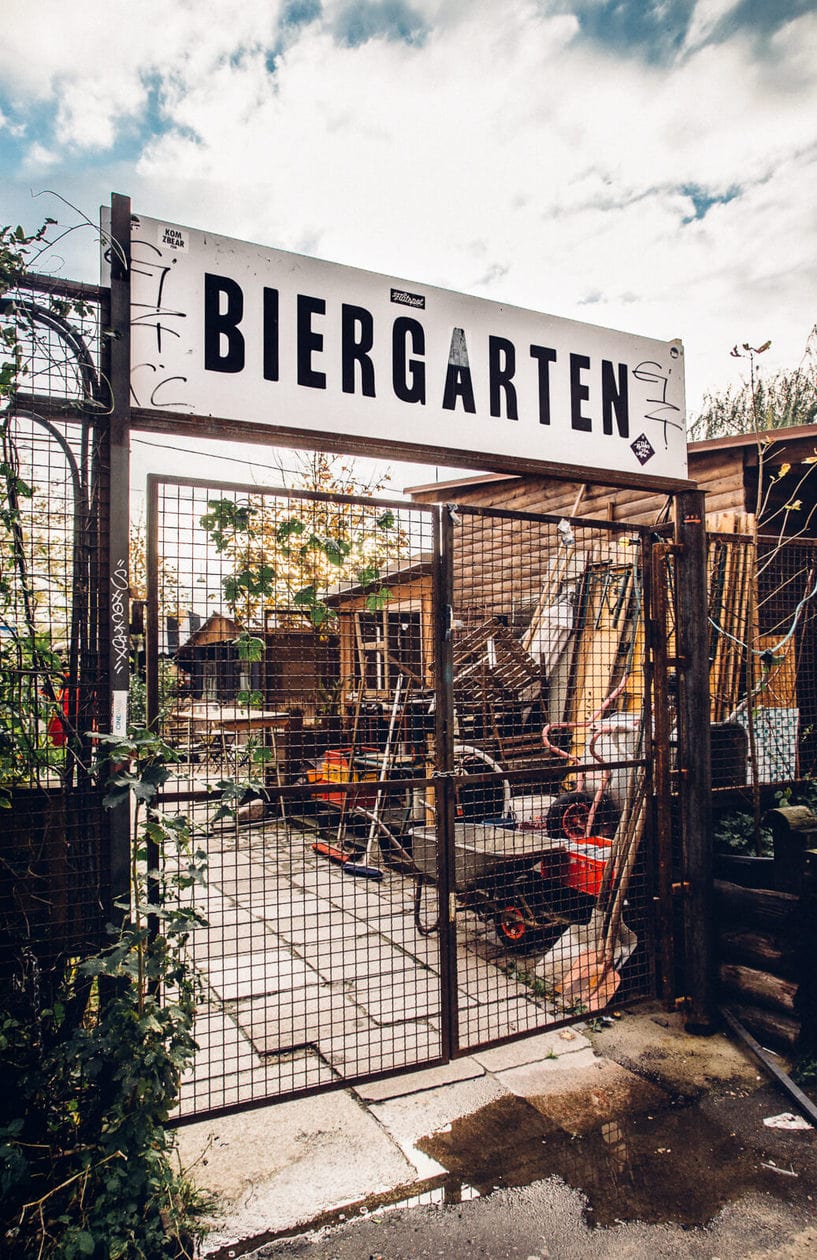
RELATED POST: HOFBRAUHAUS MUNICH // THE POPULAR BEER HALL’S DARK PAST
So don’t be like us. Instead, immerse yourself in what Berlin has to offer, which is arguably some of the best nightlife in the world.
THE COLORED PIPES
This isn’t imperative information but you might find yourself wondering what the colorful pipes are snaking throughout the city.
Groundwater in Berlin is located just 2 meters (6.5 ft) under the city surface. To eliminate city flooding, the pipes pump water from the ground and transport it to the canals.
TIPPING IN BERLIN
As a traveler from the US (where we’re expected to tip for everything), I’m always researching tipping in other countries. While visiting Berlin, we discovered that while the tipping culture is much more lax, on average, you still tip the same people.
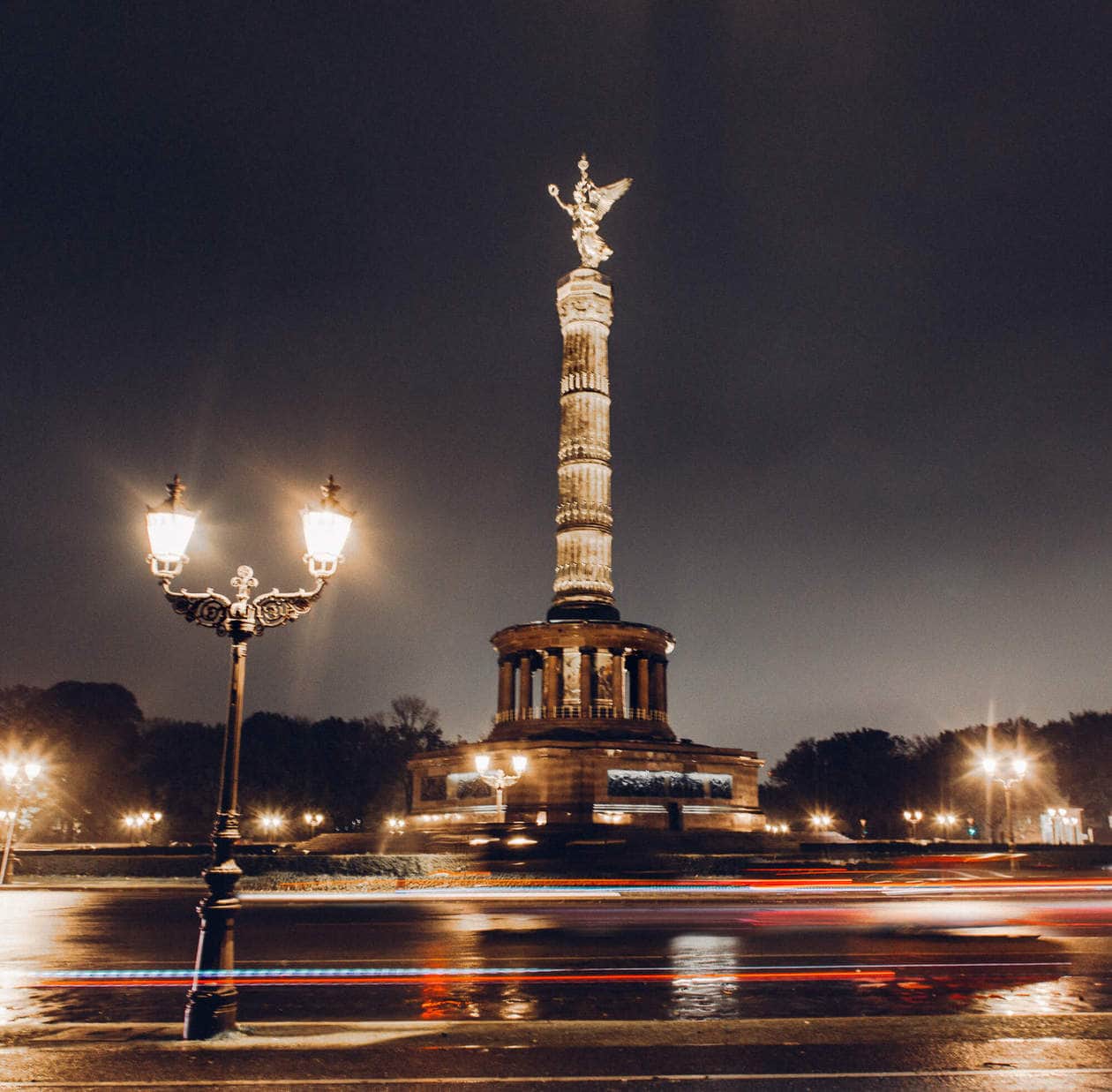
RESTAURANTS In restaurants a service charge will be added to your bill but tipping is still expected. 10%-15% is common. BARTENDERS Round up to the nearest Euro. HOTELS It is common to tip the porter €1-2 per bag and the housekeepers €2-3 per day. TAXIS Round up to the nearest Euro on short trips. On long trips, add a Euro or two.
BOTTLE DEPOSITS
In bars, you might find yourself paying a bottle deposit when you order a beer. Get your money back by returning your card/token before you leave.
THE BERLIN WELCOME CARD
If you will be in Berlin for several days and plan on doing a lot of sightseeing, you might want to consider The Berlin Welcome Card. It offers free transportation during your stay and also discounted (25%-50%) admission to many of the museums, attractions, restaurants and tours.
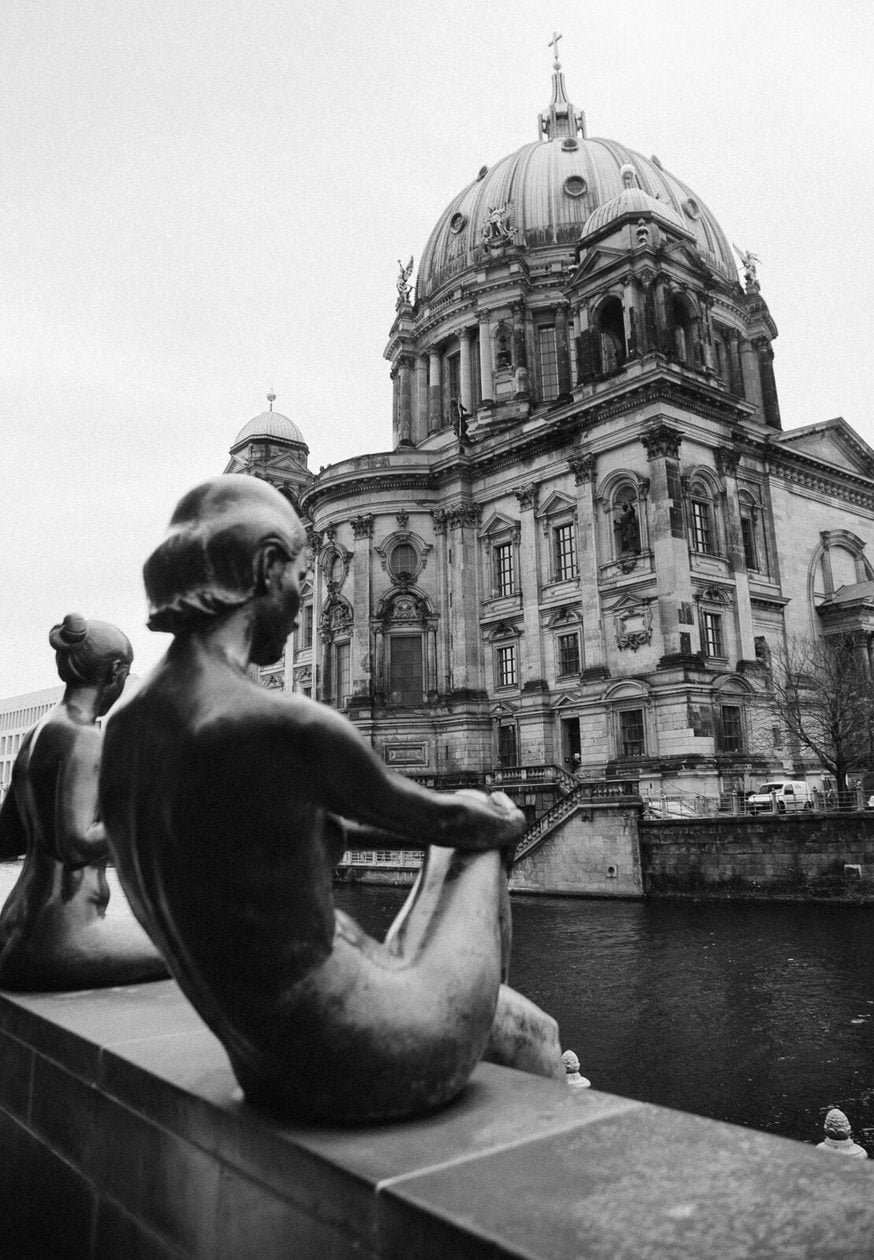
What you plan to do in Berlin will determine whether or not the Berlin Welcome card will be worth the money for you. Make sure to line up your itinerary with their discounted offers before buying, just to be sure.
For more information about The Berlin Welcome Card click here.
BRUSH UP ON SOME HISTORY
A first timer’s visit is not complete without paying homage to Berlin’s turbulent history. This city has been through it, and the evidence is still here for everyone to see.
Whether you seek out WWII sites, or are more interested in the Cold War, it’s a good idea to do a bit of historical research before visiting Berlin. It’ll make everything a lot more impactful. Promise.
RELATED POSTS:
THE EAST SIDE GALLERY // A BEGINNER’S GUIDE TO THE BERLIN WALL CHECKPOINT CHARLIE // THE COLD WAR IN BERLIN
THE MUSEUM PASS
Berlin has over 170 museums. If you’re into this, check out the Museum Pass. It’s €29 and includes free admission to 30+ museums over the course of 3 days.
For more information about the Museum Pass click here.
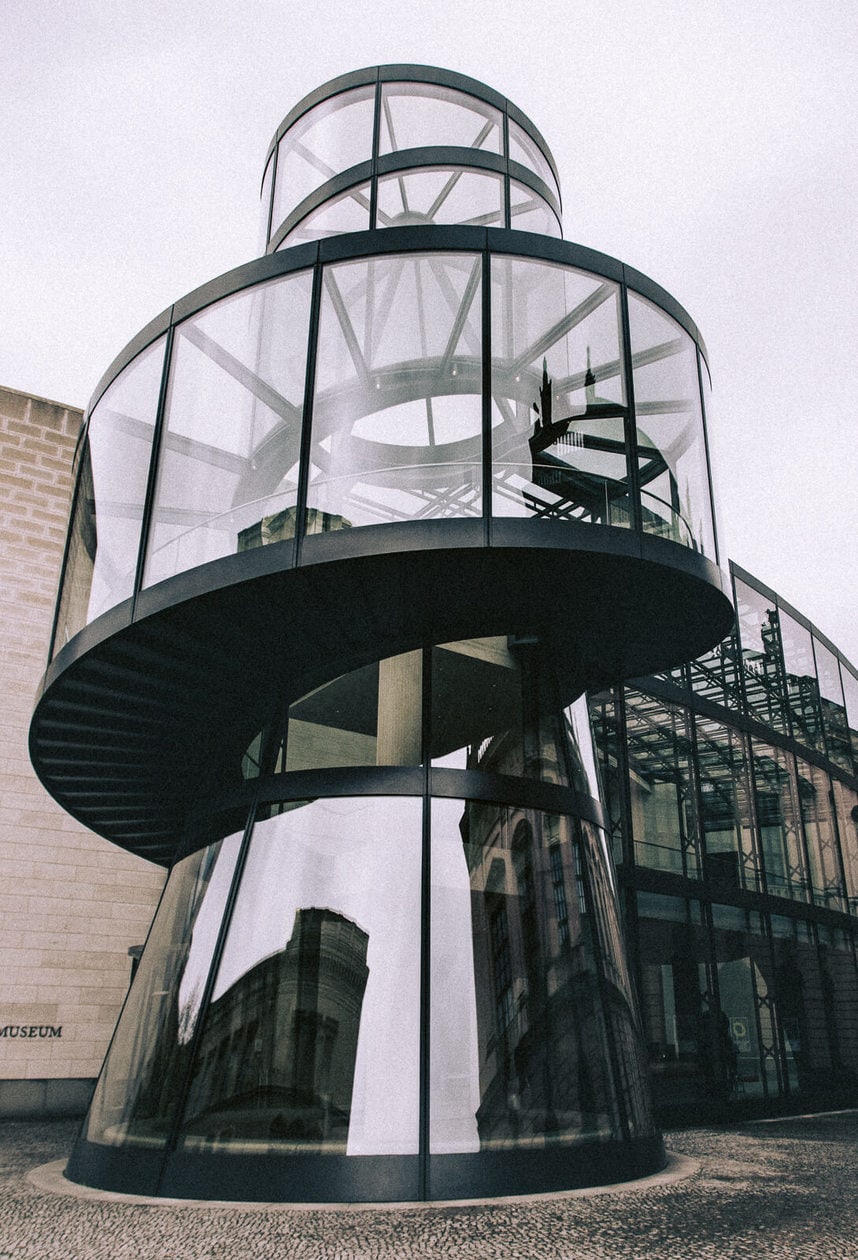
A FIRST TIMER’S GUIDE TO VISITING BERLIN // WHERE TO STAY
HUETTENPALAST How adorable is this? At the retro-themed hotel, Huettenpalast, guests sleep in (indoor) caravans or wooden cabins.
For Huettenpalast Information & Booking Click Here

OSTEL DDR HOSTEL/HOTEL is located in the central Mitte district and takes guests back in time to East Berlin’s former communist days. The rooms are decorated in authentic 1970’s East German style with original GDR furniture.
For Ostel DDR Information & Booking Click Here
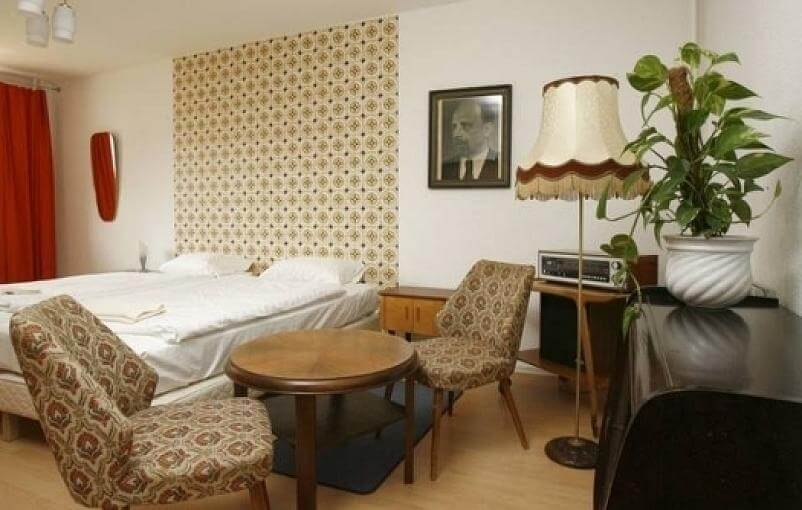
MID-RANGE €€
BIKINI BERLIN is a stylish, urban jungle hotel located in the city center complete with a hammock lounge, rooftop terrace and free mini car & bicycle rentals.
Bikini Berlin Info & Booking Click Here

NHOW HOTEL Europe’s first music themed hotel with a futuristic, very pink design. Nhow offers guests professional recording studios and guitars are available on the room service menu.
Nhow Hotel Booking & Information Click Here
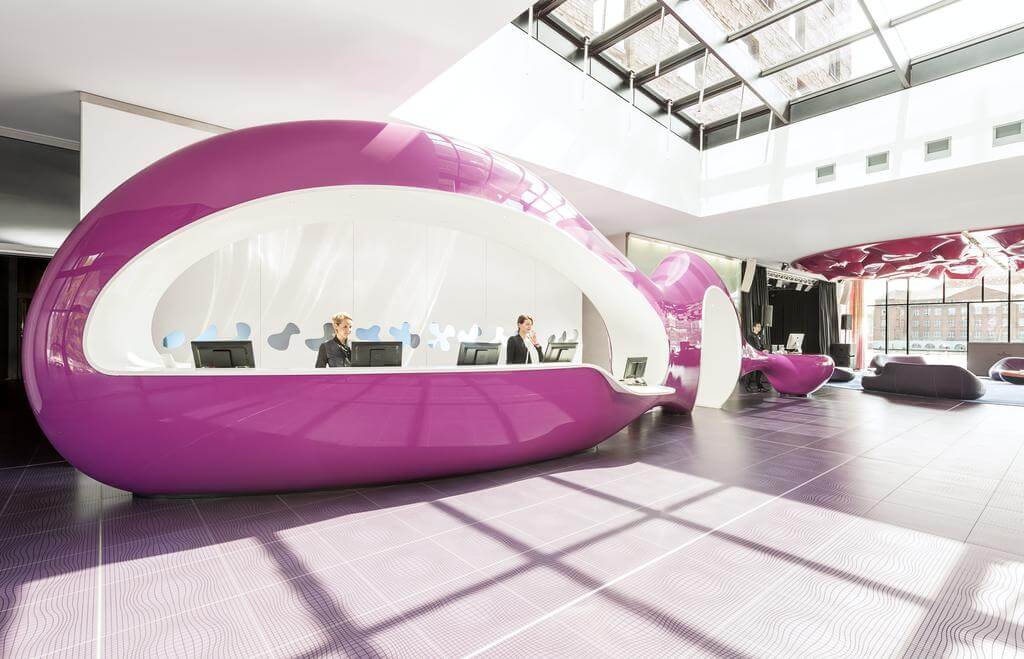
PATRICK HELLMANN SCHLOSSHOTEL is a luxury boutique hotel in the prestigious Grunewald district. It was once a former mansion built in 1914, and when it was turned into a hotel, Karl Lagerfeld exclusively designed the stylish interiors.
For Patrick Hellmann Schlosshotel Booking & Info Click Here
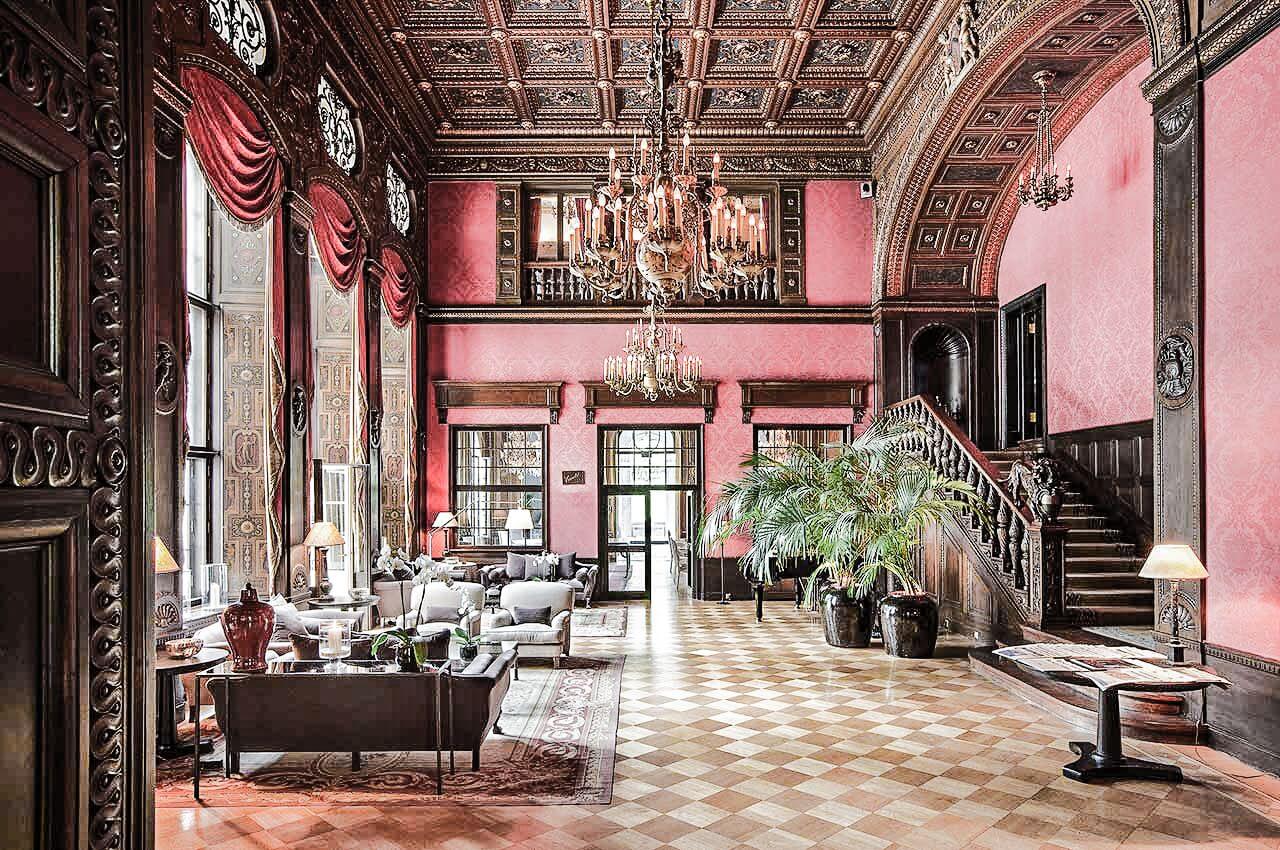
HOTEL ADLON is one of Berlin’s most luxurious hotels with Old Europe vibes and an excellent location (next to the Brandenburg Gate).
Famous guests include Albert Einstein, Her Majesty the Queen, and who could forget when Michael Jackson dangled his baby out of the hotel’s window when he was visiting Berlin in 2002.
For Hotel Adlon Booking & Info Click Here

Do you have any Berlin travel tips to add for first timers? Leave them in the comments!
PIN IT // A FIRST TIMER’S GUIDE TO VISITING BERLIN
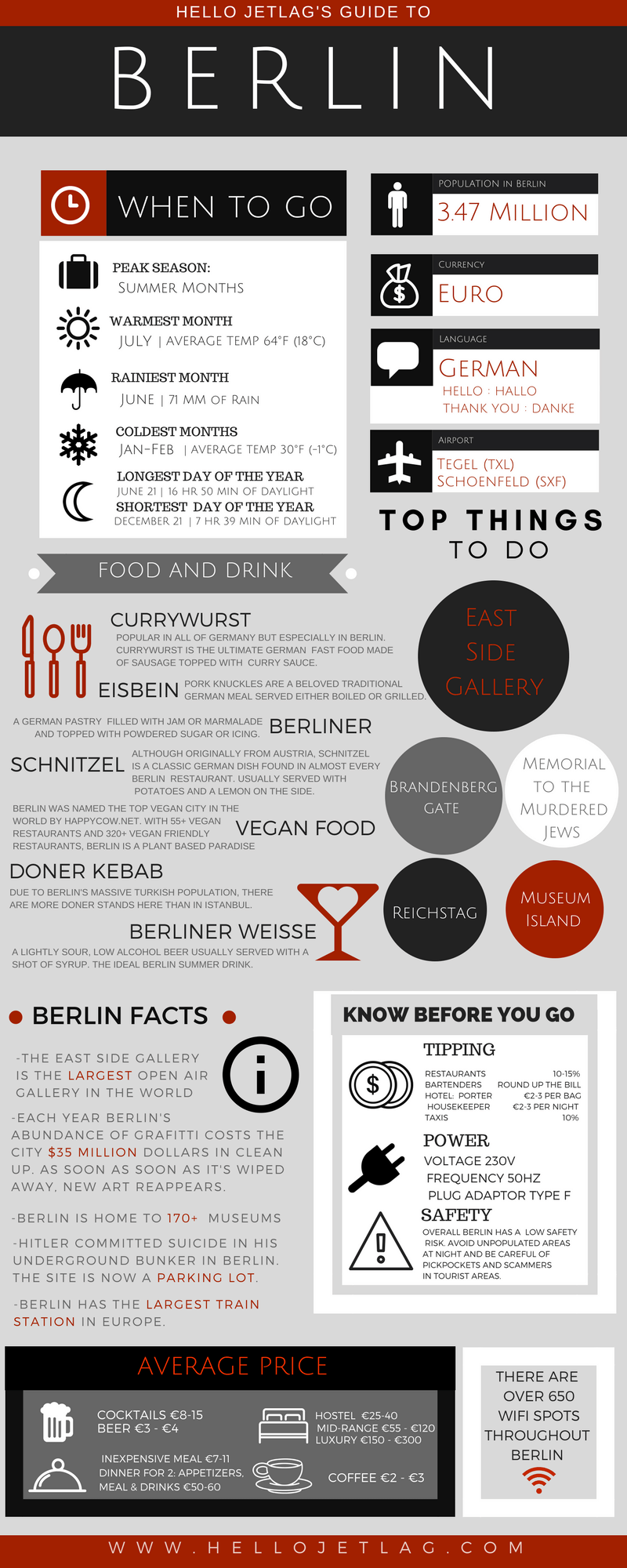
Disclaimer: This post is not sponsored. Some of the links in this post are affiliate which means if you click them and buy something from the site, I receive a small commission (at no cost to you).
2 thoughts on “A First Timer’s Guide to Visiting Berlin // 15 Tips to Know Before You Go”
This is a definition of guide. Thanks for all information! 💛
Hi Isidora, glad you found it helpful! Thanks for your comment 🙂
Leave a Comment Cancel reply

Berlin travel guide: what to see, do and eat in Berlin
This guide is for tourists who want to visit Berlin. If you want to move to Berlin, read my moving to Berlin guide .
Visa requirements
You might need a visa to visit Germany. It depends on your citizenship:
- EU , EEA and Swiss citizens You can visit Germany without a visa. You can stay as long as you want. You can also live and work in Germany.
- Other Schengen area residents You can visit Germany without a visa. You stay in Germany for 90 days in a 180 day period. 1 If you want to stay longer , or work in Germany , you need a residence permit .
- Citizens of other countries People from certain countries can visit Germany for 90 days without a visa. Other people need a Schengen Visa to visit Germany. A Schengen Visa costs 75 €. 2 You can apply for a Schengen visa at the German embassy or consulate in your country .
Visa requirements by country – Federal Foreign Office
How to travel to Berlin
Fly to the Berlin Brandenburg airport . Use Kayak , Omio , Rome2Rio or Google Flights to book your flight.
To get from the airport to the city, you can…
- Use public transit (recommended) Take a train from BER airport to Berlin. It takes 30 to 45 minutes. Use Google Maps or BVG Fahrinfo . The airport is in zone C, so you must buy an ABC ticket. The ticket costs 4.40 €. You can buy tickets at the airport, near the train platform. You can pay with cash or a credit card. 3 Validate your ticket before you get on the train. – How to use public transit
- Take a taxi There are taxis outside the BER airport. A ride from the airport to the city centre costs at least 50 €. 4 You can also book a taxi with Uber or FreeNow . You can pay with cash or a credit card. 5
- Rent a car You can rent a car at the airport. There are kiosks for different car rental companies. You can also rent a Miles car.
By intercity bus
Intercity buses are often cheaper than planes or trains. Use Rome2Rio or Omio to buy bus tickets. Some buses let you bring a bicycle.
Most buses have free Wi-Fi, power outlets and a small toilet.
Most intercity buses arrive at…
- Berlin Brandenburg airport , 45 minutes from the centre
- Zentraler Omnibusbahnhof (ZOB), 25 minutes from the centre
- Alexanderplatz , in the centre
If you arrive at BER airport, you need an ABC train ticket to get to Berlin. It costs 4.40 €.
Intercity trains are more comfortable, but also more expensive. They arrive directly in the city centre. Most trains have free Wi-Fi, but it’s often unreliable. Some trains let you bring a bicycle.
Most trains stop at the central train station, Berlin Hauptbahnhof . This is in the middle of Berlin.
Use Rome2Rio , Omio , Bahn.de or Google Maps to find a train route. To pay less, use the Super Saver Fare or book your tickets long in advance.
By car or motorcycle
You can drive in Germany with a foreign driving licence. You might need a translation or an International Driving Permit.
Who can drive in Germany ➞
Driving in Berlin is easy, but free parking is hard to find.
Most parking spaces in the centre cost 1 € to 4 € per hour. 6 Use Parkopedia to find a free or paid parking space. Most parking spaces outside of the central neighbourhoods are free. Motorcycles can park on the sidewalk for free.
You can also park outside the city and take the train to Berlin. There are free Park and Ride (P+R) car parks . You can park your car there for free, and take the train to Berlin. You can find them on this map (in Multi-mobility), or with this list .
The area inside the Ringbahn is an environmental zone . You need a green environmental sticker to drive in this area. You can get a green sticker at most gas stations around Berlin. Motorcycles don’t need a green sticker to enter this zone.
Information about the environmental zone – Berlin.de
By car sharing
BlaBlaCar lets you ride with drivers who travel to Berlin. You meet them in one place, and drive together to another city. Car sharing is usually cheaper and faster than intercity buses, but it takes more planning.
How to get around in Berlin
How to find your way around berlin.
Google Maps works really well in Berlin. It also works offline. The BVG app and the Jelbi app let you see train schedules and buy train tickets, but it does not work offline. Maps.me and OsmAnd have offline maps and directions.
How to use public transit in Berlin
Berlin has very good public transit. It’s the best way to get around, even when you have a car. Just make sure you buy the right ticket and validate it . If you are caught with the wrong ticket, you will get a 60 € fine .
You can buy a 24 hour, 7 day or 1 month ticket. It’s cheaper than buying a ticket every time. There’s also the WelcomeCard , a ticket that gives you rebates on museums and attractions.
How to use public transit ➞
How to rent a bicycle or a scooter
This is the best way to see Berlin . Berlin is very flat and has a lot of bike paths, so it’s easy to ride a bicycle or a scooter. You can rent them for around 10 € per day.
When I have visitors, this is my favourite way to show Berlin. I take my visitors along the river Spree and the Landwehrkanal.
Where to rent a bicycle ➞
Where to rent an electric scooter ➞
How to rent a car
You don’t need to rent a car in Berlin. It’s easier to use public transit. If you have an International Driving Permit or a EU driver’s licence, you can drive in Germany.
Where to rent a car ➞
What to see and do in Berlin
Start with visitBerlin.de , WikiVoyage and Lonely Planet . To see what’s happening in Berlin, check tipBerlin and Mit Vergnügen (in German).
Main attractions
- Berlin Wall ( Berliner Mauer ) Some parts of the Berlin wall were preserved. There is preserved part of the wall and a free museum on Bernauer Straße . The East Side Gallery is another part of the wall that was turned into a gallery.
- Berlin Cathedral ( Berliner Dom ) The most famous church in Berlin. You can visit it, or relax on the grass in front of it. It’s on the museum island , close to many old museums.
- Berliner Unterwelten Bunker, tunnel and air raid shelter tours. The tours are in German, English, French, Spanish and more. I have done 3 of their tours. They are very interesting.
- Brandenburg Gate ( Brandenburger Tor ) The iconic gate on Berlin’s East-West axis.
- Christmas markets In November and December, you can visit Berlin’s Christmas markets. There are dozens of them. Many are in scenic locations. There are dozens of kiosks that sell hot drinks, food, sweets and home-made goods. The Christmas markets are open from the middle of November to the end of December.
- East Side Gallery A long mural painted directly on the Berlin wall.
- Mauerpark Every Sunday, this park hosts a big flea market and an open air karaoke. Many musicians also play music there.
- Memorial to the Murdered Jews of Europe Next to the Brandenburg gate is a large holocaust memorial and museum. You can walk through the memorial.
- Museum island ( Museuminsel ) Museum island is home to the Berliner Dom, and many of the biggest, oldest museums. If you like beautiful old buildings, it’s worth a visit.
- Oberbaum Bridge ( Oberbaumbrücke ) A beautiful bridge that goes across the river Spree. It’s right next to the East Side Gallery. You can also kayak on the Spree to get a really good view on the bridge.
- Palace of tears ( Tränenpalast ) A small, free museum about the border control between East and West Germany. It’s in the old border crossing point, right next to the Friedrichstraße train station.
- Reichstag building ( Reichstagsgebäude ) An iconic building. You can visit the cupola and the rooftop, and learn about the history of Berlin. It’s free, but you must make an appointment .
- Soviet war memorials There are many memorials to the Red Army, who liberated Berlin in 1945. There are big memorials in Tiergarten , Treptower Park , and in Schönholzer Heide . The biggest one is in Treptower Park.
- Tempelhof airfield ( Tempelhofer Feld ) This giant former airfield is where many Berliners go to relax, drink beer, skate, kite surf and cycle. It’s a great place to visit on a sunny day.
- Teufelsberg** Teufelsberg is an artificial hill. There is a cold war listening station at the top. It’s now an open air gallery with a really good view of Berlin. If you don’t want to pay to visit Teufelsberg, you can visit Drachenberg, the other hill next to it.
- TV tower ( Fernsehturm ) The TV tower in Alexanderplatz is visible from almost anywhere in Berlin. You can take an elevator to the top of the tower, and get a panoramic view of Berlin.
- Victory Column ( Siegessäule ) The Victory Column in Tiergarten sits on Berlin’s East-West axis. You can go up the tower and see Tiergarten, the Brandenburg Gate and the Reichstag building from above.
visitBerlin.de – Official website with really good information
Find events on visitBerlin.de , Facebook , and Berlin Events Weekly .
Find live music on Resident Advisor , Bandsintown , Songkick and Echtzeitmusik . @berlingig is a Telegram channel that posts cheap concerts every week.
- Berlinale film festival – February This is the third largest film festival in the world, after Cannes and Venice. You can meet movie stars, and see all kinds of films.
- Cherry blossom – April and May After the reunification, a Japanese TV channel donated 10,000 cherry trees to Berlin. Most of them were planted where the Berlin wall was. Every spring, the cherry trees bloom and cover the alleys in rose petals.
- Fête de la Musique – June 21 A music festival in the entire city. There are musicians and concerts in every part of the city.
- Zug der Liebe – End of August The Zug der Liebe is a big parade with techno, dance and a lot of happy people.
- Berlin Pride (CSD) – End of July A big LGBTQ+ parade with music trucks. It’s one of the largest Pride events in the world.
- Christmas markets – Middle of November until end of December Germany is famous for its Christmas markets. Berlin has dozens of different markets, including alternative markets like the Japanese Christmas market and the Naughty Xmas Market.
Official event calendar ➞
Public holidays in Berlin ➞
Walking tours
Guided tours are a great way to discover Berlin. Use GetYourGuide or Airbnb experiences to find walking tours, or look at this list . I highly recommend the Berliner Unterwelten tours.
Outside of Berlin
If you have a bit more time, Potsdam and Wannsee are worth seeing. You can get there by train. Potsdam is in zone C , so you need an ABC ticket.
In the last week of April, you can also see the Baumblütenfest in Werder. It’s one of the largest folk festivals in Brandenburg .
Clubs in Berlin
Berlin is famous for its techno clubs. It can be hard to get into certain clubs. Clubs don’t let everyone in. For example, they often reject tourists, big groups, drunk people, and people under 21 years old. 7
In Berlin, people don’t wear fancy clothes to go clubbing. If you dress too nice, you won’t get in. 8 Ask the locals what the unofficial dress code is.
Most clubs have a cover charge. You must pay 5 € to 15 € to get in. Clubs in Berlin stay open until the morning. The party starts late, and the busiest time is around 2AM. You can buy presale tickets for club events on Resident Advisor . When you have tickets, it’s easier to get in. 9
Find club events on Resident Advisor , or follow clubs on Facebook and Instagram.
What to eat in Berlin
Typical berlin street food.
- Currywurst – Currywurst is street food. It’s a pork sausage with a curry and ketchup sauce. It’s usually served with fries ( mit Pommes ) in a cardboard plate. Curry 36 is a good place to try a Currywurst mit Pommes . Konnopke’s Imbiss is another famous place.
- Döner kebab – The standard street food in Berlin. The best kebab places are a secret, but the worst kebabs are usually in train stations and tourist areas.
- Gemüse döner (also called a chicken döner) – A döner kebab with chicken and fried vegetables. Mustafa’s , K’Ups and Rüyam are some of the most famous chicken Döner places.
Typical Berlin dishes
Cuisine of Berlin – Wikipedia
Fleischerei Domke and Englers Unikat have cheap, traditional working class dishes. For something fancier, try Max und Moritz .
Tipping in restaurants
Most people tip in German restaurants, but it’s okay if you don’t. The waiter won’t be rude to you if you don’t tip. German waiters don’t need tips to survive, but it’s a big part of their income.
How to tip in Germany ➞
Where to stay in Berlin
There is no “down town Berlin”. There are many popular neighbourhoods, and each one has a different personality. If you stay anywhere in the Ringbahn , you should be okay.
- Hotels: Booking.com
- Hostels: Hostelworld
- Vacation apartments: Airbnb or Wimdu
- Long term apartments: see How to find an apartment in Berlin
If you are more patient, you can also use CouchSurfing and BeWelcome . People host visitors for free, and spend time with them during their visit.
Shopping in Berlin
In Germany, shops and supermarkets close on Sundays . Most restaurants, tourist attractions, Spätis and gas stations stay open on Sundays.
Always have cash with you . Some restaurants and businesses only accept cash and Girocards . Most street food kiosks and Spätis only accept cash. Cards are rarely accepted for small transactions.

If you live outside the European Union , you can get a refund for the VAT you paid in Germany. For example, if you buy a laptop in Germany and bring it home in the United States, you can get the 19% VAT back. It’s not easy to do.
VAT refund process – Federal Foreign Office
Stay connected
If you visit from another EU country, your SIM card will also work in Germany. You make calls, send SMS and use mobile data without any extra costs.
German power outlets
Germany has Type F power outlets. They have a voltage of 230V, and a frequency of 50Hz. Before you visit Germany, check if your devices will work there. You might need a travel adapter to charge your devices.
Power sockets in Germany ➞
Free Wi-Fi in Berlin
If you don’t have mobile data, you can find free Wi-Fi everywhere:
- All U-Bahn stations have free Wi-Fi. Look for the “BVG Free WiFi” network.
- Some S-Bahn stations also have free Wi-Fi. Look for the “WIFI@DB” network.
- REWE and Lidl supermarkets have free Wi-Fi. 10 Some Edeka supermarkets also have free Wi-Fi.
- Hotels and hostels have free Wi-Fi for their guests.
Map of public Wi-Fi hotspots – publicwifi.eu
Prepaid SIM cards for tourists
If you want mobile data while you visit Berlin, you should get a temporary SIM card.
There are 3 ways to buy a SIM card:
- Buy a digital SIM card (eSIM) This is the easiest way. Buy an eSIM from Airalo , and activate it when you arrive in Berlin. It’s very easy. I use it all the time when I travel. Your phone must support eSIMs.
- Get a SIM card at the airport Go to the mobile phone kiosks at the airport, and buy a SIM card. It takes 15 to 30 minutes, but it can take longer when it’s busy. Temporary SIM cards are more expensive.
- Get a SIM card at a mobile phone shop Buy a SIM card from a Vodafone, Telekom or O2 shop. Electronics stores like Saturn or MediaMarkt also sell and activate SIM cards. You must show your passport and a registration certificate to activate the SIM card, but store employees will just use your passport and the address of your hotel. 11
Google Maps works really well in Berlin. If you need offline maps, use OsmAnd or Maps.me . Google Maps also works offline , but you can’t get directions.
You should also download the BVG app or the Jelbi app to buy train tickets. They have more accurate train schedules. It’s easier than the ticket machines, and it’s in English. The Jelbi app also lets you book cars, scooters, bicycles and taxis.
Be a good tourist
You don’t need to speak German. People in the tourism industry often speak English. If you are not sure, ask first. Museum exhibitions are in German and English. Signs in tourist areas are also in English. If you want to live in Berlin , you should learn German . If you are just visiting, English is fine.
Do I need to speak German in Berlin? ➞
In Germany, tipping is optional. In general, people tip up to 10% for good service, or round the amount on the invoice.
Things you should not do
- Do not walk on the bike paths The bicycle path is usually a 1 meter wide red brick path on the sidewalk. If you walk on the bike path, cyclists will ring their bell, shout at you or even bump into you.
- Do not put your glass bottles in the trash People collect empty bottles and return them for money . Don’t make people search for bottles in the trash. Put your empty bottles next to the bin. In some parks, bottle collectors ( Flaschensammler ) will walk around and ask for your empty bottles.
- Do not joke about Nazis and the war You probably shouldn’t joke about this. It’s not funny, and it’s not original.
Berlin is a safe city even at night, but crimes still happen. Pickpockets steal phones and bags in trains and restaurants.
Cannabis is illegal in Germany . You can still buy it from dealers in parks, but it’s a really bad idea. You will get bad weed, and it’s often contaminated with chemicals.
Magic mushrooms, cocaine and MDMA are also illegal. If you buy MDMA or ecstasy in Berlin, the KnowDrugs app can help you verify what you buy.
How to buy weed in Berlin ➞
Emergency numbers in Berlin ➞
Lost things
Where to find lost things in Berlin ➞
Auswärtiges Amt ⤴
bvg.de ⤴
web.archive.org , berlin.de ⤴
berlin.de ⤴
berlin.de , hotel.de ⤴
reddit.com/r/berlin , reddit.com/r/berlin ⤴
reddit.com/r/berlin ⤴
unternehmen.lidl.de , kaufda.de ⤴
expatica.com , traveltomtom.net , teltarif.de , prepaid-data-sim-card.fandom.com ⤴

Getting to Berlin
Find out the best ways to get to Berlin from various parts of the world, including the United Kingdom , the U.S ., Canada and other European countries .
Although the capital is not as well connected as the German "business" cities, the unstoppable push of tourism has encouraged more and more companies to begin operating in Berlin.
Berlin is served by two airports: Berlin Tegel Airport is the city’s most important airport, and Berlin Sch önefeld Airport , once located in East Berlin during the Cold War.
Traveling from the United States
Although Berlin is Germany’s capital and has a population of over 3 million people, it is not considered one of the country’s major hubs; therefore, there are few direct flights between the US and Berlin . The non-stop flights depart from New York City . One stop flights are available from Chicago , Washington , from Dallas and Philadelphia .
The main airlines that fly to Berlin are the following:
- United Airlines
- Brussels Airlines
- Delta Airlines
Traveling from Canada
Air Canada Rouge offers nonstop flights between Toronto and Berlin . The connection works four times a week from June to October.
Other carriers offer stop over flights include Lufthansa , British Airways and KLM .
Traveling from the U.K.
There are various low-cost airlines that fly to the capital of Germany from the United Kingdom including the following airlines:
- Easyjet : from Bristol, Edinburgh, Glasgow, Liverpool, London Gatwick, London Luton, Manchester, Newcastle.
- British Airways : from London Heathrow
- Eurowings : from Birmingham, Edinburgh, Glasgow, Manchester, Newcastle, London Standsted and Heathrow.
Traveling from Europe
Unlike the USA, Europe is very well linked to Berlin with various low-cost carriers offering daily non-stop flights to this city.
- Ryanair : from Sevilla, Bratislava, Venice, Budapest, and a lot of other major cities.
- Find the best deals by comparing flights anywhere in the world with our search engine:
- Flight search engine - Find and compare cheap flights online.
If you have already booked your flights, check how to get to the city center from both airports:
Berlin Brandenburg Airport
If you prefer to take a train to Berlin, you can do so quite easily from London. The best option is to take the Eurostar to Brussels , then a Thalys to Cologne and then an ICE to Berlin . Although this option is more expensive than booking a direct flight to Berlin from anywhere in the UK, it is not as high-priced as you would expect.
Berlin is also accessible by car, but it might take up to a day or two, depending on where you depart from.
There are several coach companies that connect Europe’s largest cities with Berlin , including Eurolines. However, it's the slowest and most uncomfortable way to travel to the German capital .
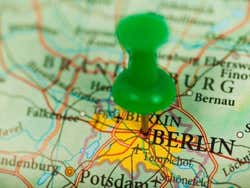
You may also be interested in
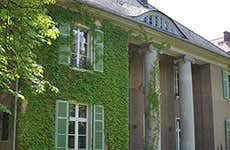
House of the Wannsee Conference
An elegant mansion built in 1915 in Wannsee, in the outskirts of Berlin, was the chosen location for the Wannsee Conference, where the SS and Nazi leaders planned the Holocaust between 1941 and 1945.
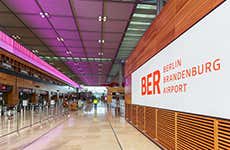
Brandenburg Airport
Located 40 kilometers south of Berlin, Berlin Brandenburg Willy Brandt Airport (BER) opened in 2020 to replace the city's old airports and become the new entry point into Berlin.
- Black Forest
- Moselle Valley
- Rhine Valley
- 48 Hour Trips
- Long Weekend Trips
- 1 Week Trips
- Beer + Drink Guides
- Christmas Markets
- Coffee Guides
- Restaurant Guides
- Shopping Guides
A First Timer’s Guide to Berlin | Everything You Need to Know
As a first-time visitor, planning a trip to Berlin can be overwhelming. From navigating the public transportation to choosing a place to stay, there is a lot of information to sift through. And that’s not even considering all of the things to see and do. I was certainly overwhelmed on my first visit in 2020 – my custom Google map had over 150 pinned things on it! I had no idea how to organize my time, and I didn’t prioritize what I wanted to do. We wound up spending a TON of time moving around on public transportation between different activities.
I learned my lesson on our second visit to Berlin in 2022. With so many things to see and do, it’s essential to have a plan in place to make the most of your trip to Berlin. I showed up with a list of the things I wanted to do, and made intentional choices about restaurants and accommodation to minimize time on public transit. I’m here to share all of my secrets with you! Whether you’re going for a couple of days or a long weekend, this blog post will cover all the essential travel tips that first-time visitors to Berlin need to know.
From the best ways to get around the city to insider tips on where to find the best food, I’ve got you covered. I want to help you make the most of your trip (and avoid the mistakes I made) with this blog post detailing all the essential Berlin travel tips, including when to visit, where to stay, what to see, how to get around, and how to arrive in Berlin. So, pack your bags and get ready for an adventure in one of Europe’s most exciting cities!
What You'll Find in this Article
The Ultimate Travel Guide to Berlin for First Time Visitors
Travel logistics, arrival to berlin.
Being the capital of Germany, Berlin is a major city with lots of different ways to arrive. For international travelers, one of the most convenient arrival options is flying. Berlin has a long history of airports opening and closing , but currently the main airport is Berlin Brandenburg Airport (code BER) which opened in 2020 in Schönefeld. To get from the airport to the city center, there is an airport express train running from station T1-2 to Berlin Central Station. In addition, the S-Bahns S9 and S45 run from T1-2 to Berlin city center.
Another popular option for arriving to Berlin is train. This is the only way I’ve ever traveled to Berlin, because I love traveling in Germany via rail. The train from Cologne takes about 4.5 hours on the ICE (express) train. The primary train company in Germany is called Deutsche Bahn . Berlin has three main train stations: Berlin Hauptbahnhof, Berlin Ostbahnhof, and Berlin Südkreuz . These train stations offer connections to major cities across Germany and Europe, making it easy to reach Berlin by train from almost anywhere.
For people looking for a more budget-friendly option, arriving in Berlin by bus is also possible. Several bus companies, such as FlixBus and Eurolines , offer regular service to Berlin from other cities in Germany. The bus station is located at the Zentraler Omnibusbahnhof (ZOB) which is located in Charlottenburg on the west side of town.
Distances in Berlin
The distances look deceiving on a map, but make no mistake – Berlin is a sprawling city. I knew it was big prior to my first visit, but it wasn’t until I started plugging the walking and biking directions into Google Maps that I realized just how big it is. Berlin spreads out across a gigantic area, so it takes a while to move around between the different attractions and neighborhoods. Make sure to always check the times before heading out, because it is likely to take longer than you thought.
When it comes to planning a visit to Berlin, I think it is really important to group activities together based on their location, and then prioritize your schedule so that you aren’t spending too much time getting around. Trust me, walking all around it will leave you feeling haggard so it’s good to balance your transit options.
How to Get Around in Berlin
Berlin has a fantastic public transportation system, called BVG . This is a fully integrated transit system, so you can bounce between S-Bahn, U-Bahn, and buses on the same ticket. While it might seem overwhelming at first, it is actually pretty easy to navigate once you get the hang of it. Download the BVG app to make things even simpler, because it will show you accurate times and alert you of any delays.
The S-Bahn (Stadtschnellbahn, or rapid railway) is a suburban rail network that connects the central Berlin with the surrounding suburbs. The U-Bahn (Untergrundbahn, or underground railway) is a metro system that runs both above and below ground. This is a quick and convenient way to travel around the city center. The bus network is extensive and covers most of the city. Buses are a good option for reaching places where the train does not go.
Berlin is divided into different fare zones with the basic fare set at €2.90. The price increases if you travel to more than one fare zone. There are also different kinds of travel cards available that can save you money if you’re planning to use public transportation a lot. Just FYI that there are no ticket barriers at stations in Berlin, so you can board trains and buses without showing a ticket. It’s an honesty based system, in which you need to validate your ticket once on board. Ticket checks are fairly common, albeit random, and the fine is high for fare-skippers.
Personally, my favorite way to get around in Berlin is by bicycle. This is the primary way I get around in Cologne too, because it is incredibly easy and fast with well-marked bicycle lanes that make even novice riders feel confident. Most bicycle rentals start at 5 EUR per day with the bike-sharing programs like Nextbike . There are stations throughout the city, making it super simple to pick up and drop off the bikes.
When to Visit Berlin
Berlin can be enjoyed year-round; however, the best time to visit Berlin depends on your personal preferences and interests. If you’re looking to avoid the crowds and save money, visiting during the off-peak seasons like the fall and winter can be an advantage. During these seasons, you’ll have a better chance of getting discounted hotel rates and avoiding long lines at popular tourist attractions. Additionally, the fall season offers the chance to see the changing leaves in the many parks and gardens throughout the city. Of course, the weather is not ideal in winter.
If you’re interested in experiencing Berlin’s vibrant nightlife, summer is the perfect time to visit. The warm weather means that many bars and clubs have their terraces open, and the city hosts a variety of festivals and events. Personally, I am a huge fan of Christmas Markets , and I think visiting Berlin in December is magical. You’ll experience some tourist crowds at the markets, but otherwise the museums and tourist attractions should be fairly open.
Good to Know Tips
Carrying cash.
Unlike other large European countries, Germany still has a strong cash culture. The pandemic has certainly made contactless payment more common, but it is by no means ubiquitous. You shouldn’t be surprised if there are cash only places, or if bars and cafes prefer to have payment in cash. Because of this, it’s important to always make sure you have enough cash on hand or ask if they accept cards before you order.
Tipping in Berlin
Speaking of cash, it’s common to tip around 5-10% at cafes and restaurants (if the service is good). When paying with a card, you need to tell the server how much the total charge should be. They typically won’t hand you the card machine to enter the tip yourself. For example, if you want to tip 5 euros on a 50 euro bill, you would need to say “make that 55 euros, please”. In bars and nightclubs, it’s common to tip the bartender a small amount, such as rounding up to the nearest euro. When it comes to taxi rides, tipping is not common. It’s not considered necessary, but rounding up to the nearest euro or leaving a small tip will be appreciated.
In Germany, Sundays are quiet. Virtually all shops, supermarkets and even some bars and restaurants close on Sundays. It is really meant to be a rest day. While many tourist attractions, such as museums, are likely to be open, you’ll want to be cognizant of Sundays in your trip planning. Thankfully, there are some special events that only happen on weekends, such as flea markets in Mauerpark or Boxhagener Platz.
What to Eat in Berlin
You will be spoiled with great restaurant choices in Berlin – there are so many delicious places to try! I would definitely recommend trying some street food for lunch at least one of the days, such as currywurst, döner, or falafel. For dinner, making a reservation is typically recommended, especially if you want to go somewhere a little bit nicer. I summarize all of my favorite Berlin restaurants in a separate blog post, perfect for foodie travelers looking to enjoy the best food that Berlin has to offer.
Where to Stay in Berlin
When it comes to accommodation, there are a wide range of options to choose from, including hotels, hostels, and apartments. Berlin has a lot of issues related to short-term vacation rentals like AirBnb and there are a number of somewhat arduous regulations . As such, I would recommend opting for a hotel or hostel. Thankfully, Berlin is absolutely full of stylish hotel choices ranging from budget to luxury. Depending on your budget and preferences, you’ll be able to find something that suits your needs.
On a short visit, I would recommend choosing a location strategically based on what you want to see and do in Berlin. This will help you cut down time traveling around on the metro. Personally, I think Mitte or Friedrichstadt would be good choices. These aren’t exactly the coolest neighborhoods to explore, but they are really central and well-connected. Another option, especially on a multi-day visit like a long weekend , is to switch hotels. This will give you the chance to see different corners of the city. I did this on our second visit to Berlin, and I really enjoyed it.
What to See in Berlin on Your First Visit
Historical attractions.
Steeped in important history dating back hundreds of years, Berlin is a city for culture vultures with a seemingly endless number of historical attractions to visit. On your first visit to Berlin, I definitely recommend exploring some of the culturally significant places, such as the Berlin Wall Memorial, East Side Gallery, and Reichstag . Berlin is the birthplace of some of the world’s most influential art movements. At the same time, Berlin was at the center of some of humanity’s darkest moments. I highlight the best historical attractions in Berlin in a separate blog post.
On our first visit to Berlin, my husband and I were overwhelmed by the sheer number of museums to visit in Germany’s capital city. With more than 150 museums, Berlin is a treasure trove full of fascinations for any interest. There is something to suit everyone! A few of my favorite museums in Berlin include:
- Jewish Museum
- Topography of Terror
- Memorial to Murdered Jews Visitors Center
The Museum Pass program is an excellent way for visitors to experience some of the city’s most popular museums all on one pass. Costing €29 for adults, the pass is valid for 3 consecutive days and gives you access to 50 different museums throughout the city. It also eliminates the hassle of having to wait in line to purchase tickets and ensures that visitors will have guaranteed admission to each museum.
Cool Neighborhoods
One of the coolest parts of Berlin is the dynamic neighborhoods. Each corner of the city has a slightly different vibe, and it feels like a patchwork of fascinating places. As a first-time visitor, it would be a shame to stick only to the central areas. Dive into the neighborhoods to discover some of the quirky characteristics that locals love about Berlin. A few neighborhoods that I think would be worthwhile as a first time visitor are highlighted below.
Neukölln is a popular neighborhood for foodies and nightlife lovers. There are tons of cool bars and restaurants in this area, and it would be a great place to go out for a night. Neukölln will give you a sense of the hip and alternative scene that Berlin is so well-known for. For dinner in Neukölln, grab Turkish cuisine. Follow your nose or look for the spots with a line, because locals always know best!
Prenzlauer Berg is a vibrant neighborhood known for its bohemian atmosphere and lively arts scene. This neighborhood is a popular destination for tourists and locals alike. With its tree-lined streets, charming cafes, and independent boutiques, there is a unique blend of history and modernity in this neighborhood. Prenzlauer Berg is also home to a number of excellent restaurants, bars, and cafes, offering a wide variety of cuisines and flavors.
Friedrichshain has an alternative feel to it with lots of street art, hidden gems, and unique shops. There are a number of nice coffee shops around Friedrichshain, which I summarize in my Berlin coffee shop guide . You’ll also find a number of cool second-hand boutiques in Friedrichshain, if you want to dig for amazing vintage clothing and accessories.
Do you have questions about visiting Berlin? Comment below!
Further reading....

4 Days in Berlin: The Perfect Long Weekend Itinerary

15 Unique and Cool Things to Do in Berlin

Ultimate Coffee Lovers Guide to Berlin’s Best Specialty Coffee
Mackenzie jervis.
Berlin is one of my favorite cities in Europe. There’s so much history as well as new things to do that I could spend a lifetime just wandering!
Leave a Reply Cancel Reply
Save my name, email, and website in this browser for the next time I comment.
Where to Find the Best Restaurants in Cologne for Foodies
Everything you need to know about traveling in rothenburg ob der tauber, meganarz.travels.

Travel Europe on a Budget
The Savvy Backpacker
City Guides .\33 a132798-3f3b-4585-954d-7e70cf863447{fill:#231f20}
Berlin travel guide — how to visit berlin on a budget.
Our guide to getting the most out of your trip to Berlin — including plenty of budget-friendly travel tips.
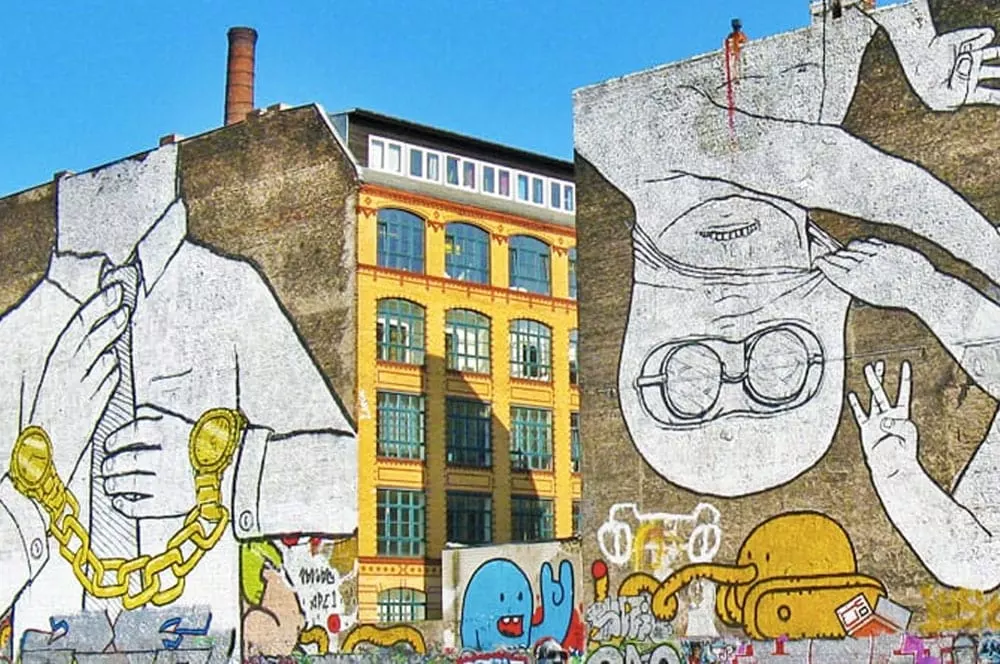
What makes Berlin so great? Berlin’s mayor said it best, “Berlin is poor but sexy.” I think that really sums up Germany’s capital city. Our Berlin Travel Guide will help you make sense of this crazy city while sticking to a backpacker’s budget.
What You’ll Find in This Berlin Travel Guide
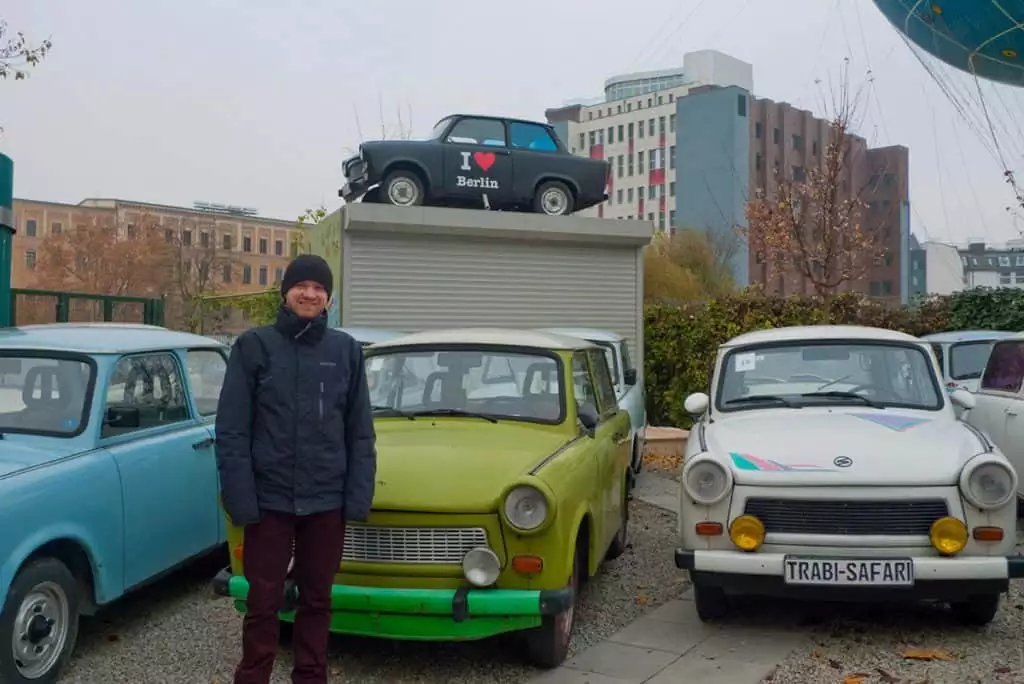
- How Much to Budget to Visit Berlin
- How Long To Visit Berlin
The Good and Not-So-Good Things About Berlin: A Quick Overview
- Berlin’s Must-See Sights and Attractions // Neighborhood Guide
Cheap Eats and Drinks
Best berlin hostels, berlin nightlife.
- More Resources to Help You Plan Your Visit on a Budget
- Public Transportation
A bit of background of modern Berlin: After the fall of the Berlin Wall, people flooded into East Berlin (the part that was controlled by the Soviets). What did they find? Abandoned buildings. These cheap (and sometimes free) houses/workspaces attracted artists, musicians, and other creative people from all over the world because they could live there for practically nothing. This also injected a youthful, anything-goes spirit into the otherwise drab city.
Then Berlin got popular… so the city isn’t as cheap as it once was. But it’s still much cheaper than other major European cities. Luckily, the city still holds on to its youthful and creative spirit.
How Much to Budget to Visit Berlin
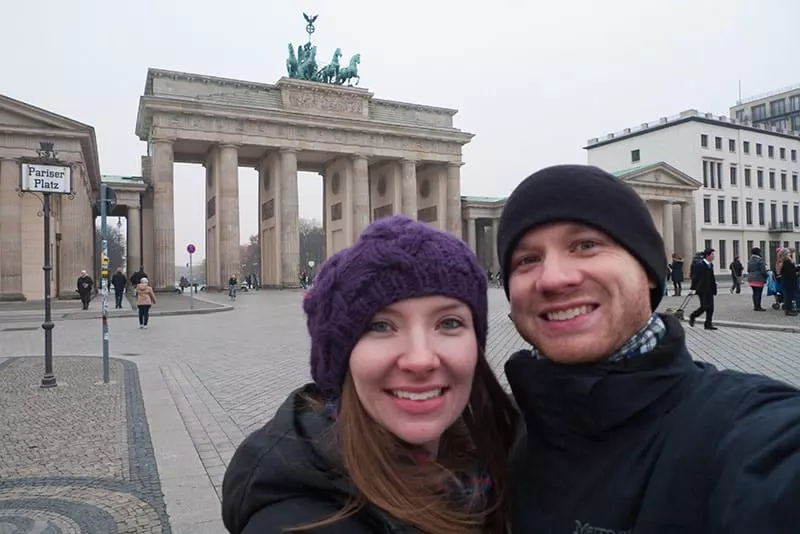
Alcohol is cheap, food is affordable, and accommodation is very reasonable — which is why Berlin is such a hotspot for artists, students, and budget travelers.
We recommend budgeting €35-€60/day if you’re on a backpacker’s budget. That said, if you stay in a hotel/rental apartment and eat out a lot then you’ll want to budget more. Visit Booking.com to see current hotel rates.
We suggest checking out our Berlin Price Guide for a more in-depth cost breakdown to help you better budget your trip.
How Long to Visit Berlin: 4+ Days
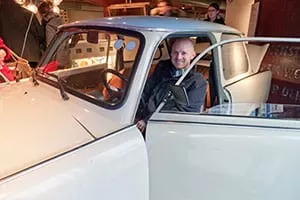
Berlin has a ton of stuff to do but the city is very spread out — so you’re going to want to give yourself plenty of time to explore. You could easily spend a week in Berlin, but we recommend at least four days.
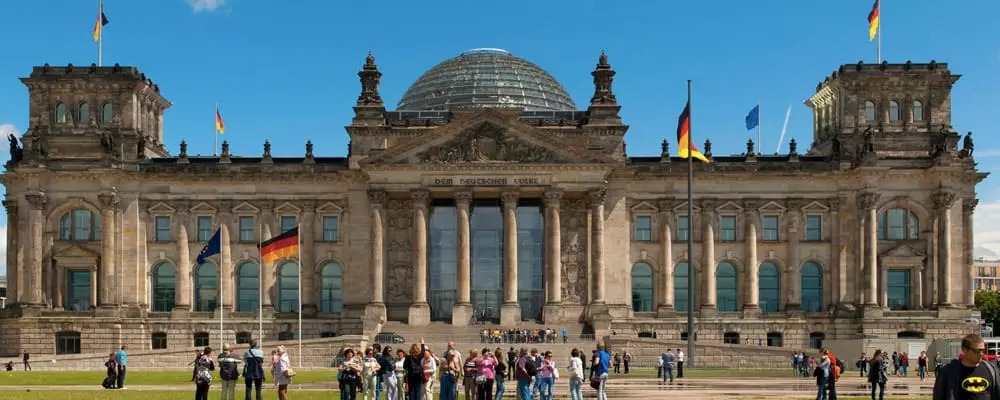
There are so many amazing things about Berlin, but there are a few things that aren’t so great — just like any city.
- Museums like crazy : Berlin has sooo many world-class museums that feature everything from ancient to modern. Its “Museum Island” has five world-renowned museums and the island itself is a UNESCO World Heritage Site. Bottom line, you’ll find something that interests you.
- Green space : Berlin has more green space than just about any city in Europe. And Germans appreciate their parks, so you’ll find tons of people relaxing outside when the weather is nice.
- A mixture of a city: We allude to this in the “not-so-good” section, but the city’s architectural mix is fascinating. On one hand, you have plenty of boxy utilitarian buildings left over from the Communist era. On the other hand, you have older and more ornate pre-war architecture (that survived the war or was rebuilt). And then, you have a lot of new construction that has gone up in recent years that are ultra-modern.
- Biking: Berlin has done a great job making sure the city is bike-friendly. You’ll find plenty of dedicated bike lanes as well as free/cheap bike-sharing programs.
- This attitude is also one of the reasons there are so many subculture groups in Berlin — you’re free to do what you want. This is also a reason why there is such a strong LGBT community in Berlin.
- Berlin also has plenty of bars, cafes, beer gardens, jazz clubs, and just about anything else you can imagine.
- The prices : Beer is cheaper than water. Eating cheaply is easy. Hostels are cheap. Rental apartments are in abundance (and they’re cheap, too). The public transportation is… it’s actually kind of expensive (you can’t win them all).
The Not-So-Good
- That also means the city isn’t very walkable — public transportation is great, though.
- It’s not “traditional” German: Most people imagine old-world Germany when they think about Germany… but Berlin is largely modern because it was virtually destroyed during WWII. Berlin is pretty drab — except for the colorful graffiti that covers nearly every inch of the city (which is actually pretty cool). In fact, the city is under constant construction, so you’ll see a lot of cranes and construction sites all over the city.
- Cold winters: Berlin’s winters are long, cold, and dreary.
Berlin’s Must-See Attractions & Neighborhood Guide
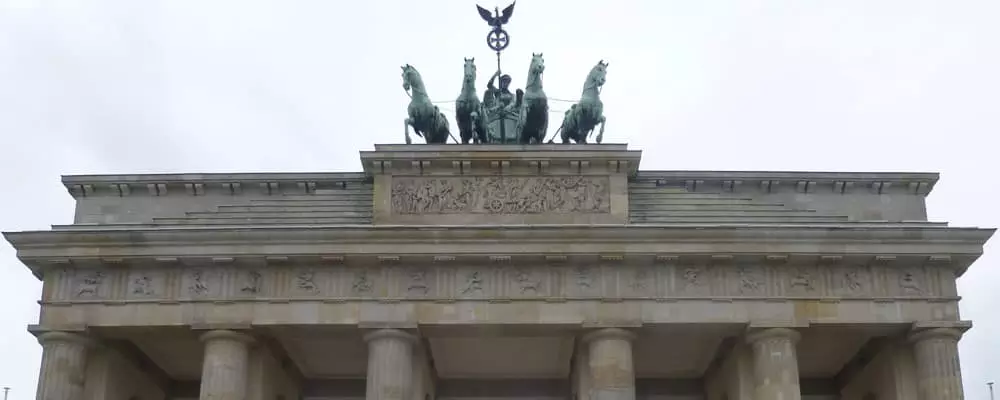
It’s no surprise why Berlin is such a popular destination as it is packed with things to do. We’ve listed many of the must-see sights according to their neighborhoods.
Mitte Neighborhood Overview
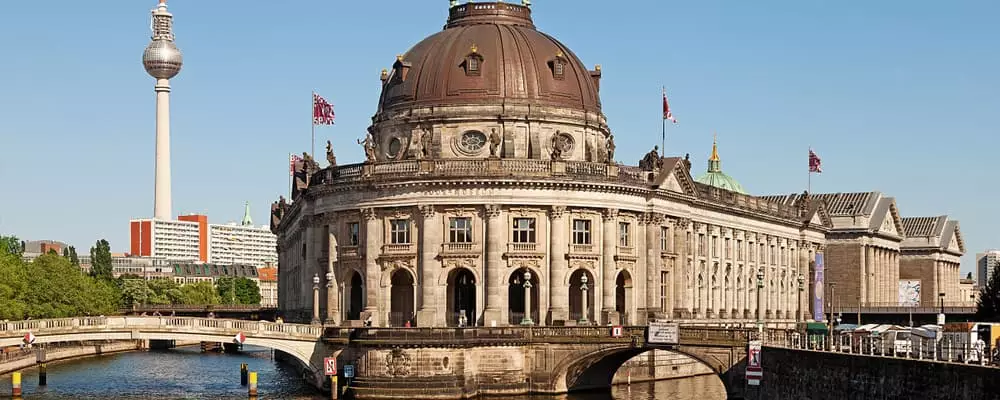
Mitte means “the middle” and it’s Berlin’s historical center… so it’s essentially the center of the city. This is where most of the popular sights can be found.
Of particular note is Museum Island — a small island in the Spree river that’s home to multiple museums.
The Mitte has a bit of everything — new, old, and futuristic. In addition to the museums, you’ll find shopping, cafés, restaurants, bars, clubs, universities, and a lot of other things to experience. It’s also the most “touristy” so you may want to stay in a different part of the city to get a more authentic Berlin vibe.
Pergamon Museum

The Pergamon Museum, which houses an impressive collection of artifacts of the ancient world, is Berlin’s most prominent cultural and tourist attraction.
It is currently undergoing a major renovation so the museum’s main attraction, the Pergamon Altar, is closed until sometimes in late 2019. The museum will be in various states of renovation until 2025 but the Pergamon is still worth visiting as there is still plenty to see.
- Admission: €12
- Visit Website
- See On Google Maps
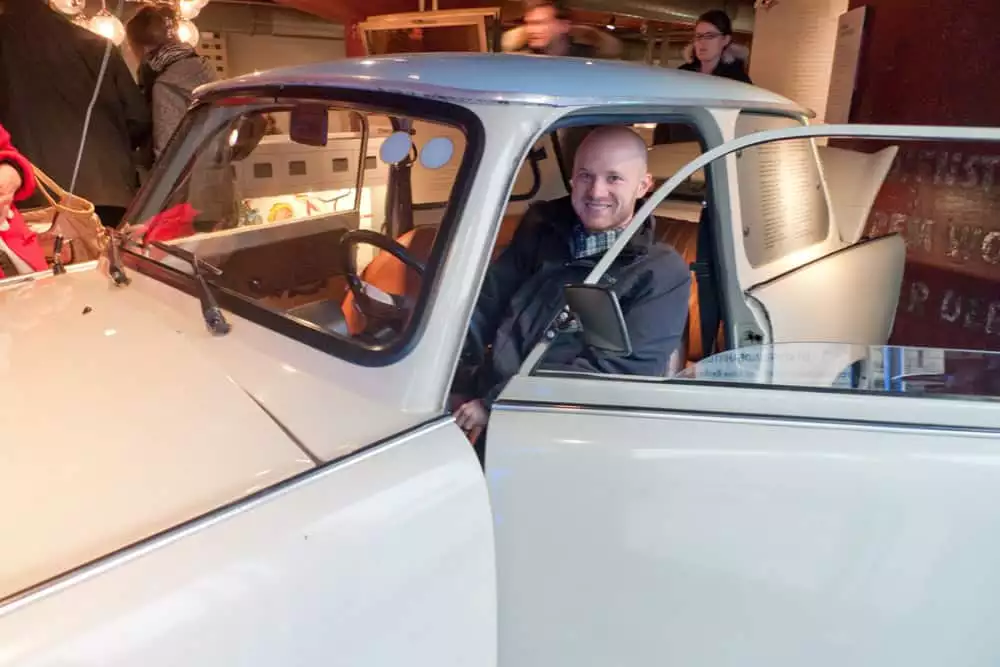
The DDR Museum is a quirky museum that chronicles the daily lives of people living in communist-era East Berlin. It has a ton of fun artifacts from that era, and it does a good job of comparing the lives of citizens in the West and East. It’s also a very interactive museum, so it’s a nice change of pace from Berlin’s other “heady” museums. I highly enjoyed my visit.
- Admission: €6
Hamburger Bahnhof Museum
Housed in a former train station, this is the place to visit if you’re into modern and contemporary art. It features art from Andy Warhol, Cy Twombly, Robert Rauschenberg, Roy Lichtenstein, Anselm Kiefer, Joseph Beuys, and many other notable artists.
- Admission: €14
The Reichstag
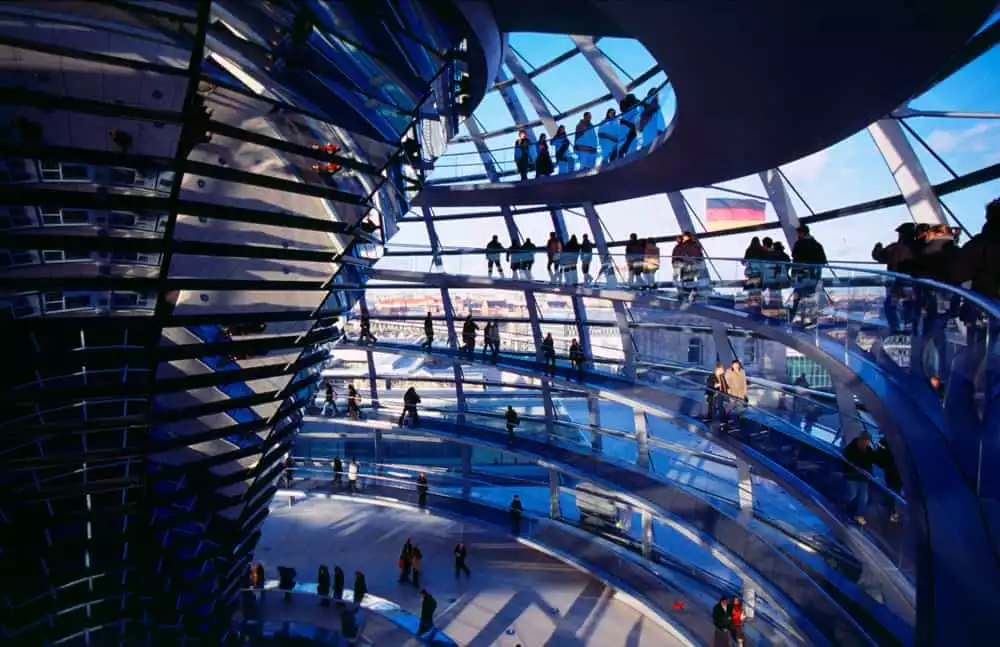
Dating back to 1894, the Reichstag has had a tumultuous history — it’s been burned, bombed, and abandoned but it’s been rebuilt and now it serves as the home of Germany’s parliament. There is a large glass dome at the top that you can climb to get amazing 360-degree views of Berlin and down into where the parliament sits.
Admission is free, but you must make reservations online. (You might be able to get tickets at the visitor’s desk, but booking online is the best option.)
Topography of Terror Museum
This is the site where the Nazis planned a majority of their crimes between 1933 and 1945. The buildings were destroyed at the end of the war but were rebuilt as a museum documenting Nazi crimes.
- Admission is Free
Memorial to the Murdered Jews of Europe
Also known as the Holocaust Monument, this monument is made up of 2,711 concrete columns that form a maze-like memorial. The monument is open 24/7.
German Historical Museum
Germany has a long and interesting past. This museum does a great in-depth job of capturing over 1,500 years of German history from its origins to the end of the Cold War.
- Admission: €15
Berlin Wall Memorial
Located in the middle of Berlin where East and West were once divided, this open-air exhibition chronicles the history of the Berlin Wall. The memorial still has almost a mile of the original wall for you to see and learn about how the wall affected Berlin citizens.
- Admission is free
Note: If you’re looking for Berlin’s iconic street-art covered walls you should go to the East Side Gallery instead. The Berlin Wall Memorial covers the history of the wall.
Brandenburg Gate
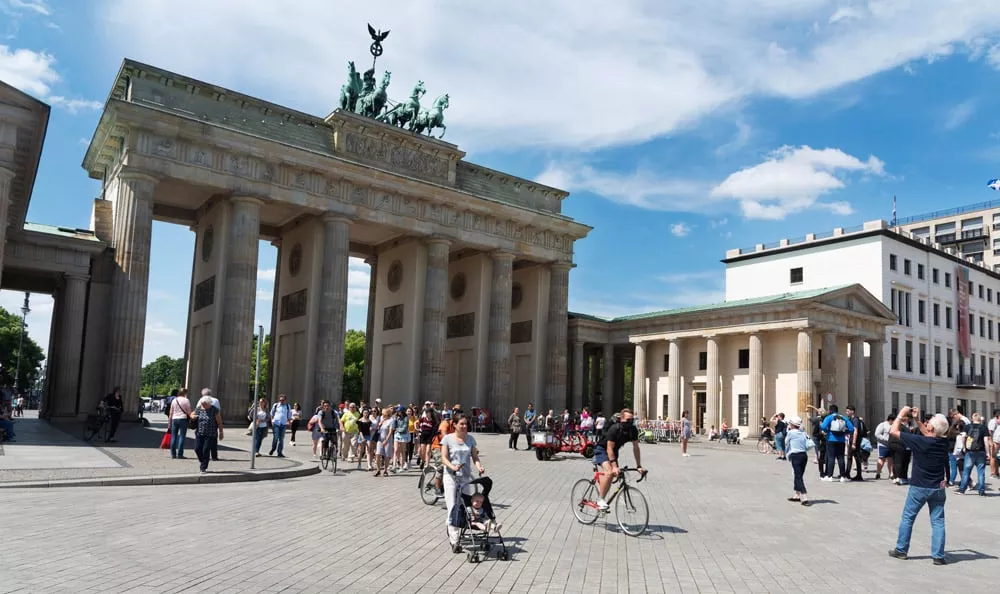
Constructed way back in 1791, the Brandenburg Gate is easily Berlin’s most famous landmark. I used to be the border of East and West Berlin, but now it represents the reunification of Germany.
Fernsehturm (TV Tower)
This weird-looking TV tower was built in the late ’60s in East Berlin, and it continues to be the tallest building in the city. While touristy, you can go to the top to get a nice 360-degree view of the city. There is also a bar and restaurant at the top if you wish to linger a little longer.
- Admission: €13-€20
Berliner Dom Cathedral
The Berliner Dom is not only Berlin’s most grandiose church, but it’s also easily one of Berlin’s most elaborate buildings. It has an impressive organ with 7,000 pipes, and you can visit the top of the dome for great city views (if you can climb all the steps).
- Admission: €7
Neuse Museum
This once bombed-out building now houses one of the finest collections of artifacts from the ancient world. Most famous is the bust of Nefertiti. The museum also has plenty of mummies, jewelry, sculptures, and other interesting artifacts.
Neue Wache and Babelplatz
I combined these two sights because they’re both quick visits and they’re very close to each other. Neue Wache is a small but powerful memorial for the Victims of War and Dictatorship.
Across the street is Bebelplatz. There you’ll find a small glass window on the ground that looks down into a library full of empty white shelves. This memorializes the spot where Nazi students burned over 20,000 “un-German” books.
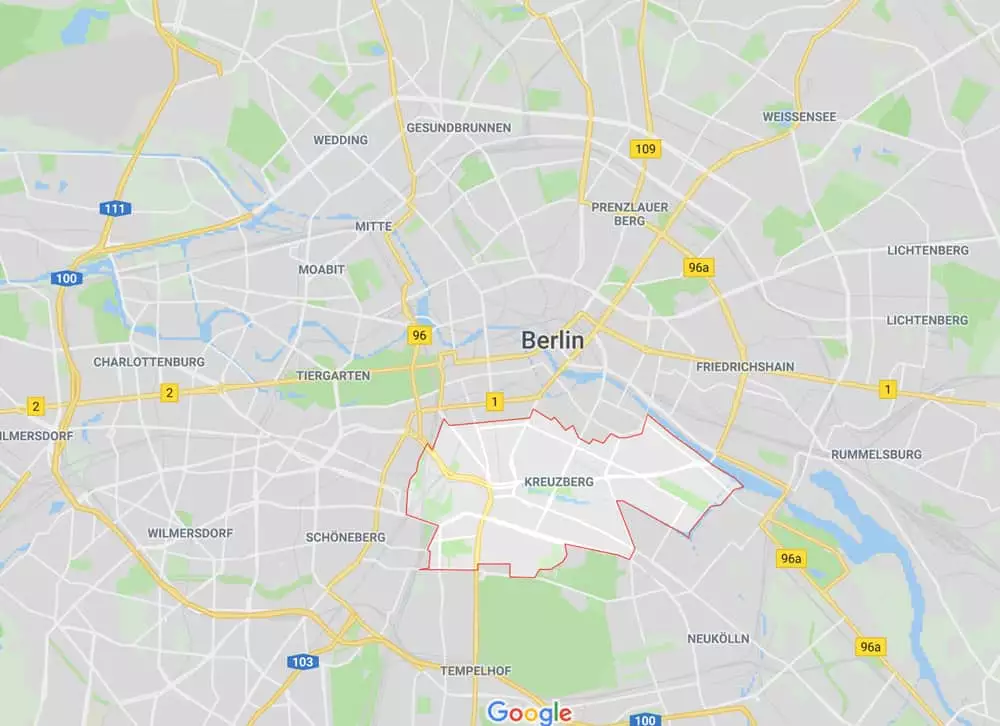
Kreuzberg was once home to immigrants, hippies, LGBTQ individuals, artists, squatters, punks, and bohemians. The neighborhood has gentrified, but it still holds on to its counter-culture roots.
There is still plenty of youthful energy pulsating through the streets, cafes, vintage shops, great bars, hip restaurants, and late-night food stalls. It’s a great area for nightlife so you can get a snack after dancing until 3 am. The neighborhood is also covered pretty much entirely in graffiti as well as amazing street art — which adds to the ambiance.
German Museum of Technology (Deutsches Technikmuseum Berlin)
This museum exhibits a large collection of historical technical artifacts — including 25+ full-size airplanes, boats, a Viking ship, u-boats, WWII rockets, trains, and more.
- Admission: €8
Jewish Museum
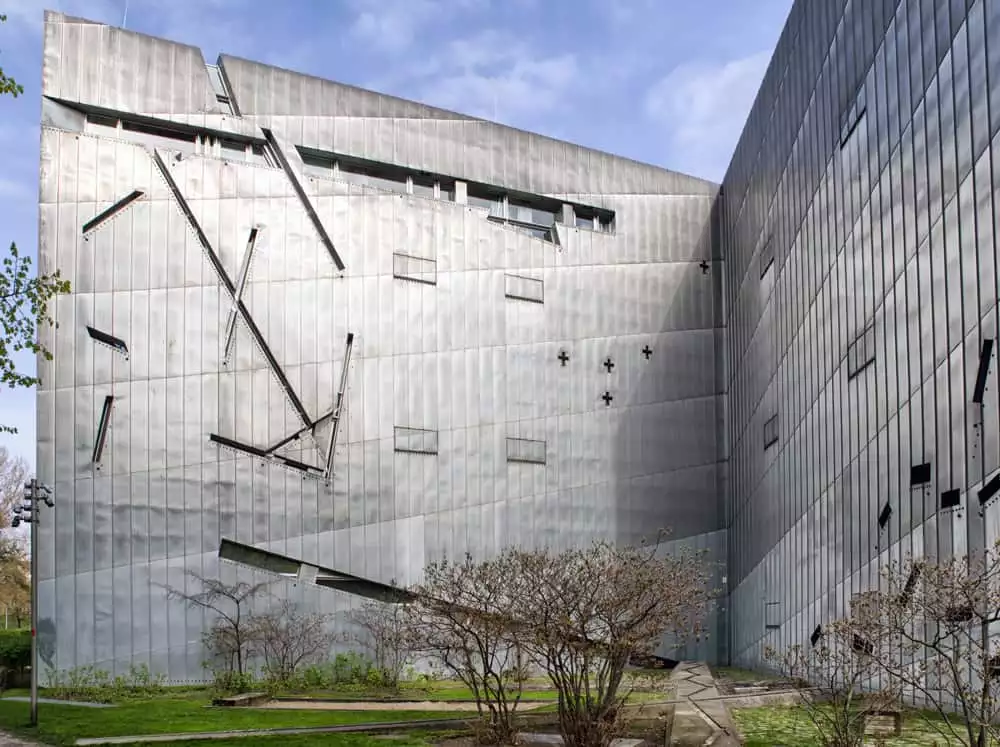
Housed in a very striking glass building, the Jewish Museum has exhibits that trace two millennia of German- Jewish history. The architecture of the building has become an exhibit in and of itself.
Checkpoint Charlie
This is a legit tourist trap that isn’t even at the location of the real Checkpoint Charlie… but you’ll probably end up walking past it anyways. Take a photo as you walk by but skip the museum because it gets bad reviews and is a waste of money.
Friedrichshain
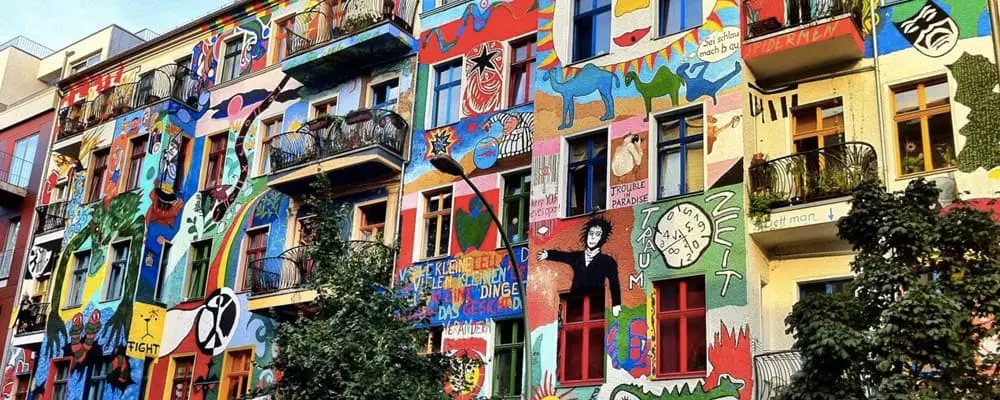
With a vibe very similar (yet slightly more alternative) to Kreuzberg, Friedrichshain is a trendy neighborhood popular with artists, students, and other young hip people. Building-size street art can be found everywhere and most people come to visit the famous East Side Gallery. The neighborhood is also home to many bars, boutiques, cafés, and markets — and it has some of the best nightclubs in the city.
East Side Gallery
This open-air gallery features street art that’s been painted on the longest remaining portion of the Berlin Wall. The wall features 101 large-format paintings. It is one of Berlin’s most visited sights so fire up your Instagram and head out there.
Stasi Museum
This museum details the exploits of the East German secret police — The Stasi. These guys spied on 6 million of East Germany’s 18 million citizens. They kept detailed records on its citizens via phone taps, hidden microphones, photographic surveillance, and multiple other methods.
We recommend taking the free guided tour in English which occurs at 3 pm from Thursday to Monday.
- Admission: €6
Prenzlauer Berg
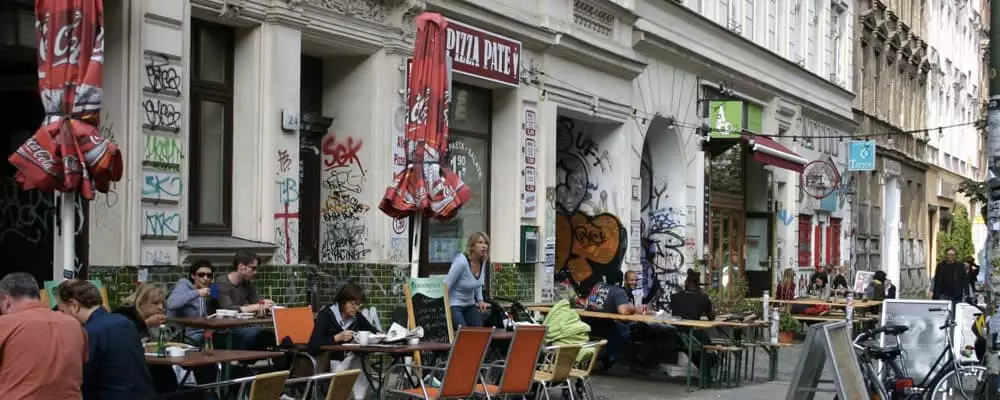
Prenzlauer Berg is a nice mix of university students and young families. You’ll still find plenty of late-night bars and cafés but much of the club-scene has moved elsewhere. People joke that Prenzlauer Berg is where the hip kids from Kreuzberg go to have kids.
That said, the neighborhood still has a cool vibe and you’ll find plenty of great restaurants, markets, beer gardens, and excellent coffee shops. The neighborhood also has plenty of trees, parks, and green space.
Mauerpark translates to Wall Park — which makes sense because this used to be the “deadman’s land” between the walls of West and East Berlin. While not particularly pretty, the park is now a favorite for tourists and locals.
On a nice day, the park is packed with people drinking, playing soccer, and often karaoke-ing. The party often goes late into the night. The park also hosts a flea market every Sunday where you can sometimes pick up some good deals.
City West (Charlottenburg-Wilmersdorf Neighborhood)
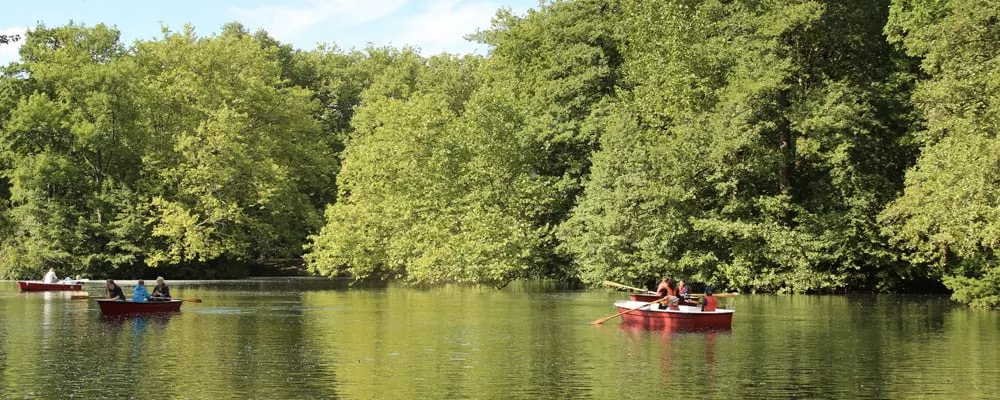
City West encompasses the Charlottenburg-Wilmersdorf as well as the expansive Tiergarten park. This area used to be West Berlin and is now an affluent area and shopping district. It also has many of Berlin’s popular sights as well as entertainment options, markets, bars, and restaurants.
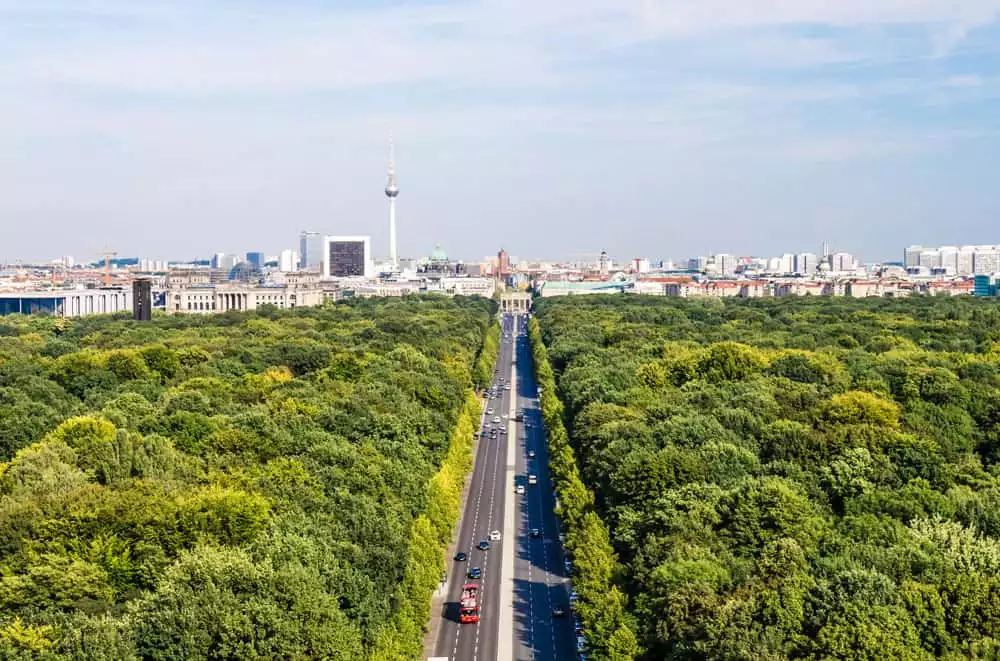
This massive park is located in the heart of Berlin, and it’s a favorite place for locals to get away from the city. In addition to multiple monuments and statues scattered throughout, the park also has ponds, gardens, vast lawns, plants, trees, and walking paths.
It is also home to the Berlin Zoo.
Olympiastadion
This huge stadium was built for the 1936 Olympics hosted in Germany and it’s where Jesse Owens won four gold medals (much to Hitler’s dismay). It was renovated in the early 2000s and it currently holds sporting events (mainly soccer) and massive concerts.
KaDeWe Department Store
Dating back to 1907, KaDeWe is the largest department store in Europe and this is the place to go if you want to spend some cash since it mostly carries high-end and luxury items. There is a famous (and expensive) gourmet food court and grocery that offers a ton of dining options.
Charlottenburg Palace (Schloss Charlottenburg)
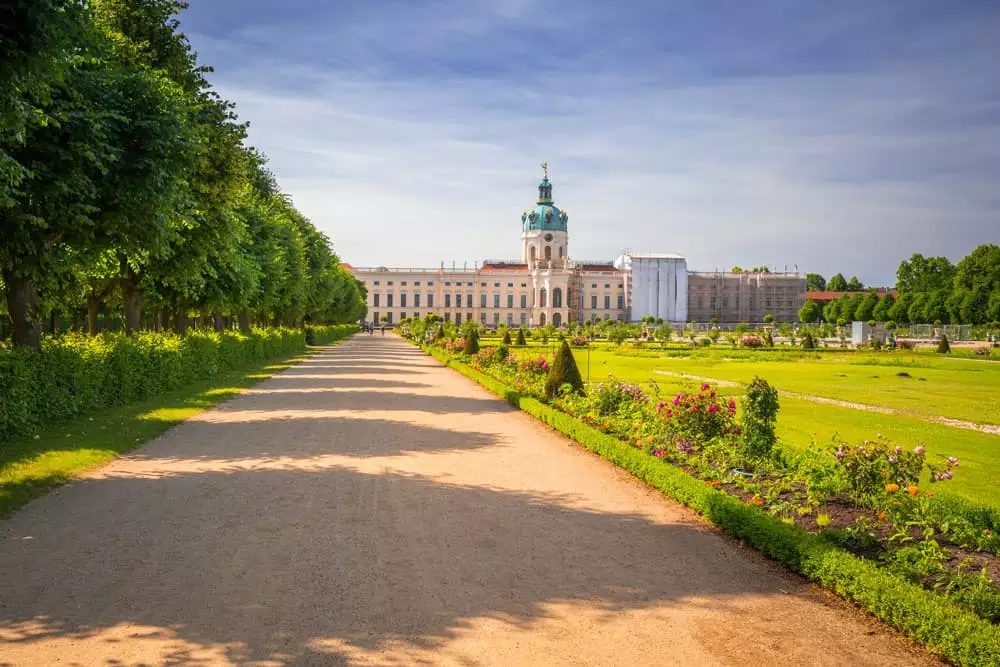
This grand royal palace was finished in 1699, and it’s the largest palace in Berlin. A lot of people find the inside of the palace to be fairly underwhelming but the grounds and gardens are beautiful. It’s a great place to stroll through on a nice summer afternoon (you might want to skip this if the weather isn’t nice).
What To Eat and Drink In Berlin
Berlin has an excellent food scene and there are plenty of budget options as well. Berlin also has a big street food scene so you can find vendors selling all kinds of things throughout the city.
In addition, Berlin has a very hip and international food scene so you can find just about anything you’re looking for. That said, we wanted to list a few local dishes that you might want to check out for yourself.
Currywurst is a true Berlin original and you’ll see it being served up by street vendors all across Berlin. Invented in 1949, this local favorite is a bratwurst covered in a mixture of ketchup, curry powder, and Worcestershire sauce.
Like spicy food? Order your currywurst ‘scharf’ — which means spicy.
Great Places To Get Currywurst:
- Curry 36: Classic spot. Super popular. Always rated as one of the best in Berlin. See On Google Maps
- Curry 61: Another super popular spots for Currywurst in Berlin. They even have veggie currywurst. See On Google Maps
- Konnopke’s Imbiss: Popular for a reason. Always a long line. See On Google Maps
- Curry Baude: Good, cheap, and fast. See On Google Maps
- Curry Mitte: Cheap and tasty. Currywurst, french fries, and a drink for under €6. See On Google Maps
Ahh yes, the dependable and delicious bratwurst. These are sold by street vendors and restaurants all across Berlin. There are even guys called Grillwalkers who walk around with portable grills.
But honestly, most brats are pretty much the same in terms of quality so its the atmosphere that really makes a brat great.
Solid Places To Get Bratwurst:
- Anything From The Currywurst Section: All the best currywurst begins with quality bratwurst so every place on that list will be good.
- Prater Beer Garden: Great beer garden that has solid brats. See On Google Maps
- Dicke Wirtin: Classic German restaurant. See On Google Maps
- Gasthaus Krombach: Another classic German restaurant. See On Google Maps
Döner Kebab
Berlin has a huge Turkish population so it’s easy to find lots of delicious Turkish food — notably Doner Kebabs. Kebabs are cheap and filling so they make an excellent budget meal. Luckily, you can get a very good kebab throughout Berlin but there are a few standouts that we’ve listed below.
Solid Döner Kebab Spots:
- Mustafa’s Gemüse Kebap: See On Google Maps
- K’Ups Gemüsekebap: See On Google Maps
- Mustafa Demir’s Gemüse Döner: See On Google Maps
- Döner Dach: See On Google Maps
- Rüyam Gemüse Kebab: See On Google Maps
Wiener Schnitzel
Wiener Schnitzel is a thin, breaded, pan-fried veal cutlet. So good. And it is even better with an ice-cold German beer.
Solid Schnitzel Spots:
- Max und Moritz: Old school bar/restaurant that’s been serving up tasty authentic German dishes since 1902. See On Google Maps
- Scheers Schnitzel: A no-frill, cash-only spot that serves up a solid Schnitzel for cheap. See On Google Maps
- Felix Austria: Popular casual restaurant with generous portions and friendly service. See On Google Maps
- Schnitzelei: Excellent schnitzel and they give you a free beer with your meal. It is a little corporate/modern feeling so this isn’t the old school vibe many people are seeking out (but the food is still great). See On Google Maps
- Schnitzelkönig: Huge portions and great prices. Come hungry. Local favorite. See On Google Maps
- Prater Beer Garden: Cool beer garden and they have sell schnitzel as well. See On Google Maps
- Café Restaurant Jolesch: Excellent schnitzel. Higher-end spot. Nice cocktails as well. Reservations highly suggested. See On Google Maps
One of Germany’s most beloved foods is the humble, yet hardy Spätzle — which is an egg noodle dumpling. You’ll be able to find it in just about every German restaurant.
Some Tasty Spätzle Spots:
- Spätzle Club: Large portions of delicious home-made Spätzle. See On Google Maps
- Spätzle & Knödel: These guys serve up some mean German comfort food — including excellent Spätzle. See On Googe Maps
- Schwarzwaldstuben: Relaxed bar/restaurant with Germany fare and a range of beers. Casual spot with a nice vibe. See On Google Maps
- Joseph-Roth-Diele: Cozy spot with a traditional ambiance, simple menu, and affordable prices. See On Google Maps
Königsberger Klopse
Königsberger Klopse ( meatballs in a white sauce) is true German comfort food. This is another staple that will be on the menu of just about every traditional German restaurant.
Where To Go:
Half Grilled Chicken
Berlin is also famous for its grilled chicken so you’ll find a number of places serving up grilled half-portions of chickens.
Where To Get Grilled Chicken:
- Henne: The most famous place to go for crispy chicken in Berlin. So good. Go twice. See On Google Maps
- Hühnerhaus: Excellent takeaway chicken spot. No-frills and affordable. Aways hopping for a reason. See On Google Maps
I mean, you can’t beat a giant pretzel and beer. So go find a nice beer garden and enjoy your pretzel.
Berliner Pfannkuchen
A Berliner Pfannkuchen is a traditional German pastry that’s basically a jelly-filled doughnut without a hole. Any good bakery will have multiple variations.
Where To Get A Great Berliner Pfannkuchen (& Other Baked Goodies):
- Siebert Bakery: This is the oldest bakery in Berlin and they make plenty of baked goodies. They’re still family-owned. See On Google Maps
- Bäckerei & Konditorei: Excellent Berliner doughnuts and a few other goodies. See On Google Maps
- Zeit für Brot: So many baked goods. We’re fans of the cinnamon rolls but everything is good. See On Google Maps
- Bäcker Walf: Excellent homemade baked goodies. See On Google Maps
- Bäckerei Ladewig: Local spot and everything is homemade. Family-run since 1969. See On Google Maps
Beer in Berlin
While the Bavarian part of Germany (notably Munich) is most famous for its beer, Berlin also has a thriving beer scene. Furthermore, Berlin also has a solid craft beer scene if you’re looking to expand past the standard German brews.
One of the most popular beers in Berlin is the Berliner Weisse — a sour beer with only 3% alcohol. Bars will often add flavored syrup like raspberry (Himbeersirup), or woodruff (Waldmeistersirup) which turns the beer bright red or green. It’s very tasty.
German/Berlin Beers
German beer tends to be fairly similar as they had a law called Reinheitsgebot (Beer Purity Law) that was enforced until 1993 that said beer could only be made from water, hops, and malt. So the beer was of great quality but there wasn’t much innovation.
These days many breweries still follow the Reinheitsgebot but others are starting to experiment and create new kinds of beer.
The Official Visit Berlin Website has a great guide of Berlin’s local micro-breweries. Here is a nice article from St. Christophers about nice craft beer bars in Berlin. We also like this guide from TimeOut: Berlin about their favorite bars in Berlin. Of course, these links don’t even scratch the surface but hopefully it helps get you started.
Most German grocery stores will stock multiple different kinds of beer so you won’t have to search very hard to find a drink. Plus, beer from the grocery store is cheap!

Berlin’s Beer Gardens
You can’t visit Germany without enjoying a few frosty beers al fresco and luckily Berlin has plenty of beer gardens. Low on cash? You can always buy beer from the grocery store and drink in the park.
- Prater Beer Garden: This is Berlin’s oldest beer garden and it’s also one of its biggest — it can seat over 600 people. They have a nice selection of beers, tasty snacks, and a fun atmosphere. We recommend trying the bratwurst and apple strudel. We also like how everything is self-service here. See On Google Maps
- Weihenstephaner : Located in a building that dates back to 1749, this super traditional Bavaria-style beerhall and they also have a nice courtyard. See On Google Maps
- Hofbräu Wirtshaus Berlin: Bavarian food & beer. A bit touristy and a little expensive but still a solid spot. See On Google Maps
- Schleusenkrug: This lovely beer garden is located on the edge of the Tiergarten. They might not have a huge selection of beer but the vibe is energetic and super friendly. See On Google Maps
- Café am Neuen See : This secret spot is located in a park right beside a pond so the atmosphere is very peaceful. They have a great beer selection and decent food options. Prices are reasonable. See On Google Maps
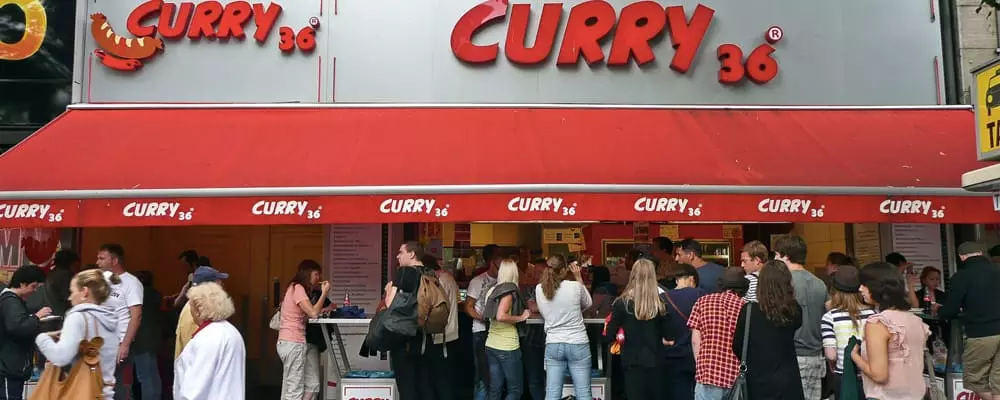
As with any other city with a youthful international population, Berlin has a solid food scene that caters to people on a budget. There are always new and exciting restaurants and bars opening up, so finding solid dining options doesn’t take much work.
Cheap Breakfast In Berlin
- Brammibal’s Donuts : Donuts, coffee, and other breakfast sweets.
- Back-Factory : Cheap pastries for a quick breakfast on the run.
- Cafe Creperie Melt : Cakes, crepes, and galettes.
- Homemade : Brunch and breakfast with plenty of vegetarian options.
- Romeo und Romeo : Lots of healthy and vegetarian options at this chilled-out spot.
Cheap Lunch and Dinner In Berlin
- Scheers Schnitzel : Tasty and affordable German classics like schnitzel.
- Curry61 : Famous currywurst and other traditional German street food.
- Tiergarten Quelle : German pub serving up traditional German dishes.
- Lia’s Kitchen : Plenty of great vegan options.
- Trattoria Portofino : Pizza, pasta, and other great Italian options.
- Flamingo Fresh Food Bar : Sandwiches, soups, and a bit of everything.
- Burgermeister : Best burgers in Berlin.
- Mabuhayt : Authentic Indonesian food at great prices.
- Patta Finest Baked Potatoes : Tasty loaded baked potatoes.
- Yarok Fine Syrian Food from Damascus : Tasty falafel and other middle eastern food.
- PHO – Noodlebar : Affordable PHO and other Vietnamese food.
Street Food, Food Halls, & Farmers Markets
- Street Food Thursday @ Markthalle Neun: This was the first major organized street food event in Berlin and it is still one of the most exciting. It attracts thousands of visitors each week. You’ll find multiple excellent food vendors, craft beer, wine, cocktails and more. Open every Thursday from 5pm-10pm. See On Google Maps
- Arminius Market Hall: Opened in 1891, this nice market hall has vendors selling local food, crafts, art, and more. See on Google Maps
- Bite Club: A cool new concept street food party located next to the Spree river in Berlin. Booze, food trucks, BBQ, DJs, and all that cool stuff. Check their Facebook page for dates and location.
- Middle-Eastern Street Food Market: At this twice-weekly (Tuesday and Friday) outdoor market you’ll find vendors selling Turkish fare, fresh produce, seafood, and other random things. See On Google Maps
- Boxhagener Platz Farmers Market: This Saturday market focuses on organic produce and a smattering of standard street food options. See on Google Maps
- Thai Park: For a truly unique experience we suggest spicing it up with authentic Thai food as this unique food market that’s been operating for more than 20 years. This area on the outskirts of Berlin has long been home to a large Thai population who would visit this park to sell their food. Then other locals started catching on to the amazing food… and now it’s super popular. You’ll have the most luck by visiting on Saturdays and Sundays in summer. View on Google Maps
- Kollwitzplatz Farmers Market: Some of the freshest food in Berlin. Open every Thursday. See On Google Maps
More Berlin Restaurant Resources
When in doubt, ask the locals! Below are a few excellent resources about food in Berlin.
- They also have an excellent list of recommended list of kebab restaurants if you’re looking for a tasty meal for around €3-€4.
- Eating In Berlin : Another excellent food blog that covers Berlin’s food scene.
- TimeOut Berlin : TimeOut always does a solid job of showcasing new and popular food/drink spots so it’s another good place to look.
- Spotted By Locals – Berlin : Spotted By Locals is a great resource that’s written by locals and expats (they also have a paid app that offers more suggestions).
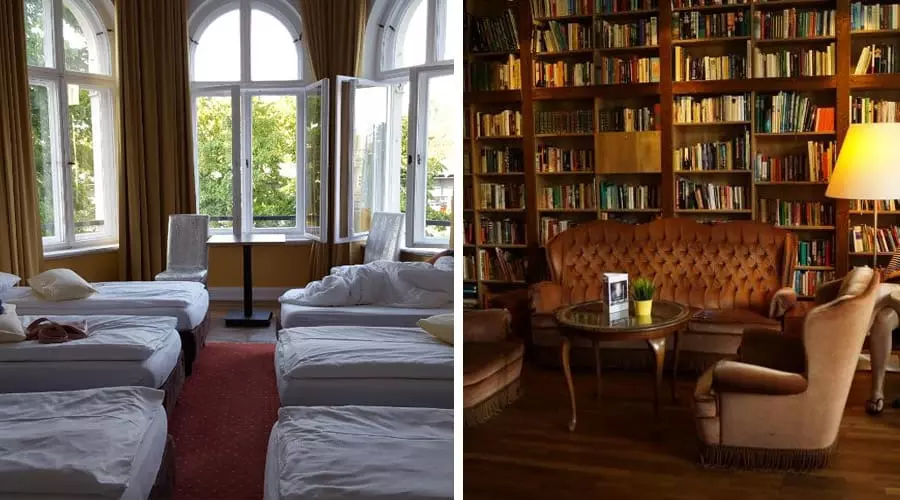
Berlin has plenty of highly-rated hostel options and they’re all priced very reasonably — an average hostel will cost anywhere from €14-€30 /night.
Personally, we use HostelWorld to book all our hostels. Here are some of the best-rated hostels in Berlin:
- EastSeven Berlin Hostel
- Wombats City Hostel Berlin
- The Circus Hostel
- PLUS Berlin
- Jetpack Alternative
- Pfefferbett Hostel
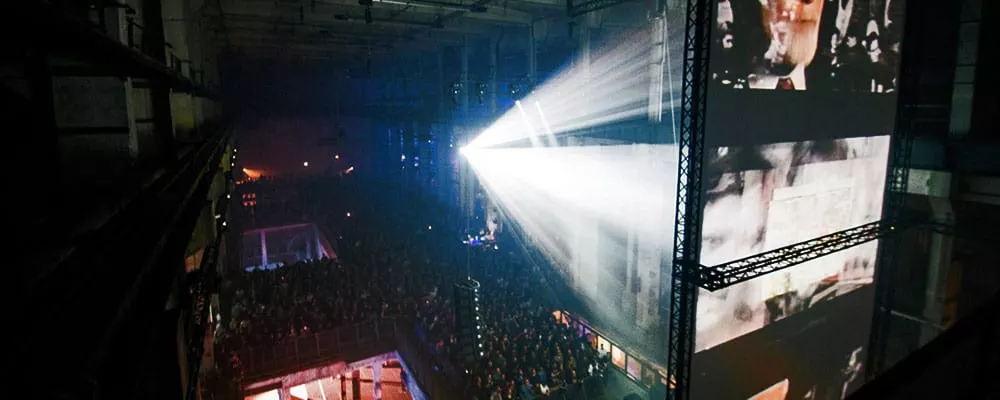
Berlin is world-famous for its nightclubs and overall nightlife scene — it’s actually one the city’s largest draws. Many of the best DJs show off their skills in Berlin; check out Resident Advisor to see where DJs will be playing.
Thrillist and TimeOut both have a good rundown of the best nightclubs in Berlin.
If you really want to learn the nitty-gritty about Berlin’s nightlife scene, check out Vice’s Guide To Berlin’s Nightlife .
By the way… getting into clubs isn’t always easy. Some clubs (i.e. Berghain) are known for turning away a majority of people. Here are some tips for getting past the notoriously finicky doormen:
- Don’t go in big groups — keep it under four people. And a group of all dudes probably won’t get in.
- Don’t show up drunk.
- Be quiet in line. Loud = no entry.
- Try to speak a little German. Even “Sorry, I don’t speak German” will help.
- Go with a local. This will make things a lot easier.
- Dress like a Berliner. Don’t dress up.
More Resources to Help You Plan Your Berlin Budget Travels
Berlin is packed to the gills with things to do… so you’ll want to do a little research before you arrive. We’ve listed a few of our favorite budget-minded guidebooks, websites, and expat blogs that you may want to check out.
- Rick Steves — Berlin (guidebook)
- Lonely Planet — Berlin (guidebook)
- Spotted By Locals: Berlin
- Berlin Food Stories
- Still In Berlin
- Slow Travel Berlin
- Travels of Adam
- iHeartBerlin
Traveling Around Berlin
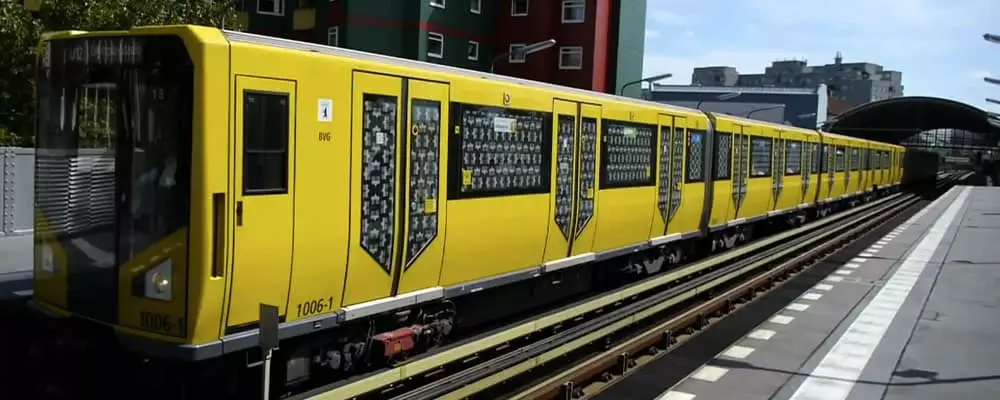
Berlin is a huge, sprawling city, so you’ll need to take public transportation. Luckily, it is plentiful; you’ll find subways, trains, trams, buses, bikes, and taxis. The U-Bahn, S-Bahn, bus, tram, and regional rail all use the same ticket. Don’t forget to validate your ticket before entering the train.
- Single One-Way Ticket: €2.80
- Short Distance (three-stop) Single One-Way Ticket: €1.50
- Day Card: €7.00
- Small-Group Ticket (for up to five people — this is the most cost-effective for three people and above): €19.90
- Bike Rental: €8-€15/day
- Bus between Tegel Airport and City Center: €2.80
- Taxi Between Tegel Airport and City Center: €25–€35
- Berlin Schönefeld Airport Express Train: €1.60
- Taxi Between Schönefeld and City Center: €50+
Practical Travel Tips
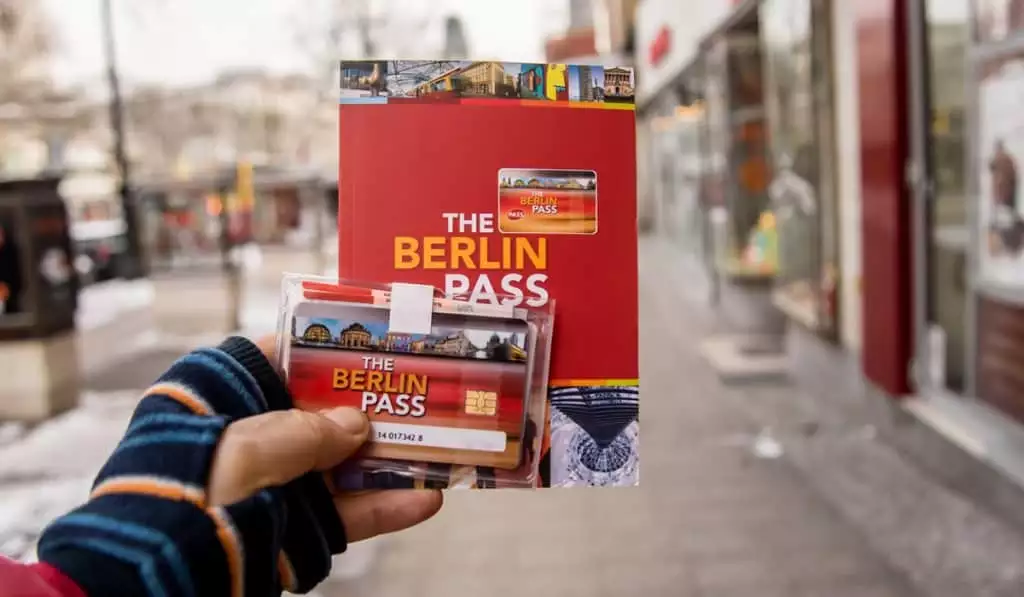
Save Money With a Berlin Pass: If you plan on seeing a lot of museums, you might consider getting a Berlin Pass . It could save you a bit of money.
Take A Walking Tour: It’s a great thing to do on your first day as it’s a good way to get orientated with the city.
There are good free (tip-based) tours from Sandeman’s New Europe and Brewer’s Berlin Tours — these tours will hit many of the highlights. If you’re looking to learn more about the alternative sides of Berlin, you should check out Alternative Berlin Tours .
Of course, there are a ton of paid tours that are led by professional guides that will give you more in-depth information. Check Get Your Guide as they have multiple walking and bike tours.
Visit Flea Markets for Cheap Souvenirs: The flea market at Mauerpark is the most famous, but it’s also the most touristy (i.e., it’s overpriced). You’ll need to venture out to find the best deals. This is a good site that lists most of the markets in Berlin.
Bring Your Student ID : Most museums have student prices (usually 1/2 price). It helps if your ID has a date on it — I was turned away for using my old ID, so your results may vary.
Winters Are Tough. Dress Warm : Invest in a legit warm coat, hat, gloves, and warm clothes if you visit in the winter. Don’t worry about fashion as everyone, including the locals, is bundled up.
Backpacking Packing Tips & Tricks
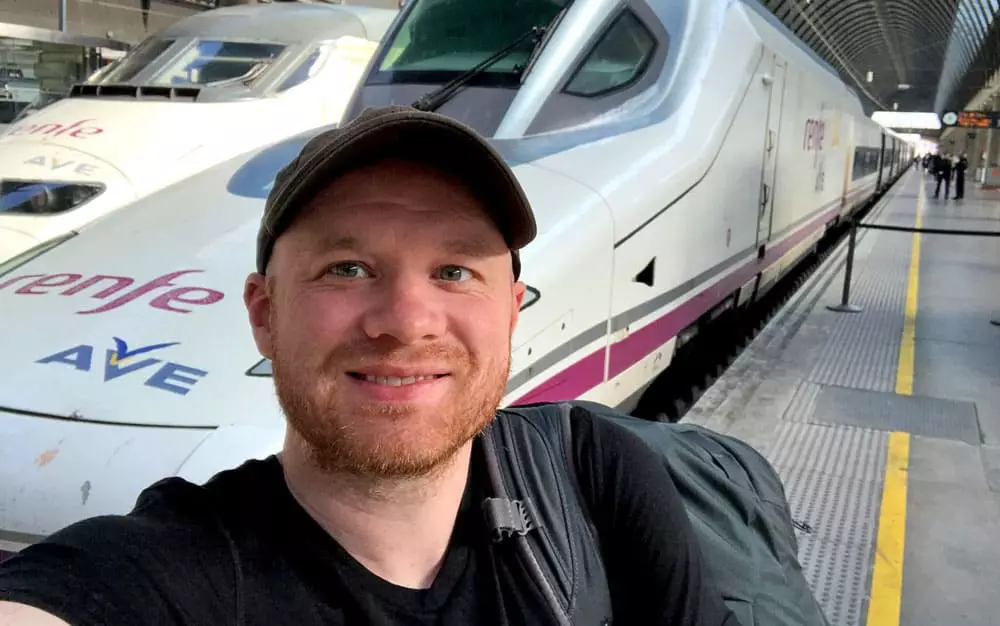
If you’re looking at this article, I’m going to bet you’re getting ready to travel. Check out these helpful articles that we wrote for tips and advice for packing for your trip.
- Backpacking Europe Packing List for Women
- Backpacking Europe Packing List for Men
- Best Travel Backpacks for Europe
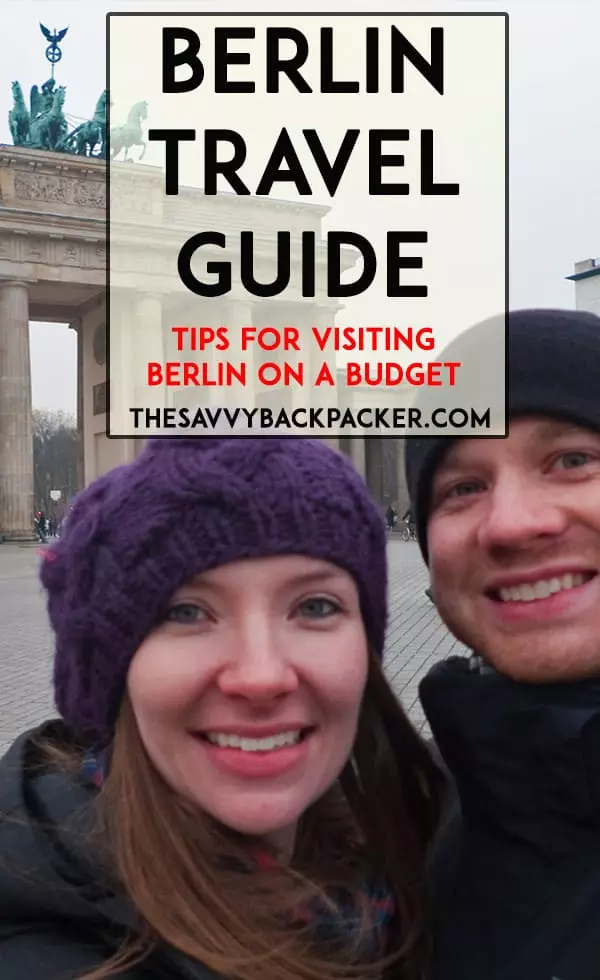
Insure Your Trip
Not to get all doom and gloom but it can get very expensive when things go wrong on the road. Travel insurance is a cheap way to cheap way to ensure you don’t end up with a $10,000+ medical bill. We like World Nomads they’re affordable and it only takes a few minutes to get covered.
- Recent Posts
- Paris Pass Review — A Good Value or Waste of Money? - May 13, 2024
- The Best Travel Backpacks | In-Depth Buyer’s Guide & Backpack Reviews - April 28, 2024
- Best Prepaid UK eSIM | Data Plan Buyer’s Guide - April 21, 2024

No Funny Business
The Savvy Backpacker is reader-supported. That means when you buy products/services through links on the site, I may earn an affiliate commission—it doesn’t cost you anything extra and it helps support the site.
Thanks For Reading! — James
Questions? Learn more about our Strict Advertising Policy and How To Support Us .
Related Reads
The best party hostels in berlin | where to stay in berlin if you want to party.
A guide to Berlin's best party hostels
Best Hostels in Berlin | The Backpacker’s Guide To Berlin Hostels
A guide to the best hostels in Berlin, Germany for every style of travel.
Berlin Price Guide | Calculating The Daily Costs to Visit Berlin
The daily costs to visit Berlin. How to estimate your budget for food, accommodation, attractions, alcohol, and more.
Go Berlin City Pass Review | Is This Berlin Sightseeing & Museum Pass Worth It?
Is the new Go Berlin City Pass worth the money? We do an in-depth analysis to see if this sightseeing pass is a good deal.
City Guides
Choosing travel insurance, travel packing lists, budget travel newsletter.
The best budget travel tips sent straight to your inbox.
Join My Journey
Europe travel tips, advertising & privacy policies.
TheSavvyBackpacker.com is a participant in the Amazon Services LLC Associates Program, an affiliate advertising program designed to provide a means for sites to earn advertising fees by advertising and linking to amazon.com.
© 2010 - 2024 The Savvy Backpacker
Website Design by FHOKE
Top Things to Do
Free Things to Do
Things to Do With Kids
Lakes & Beaches in Berlin
Berlin's Tiergarten Park
Top Museums in Berlin
Day Trips From Berlin
Food to Try in Berlin
Berlin's Best Restaurants
The Best Bars in Berlin
Breweries in Berlin
Weather & Climate
Berlin's Airports
Neighborhoods to Know
Public Transportation
Berlin's Public Transportation: The Complete Guide
:max_bytes(150000):strip_icc():format(webp)/ebephoto-5b7352c3c9e77c005080d5ad.jpg)
fhm/GettyImages
Berlin 's public transportation is comprehensive and covers all corners of this sprawling city. It takes you over, under and through Berlin and connects travelers to greater Germany and beyond.
The all-inclusive system consists of U-Bahn, S-Bahn, buses, and trams. It's run primarily by the media-savvy Berliner Verkehrsbetriebe or BVG (pronounced beh-fow-gey). A single ticket grants access to an array of transport options and most people use several modes of public transport on any given day.
Though the system is well-organized, spacious, safe , and fairly punctual, it's massive and takes practice to understand. Use our complete guide to Berlin's public transportation to navigate the capital city.
How to Ride Berlin's U-Bahn
The U-Bahn (underground) operates mostly below ground within Berlin city limits (AB zone). The first stations opened in 1902 and have operated consistently with periodic closures, improvements and expansions.
An illuminated "U" marks the entrance with the station name in a variety of traditional scripts. Enter the platform and once you have a ticket (bought from a machine on the platform or BVG distributor), stamp it and board your U-Bahn.
Maps are present on the platform, with electronic boards notifying travelers of the next trains and estimated arrival.
Lines on Berlin's U-Bahn
The U-Bahn contains over 170 stations in 10 lines, including the famed U2 line (not associated with the band). The bright yellow cars and colorful stations provide plenty of material for Instagram-lovers.
- U1 (Warschauer to Uhlandstraße): This line includes many of the oldest stations and travels from near East Side Gallery in Friedrichshain through Kreuzberg to Wilmersdorf in the west.
- U2 (Pankow to Ruhleben): This long line runs south to Alexanderplatz, then west through major destinations.
- U3 (Nollendorfplatz to Krumme Lanke ): Beginning in Schöneberg, this line continues out to one of the most popular lakes.
- U4 (Nollendorfplatz to Innsbrucker Platz): One of the shortest lines stays within Schöneberg, touching on Tempelhof .
- U5 (Hönow to Alexanderplatz): Begins in a village in Brandenburg and runs to the center of the city. Eventually it will connect to the U55.
- U55 (Brandenburger Tor to Hauptbahnhof): The shortest line connects only three stations between popular tourist points like the Brandenburg Gate and main train station.
- U6 (Alt-Tegel to Alt-Mariendorf): Connects the charming town of Tegel near the airport in the north to Alt-Mariendorf in the south.
- U7 (Rathaus Spandau to Rudow): Snakes its way through the city from the west to southeast.
- U8 (Wittenau to Harmannstrasse): Runs north to south from Reinickendorf/ Wedding to Neukölln .
- U9 (Osloer to Rathaus Steglitz): Another north to south line.
Major transfer hubs include Alexanderplatz, Nollendorfplatz, Zoologischer Garten, and Friedrichstrasse.
Hours of Operation for Berlin's U-Bahn
Berlin's U-Bahn runs from 4:30 a.m. till 12:30 a.m. on weekdays. On weekends and public holidays there is 24 hour service with reduced frequency.
It runs every 5 to 10 minutes within the city center. The U-Bahn runs every 10 to 15 minutes after 8 p.m. with night buses taking over at night.
How to Ride Berlin's S-Bahn
The city's S-Bahn or Stadtbahn (city train) is the local rail which runs primarily above ground. Distance between stations is greater than the U-Bahn and it is the quickest way to travel the city and to the outskirts like Potsdam and Wannsee . Unlike most of Berlin's transport, the S-Bahn is operated by Deutsche Bahn (German rail company ). The same tickets offer access to the S-Bahn as the rest of Berlin's public transport.
S-Bahn stations can be identified by the green and white "S" symbol. Enter the platform without barrier and once you have a ticket, stamp it and board the S-Bahn. Maps are available on the platform and electronic boards provide information on the next arrival.
Important Lines on Berlin's S-Bahn
The S-Bahn covers 15 lines with almost 170 train stations.
- S41 & S42 : The Ringbahn (circular railway) encircles the city center and carries 400,000 passengers a day. The S41 travels clockwise, while the S42 goes counter-clockwise. It stops at 27 stations and it takes about 60 minutes to circle the city. Major crossing points are Gesundbrunnen in the north, Ostkruez in the east, Sudkreuz in the south, and Westkruez in the west.
- S5, S7 and S75 : Busy lines running from west to east between Westkreuz (west cross) and Ostkreuz (east cross). The most visited stations are between Zoologischer Garten and Alexanderplatz where there are plenty of tourists sights like the Siegessäule (Victory Column) within the Tiergarten , Museumsinsel (Museum Island) and Hackescher Markt .
- S1, S2 & S25 : Main north-south-lines. The S1 runs between Oranienburg and Wannsee, S2 between Bernau and Blankenfelde, and S25 from Teltow to Hennigsdorf.
Hours of Operation for Berlin's S-Bahn
During the week, the S-Bahn runs from 4:30 a.m. until 1:30 a.m. On weekends and holidays it runs 24 hours a day.
Trains run at least every 10 minutes, with frequency slowing to 10 and 20 minutes outside of peak hours and every 30 minutes at night.
How to Ride Berlin's Buses
Berlin's buses add even greater coverage to the city's already impressive network. Though a slower mode of transport, Berlin buses minimize walking in this rambling city. They can also be a great way to tour the city as many travel right by top sights and provide exceptional views from their double-decker levels. Buses are more common in former West Berlin as they "modernized" by tearing out earlier tram lines.
Bus stops are marked by a circular sign with a green "H". They often have a small shelter and electronic sign updating on arrivals, as well as a posted regular schedules and routes. Tickets are purchased from machines at S- or U-Bahns, BVG ticket-sellers, or directly from bus drivers. If you have an undated ticket, stamp it with the machine near the entrance.
Berlin's Most Important Bus Lines
There are more than 350 routes and over 2,634 bus stops.
- Buses are numbered 100 to 399
- MetroBus lines begin with an M
- ExpressBus is a rapid or express bus service with fewer stops marked by an X. There is ExpressBus service to/from both Berlin airports (X7 for Schönefeld and X9 for Tegel).
- Line 100 (and 200) are great tourist routes from Alexanderplatz to Zoologischer Garten
- NightBuses take over when other modes of transport shut-down. They are marked by the letter N and depart every 30 minutes
How to Ride Berlin's Trams
Mostly in former East Berlin, trams travel at street-level, winding their way throughout the city. Tickets can be purchased beforehand or at machines on the train.
MetroNetz, marked with a "M", offer higher frequency service (about every 10 minutes) and operate 24 hours a day. At night, trams run every 30 minutes.
Berlin's Most Important Tram Lines
There are over 20 tram lines with 377 stops in the city. MetroTrams include:
- M1 : Niederschönhausen to Am Kupfergraben in Mitte
- M2 : Heinersdorf to Alexanderplatz
- M5 : Hohenschönhausen to Hackescher Markt
- M6 : Hackescher Markt to Hellersdorf
- M8 : Hauptbahnhof to Landsberger Allee/Petersburger Straße
- M10 : Hauptbahnhof to Warschauer Straße including Eberswalder Straße (nicknamed the "party tram")
- M13 : Wedding to Warschauer Straße
- M17 : Falkenberg to Schöneweide
Tickets on Berlin's Public Transport
Regular tickets cost 2.90 euros and allow for travel on all forms of transport. They are valid for two hours with unlimited transfers in one direction. For example, you can travel around the city on a single ticket for 120 minutes from the time the ticket was stamped/purchased, but you can't go in one direction then come back the same way. Children under six years old do not need tickets and reduced fare is available for children six to 14.
Fares are subject to length of your trip and which zones you travel. The city is divided into zones A, B, and C. Most of the city is in the A and B zone. A is inside the ringbahn , B just outside, and C up to 15 kilometers (9 miles) around Berlin. Regular tickets include the A and B zone, but you can buy ABC tickets (usually only necessary if you are going to Schönefeld Airport or Potsdam). You can also buy an AB pass and get a C extension if you are taking a single trip to the C zone.
Ticket machines are available on U & S-Bahn platforms, can be purchased in small shops with a "BVG" signs, buses, or with the BVG app . (Tickets from the app should be purchased before boarding transport.)
You must be in possession of a valid ticket on public transport and it's largely on the honor system. However, you need to show a ticket when entering buses and when ticket controllers — both uniformed and plain clothes — ask to see your ticket by saying " Fahrscheine , bitte" (Ticket, please). If caught without a ticket, you are subject to a 60 euro fine and controllers are infamously unsympathetic.
Use the BVG website to plan your trip and find real-time departure/arrival information.
Other Berlin Ticket Options:
- Berlin Welcome Card : This tourist ticket offers access to transport and discounts on attractions from 48 hours to 6 days.
- Tageskarte : Day passes for 7 euros (AB zone) are available for unlimited travel from time of purchase until 3:00 a.m. the next day. Up to three children (6 to 14) are included in the ticket.
- Wochenkarte: There are weekly (34 euros) and Monatskarte ( monthly ) tickets (84 euros). A major advantage for these tickets are they allow you to take 1 adult and 3 children under 15 with you after 8 p.m. Monday-Friday and all day on weekends.
- 10-Uhr-Karte : An alternative to the regular monthly ticket is the 10 a.m. ticket. It costs 61 euros and allows for unlimited travel after 10 a.m. Note that you cannot take additional passengers with you.
- Kurzstrecke : For three (or less) stops on S-Bahn or U-Bahns, or six stops on buses and trams with no transfers, buy a short trip ticket for 1.90 euros.
- Fahrradkarte : You can take your bike on S-Bahn, U-Bahn or tram (not bus) but you must buy a ticket for 1.90 euros.
For more ticket options, refer to the BVG's ticket site .
Accessibility on Berlin's Public Transportation
Entrance to the U-Bahn and S-Bahn is barrier-free and escalators and elevators service many stations—but not all. Maps indicate accessibility.
Newer trains offer level-entry boarding with a gap of no more than two inches between train and platform. A ramp (manually set-up by the conductor) can be provided. Look for doors marked with wheelchairs/strollers to mark the best cars for wheeled travelers (for example, second door on the bus).
BVG offers information for riders with disabilities .
Other Modes of Transport in Berlin
- Ferries: Berlin is the land of lakes and there are several ferries included in public transport marked with an F.
- Bikes: Biking is one of the best ways to travel around this exceptionally flat city. Second-hand bikes are inexpensive, although you should also get a receipt as bike theft is rampant. If you need a bike briefly, use one of the many bike-sharing programs. Helmets are not required and bike lanes are plentiful.
- Taxis: Taxis are available throughout the city at taxi stands, airport and train stations or by reserving ahead. Taxis are cream with a “TAXI” roof sign. A Kurzstrecke options allows for short trips of up to two kilometers at a flat rate of six euros, while longer journeys are two euros per kilometer (up to seven kilometers, or 1.50 euros per km after that).
- Car Rentals: Renting a car is not recommended for travel within Berlin, but can be helpful if traveling around the country and sampling the world famous Autobahn . Refer to our full guide on car rentals in Germany .
Getting Around Frankfurt: Guide to Public Transportation
Munich Airport Guide
Berlin's Mitte Neighborhood: The Complete Guide
Where to Swim in Berlin
Your Trip to Berlin: The Complete Guide
Guide to Berlin's Airports
Berlin's Potsdamer Platz: The Complete Guide
Getting Around Paris: Guide to Public Transportation
How to Visit Munich on a Budget
Getting Around Nuremberg: Guide to Public Transportation
Your Trip to Frankfurt: The Complete Guide
Getting Around Beijing: Guide to Public Transportation
Getting Around Salt Lake City: Guide to Public Transportation
Getting Around Vienna: Guide to Public Transportation
Getting Around Munich: Guide to Public Transportation
Berlin's Alexanderplatz: The Complete Guide
14 of the best things to do in Berlin
Jul 8, 2023 • 7 min read

Experience the best of Berlin with this guide to the top things to do © Westend61 / Getty Images
For a scene-stealing combo of glamor and grit, poised to mesmerize anyone keen to connect with vibrant culture, bold architecture, global food, intense parties and an easy-going vibe, head to Berlin .
Whether your tastes run to posh or punk, you can sate them in the German capital. Here are the best experiences Berlin has to offer.
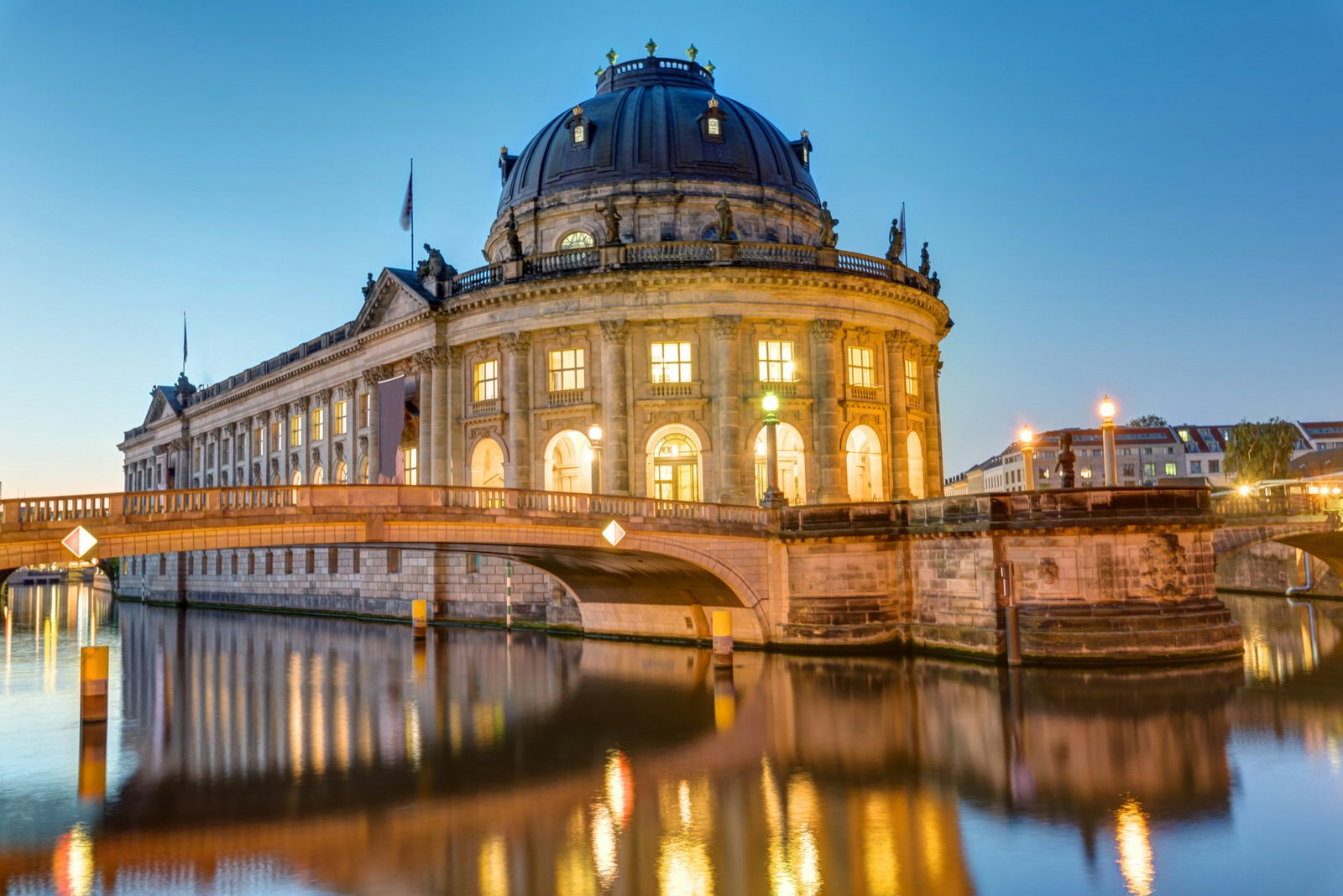
1. See the treasures of Museum Island
Berlin’s "Louvre on the Spree", this imposing cluster of five treasure-houses is an undisputed highlight of the city’s impressive landscape. Declared a Unesco World Heritage Site in 1999, Museumsinsel showcases art and cultural history from the Stone Age to the 19th century.
Feast your eyes on antiquities at at the Pergamonmuseum and Altes Museum , take in 19th-century art at the Alte Nationalgalerie and lean in for close-ups of medieval and Renaissance sculptures at the Bode-Museum . The Neues Museum is famous as the residence of the exquisite but controversial bust of Nefertiti which has been the subject of repatriation requests from Egypt for almost a century.
Planning tip: As part of the ambitious Museum Island Master Plan , the Pergamonmuseum will be completely closed to visitors starting October 23, 2023. The institution is not scheduled to partially reopen until spring 2027 – with some sections of the museum, including the famous Ishtar Gate , scheduled to stay closed until 2037.

2. Follow the legacy of the Berlin Wall
Few events in history have the power to move the entire world. If you were alive and old enough for the fall of the Berlin Wall in 1989, you will probably remember the crowds of euphoric revelers cheering and dancing at the Brandenburg Gate . Although little is left of the physical barrier, its legacy lives on in the imagination and in such places as Checkpoint Charlie , the Gedenkstätte Berliner Mauer (Berlin Wall Memorial) and the East Side Gallery with its colorful murals.
3. Party at Berlin's world-famous clubs
Berlin’s reputation for intense and unbridled nightlife is rooted in the libertine 1920s when everyone from Marlene Dietrich to Christopher Isherwood partied like it was 1999. Since the fall of the Wall, Berlin’s club culture has put the city firmly back on the map of music-lovers everywhere .
The edgiest clubs can be found in locations like power plants, abandoned apartment buildings and other repurposed locations, especially in Kreuzberg & Neukölln and Friedrichshain . Electronic music dominates at cult favourites like ://about blank , Kater Blau and Griessmühle , while Prince Charles has made a name for itself as a hip hop mecca, fetish-focused KitKatClub is a must, and the local punks mosh away at SO36 .
Planning tip: Some of Berlin's best parties are its daytime raves: here's how to hit the clubs in the afternoon .
4. Enjoy drinks outdoors
Whether its beer gardens, rooftop bars or some casual drinks in parks and by the Landwehrkanal, Berliners take a relaxed approach to drinking and socializing outdoors. While Berlin has something to offer all year round, the city in the warm weather has a special buzz around it.
5. Be dazzled by the grandeur of Schloss Charlottenburg
An exquisite baroque palace, Schloss Charlottenburg evokes the onetime grandeur of the Prussian royals. It is particularly special to visit in the summer when you can fold a stroll, sunbathing session or picnic in the lush palace park into a day of peeking at royal treasures.
6. Book ahead to visit the Reichstag
It’s been burned, bombed, rebuilt, buttressed by the Berlin Wall, wrapped in fabric and finally turned into the modern home of the German parliament, the Reichstag is one of Berlin’s most iconic buildings. Designed by Paul Wallot in 1894, this is where the German parliament, the Bundestag, has been hammering out its policies since 1999.
Planning tip: Reserve online in advance to visit the striking glass dome for free . This is a government building and you will need to provide identification to gain access.
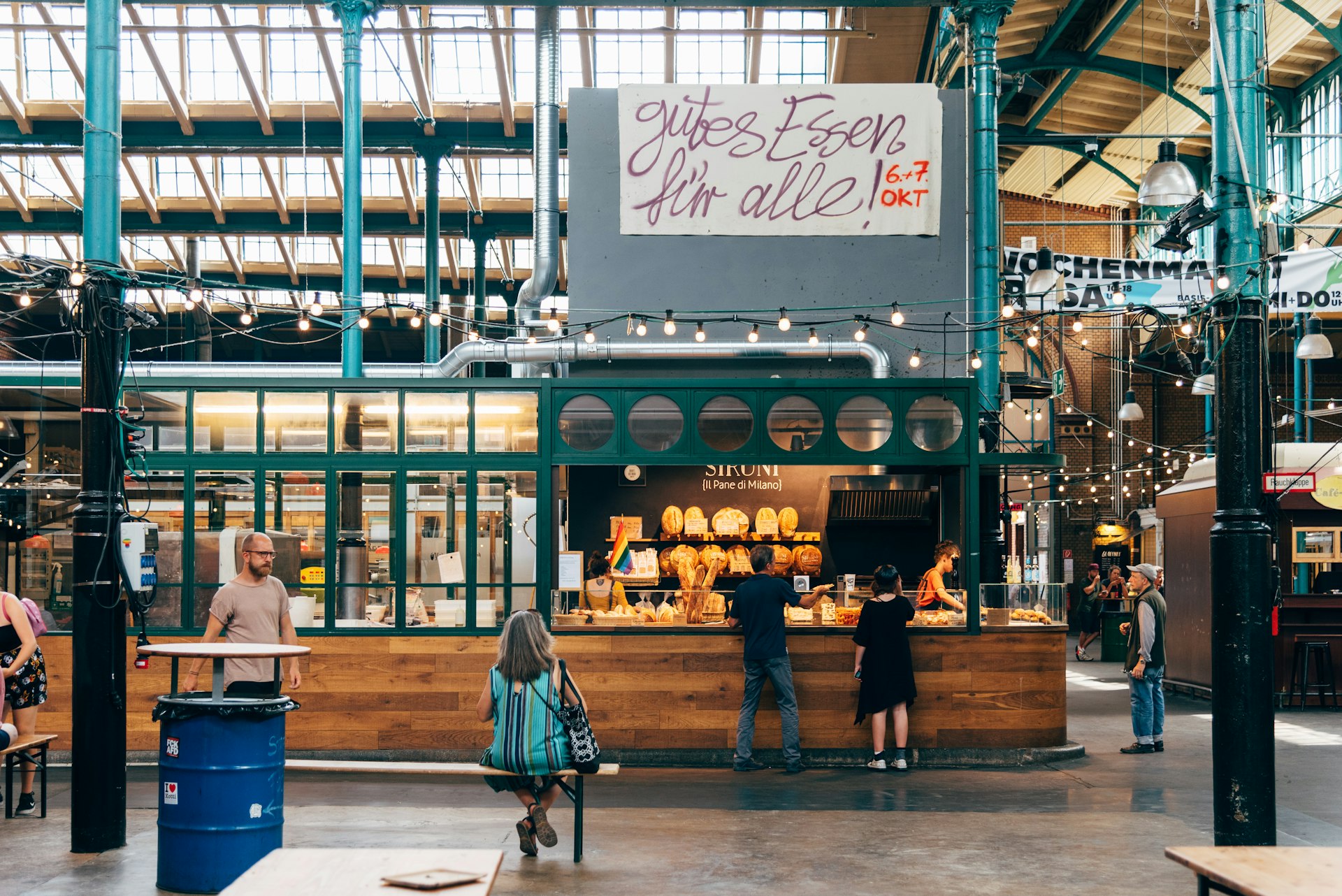
7. Shop and eat at Markthalle Neun
This delightful 1891 market hall was saved by dedicated locals in 2009. Not only do local and regional producers present their wares but also, on Street-Food Thursday, they're joined by aspiring or semipro chefs, who set up their stalls to serve delicious snacks from around the world. There’s even an on-site craft brewery, Heidenpeters .
8. Tour Berlin's art scene
Art aficionados will be truly spoilt for choice in Berlin. Home to hundreds of galleries, scores of world-class collections and thousands of international artists, the city has assumed a pole position on the global artistic circuit. Its main contemporary art showcase is the Hamburger Bahnhof , a vast museum housed in a former railway station whose loft and grandeur are the perfect foil for this top-notch collection of paintings, installations, sculptures and video.
Local tip: If you’d prefer something even more Berlin-centric, try Urban Nation in Schöneberg . A relative newcomer to Berlin’s array of galleries, this street art celebration turns the concept of a museum on its head and celebrates art in a unique way.
9. Get to know Jewish history and culture at Jüdisches Museum
Berlin’s Jüdisches Museum presents an eye-opening and emotional journey through 2000 years of Jewish history in Germany, not just the 12 years of Nazi horror that such exhibits often focus on. Find out about Jewish cultural contributions, holiday traditions, the difficult road to emancipation, outstanding individuals like the philosopher Moses Mendelssohn and jeans inventor Levi Strauss, and the fates of ordinary people and families.

10. Wander or cycle the paths of Tiergarten
Berlin’s rulers used the grounds to hunt boar and pheasants in the rambling Tiergarten until master landscape architect Peter Lenné landscaped the grounds in the 18th century. With its sweeping lawns, shaded paths, woodsy groves, romantic corners, ponds and creeks, the Tiergarten is one of the world’s largest city parks and a wonderful retreat from the city bustle.
Planning tip: In summer, several charming beer gardens beckon, including Café am Neuen See and the Teehaus im Englischen Garten.
11. See urban renewal at Potsdamer Platz
Despite the name, Potsdamer Platz is not actually a square but an entire city quarter, forged in the 1990s from terrain once bisected by the Berlin Wall. A collaborative effort by the world's finest architects, it is considered a showcase of urban renewal.
Planning tip: The area itself is rather compact and quickly explored – unless you stick around to see Berlin from above from the Panoramapunkt or dive into German film history at the Museum für Film und Fernsehen .
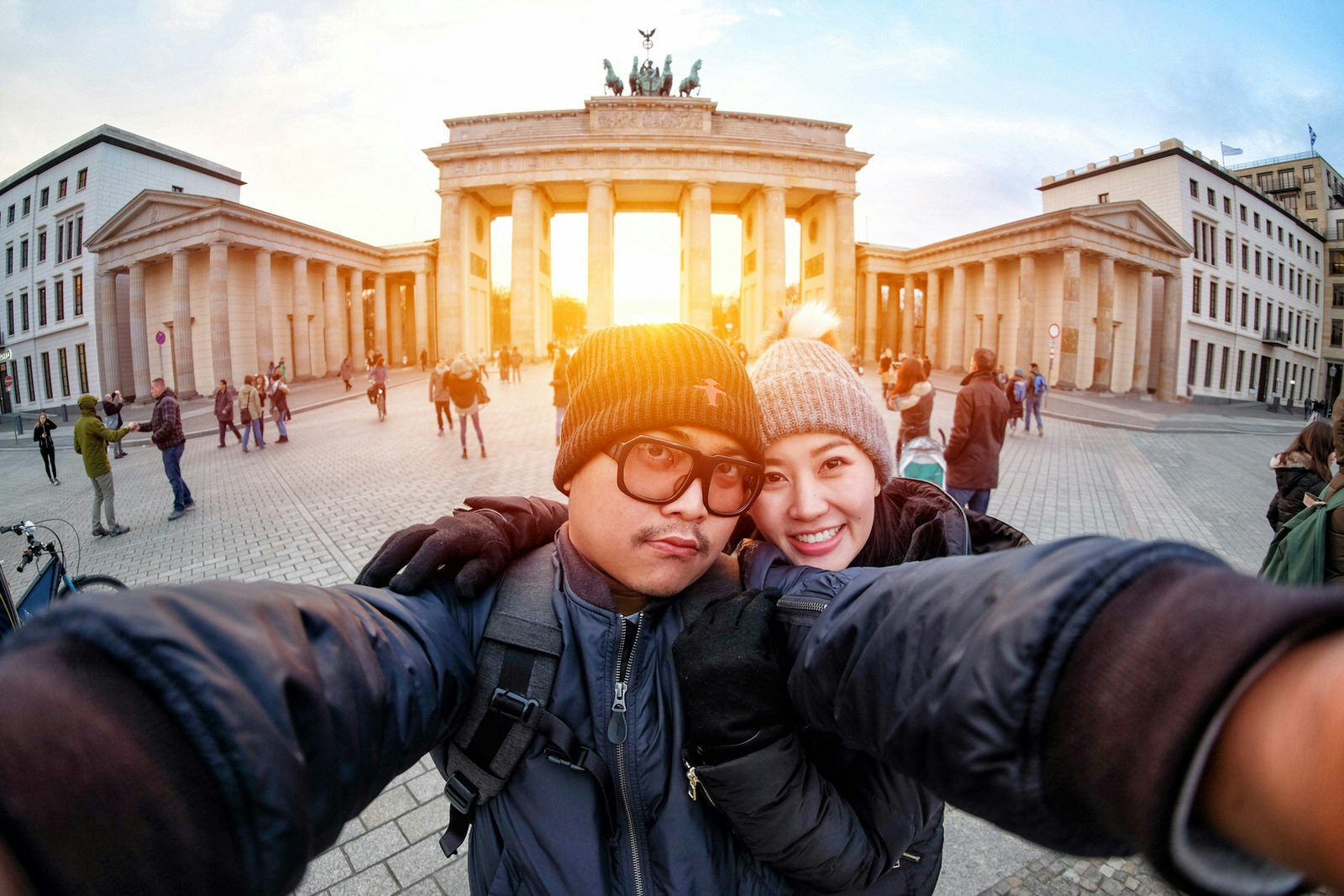
12. Pose for a photo at the historic Brandenburg Gate
Prussian emperors, Napoleon and Hitler have marched through this neoclassical royal city gate that was once trapped east of the Berlin Wall. Since 1989 Brandenburg Gate has gone from a symbol of division and oppression to the symbol of a united Germany. The elegantly proportioned landmark is at its most atmospheric – and photogenic – at night, when light bathes its stately columns and proud Goddess of Victory sculpture in a golden glow.
13. Go shopping along Kurfürstendamm
No trip to Berlin would be complete without a saunter along Kurfürstendamm (Ku’damm for short) in Charlottenburg . Along with its continuation, the Tauentzienstrasse, it is the city’s longest and busiest shopping strip, lined with high-street chains and designer boutiques. Don’t miss the KaDeWe , continental Europe’s biggest department store with a mind-boggling food hall, or the cutting-edge concept and flagships stores at Bikini Berlin , a revamped 1950s landmark near Zoo Station.
Local tip: Take a moment to look up. Amid all this, the majestically ruined Gedächtniskirche (Memorial Church) stands quietly as a poignant reminder of the absurdity of war.
14. Explore the exhibits of the Topographie des Terrors
In the spot where the most feared institutions of Nazi Germany (the Gestapo headquarters, the SS central command and the Reich Security Main Office) once stood, this compelling exhibit documents the stages of terror and persecution, puts a face on the perpetrators, and details the impact these brutal institutions had on all of Europe. A second exhibit outside zeroes in on how life changed for Berlin and its people after the Nazis made it their capital.
This article was first published Jan 28, 2015 and updated Jul 8, 2023.
Explore related stories
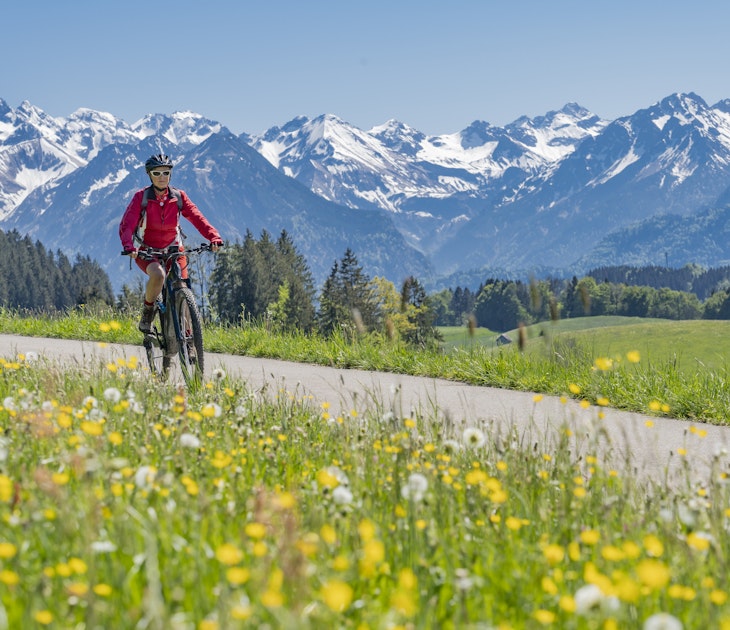
May 10, 2024 • 9 min read
From cities to countryside to high mountain peaks, experience the best of Germany with these top things to do.

Nov 1, 2023 • 15 min read

Aug 16, 2023 • 5 min read

Jan 17, 2022 • 5 min read
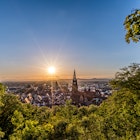
Sep 28, 2021 • 5 min read
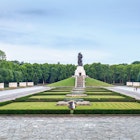
Jul 30, 2021 • 6 min read
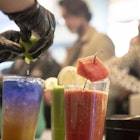
Jan 10, 2020 • 5 min read

Oct 31, 2019 • 2 min read
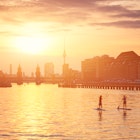
Oct 4, 2019 • 6 min read

Aug 15, 2019 • 6 min read

The 12 best things to do in Berlin
F rom museum hopping to picnicking in an abandoned airport and scoping out city views from an erstwhile Cold War radio station, Berlin does not lack for fun and quirky activities.
Read on for the best things to do in the city. Plan your visit with our guides to the best restaurants , bars , nightlife and shopping , and how to spend a weekend in Berlin .
Explore the seat of German Parliament
The (literal) highlight of a visit to the Reichstag is its famous glass dome. Built by Sir Norman Foster, the structure is lined inside with photogenic, light-catching mirrors, and offers views down into the Bundestag, as well as sweeping vistas across the city. Take a guided tour to learn about the building’s history and architecture, and the workings of German government. (Passport ID required).
Insider's tip: The most popular part of a visit is the dome; its roof terrace offers a restaurant as well as impressive views over the city. It’s also possible to see preserved war damage such as bullet-holes and Russian graffiti throughout the main building.
Find out more: bundestag.de
Nearest Metro: U Bundestag
Price: Free
Go museum hopping
The Unesco heritage Museum Island comprises five conveniently adjacent museums, as well as the Simon James Galerie, an entrance and special exhibition building built by David Chipperfeld Architects and opened in 2019. Each museum is a destination in its own right and deserves at least half a day to explore. The Pergamon Museum has vast treasures from the Ancient NearEast and Islamic art; the Neues Museum holds Egyptian, prehistoric and classical treats, while the Bode Museum has an outstanding sculpture collection.
Insider's tip: You can get a one-day Museum Island ticket, but if time allows bag the three-day Museum Pass , which gets you into 30 museums. If you only have time for one museum, do the Neues.
Find out more : smb.museum
Nearest Metro : S/U Hackescher Markt
Admission : £
Visit the world's most famous checkpoint
Checkpoint Charlie was the main entry point for visitors wanting to cross the infamous Iron Curtain to East Berlin. The Mauer Museum – Museum House at Checkpoint Charlie offers exhibitions relating to tales of escapees, both would-be and successful. It can be overwhelming, not least because it’s always so busy and there is no clear route through all the rooms – but some items of note are the cars (and wooden carts) that were used for escapes, and examples of care packages dropped into West Berlin during the airlift.
Insider's tip: Save time for the several excellent related museums and exhibits nearby, including the small but comprehensive Black Box Cold War , the fascinating large-scale Asisi Panorama , and an outdoor exhibition of black-and-white images that document the checkpoint’s history.
Find out more: mauer-museum.com
Metro Station : U Stadtmitte / Kochstraße
Immerse yourself in Jewish culture and history
Daniel Libeskind’s zig-zag, zinc-clad Jewish Museum is a singular architectural sight in Berlin. Highlights include the new core exhibition that opened in 2020; the Axes, which deal with the topics of emigration and exile, racial exclusion and the Holocaust; the Garden of Exile; and Menashe Kadishman’s poignant artwork, "Fallen Leaves", located in the Memory Void. There are also regular events, installations and temporary exhibitions. There's also a children’s museum called ANOHA.
Insider's tip: For a deeper look into the personal histories of Jewish residents in Berlin throughout the ages – as well as some more striking architecture – visit the W. Michael Blumenthal Academy opposite the museum. Its impressive documentation spans religious, and cultural life as well as personal experiences.
Find out more : jmberlin.de
Metro station : U Hallesches Tor / U Kochstrasse
Scope out the striking Brandenburger Tor
Napoleon’s army 'borrowed' it, Ronald Reagan called for Gorbachev to "tear down this wall" from behind it, and Jacko held a baby from a balcony near it. Instantly recognisable, Brandeburger Tor has also been the backdrop to everything from John F. Kennedy’s famous 'Ich bin ein Berliner' speech to previous World Cup celebrations, and continues to host major events in its associated square (Pariser Platz).
Insider's tip: Save some time to visit the Room of Silence on the north side, built specifically for visitors to rest and reflect.
Opening hours: 24hrs a day
Metro Station : U Brandenburger Tor
Admission : Free
Visit the Memorial to the Murdered Jews
Peter Eisenman’s controversial Memorial to the Murdered Jews consists of 2,711 concrete slabs (stelae) arranged in a neat grid near the Brandenburger Tor. They’re deliberately built at varying height to give visitors a sense of disorientation and confusion. The memorial’s underground visitor centre, full of heartbreaking personal stories, is often missed but very poignant.
Insider's tip: Close by, towards the edge of the Tiergarten park, are related memorials to other prominent victim groups of the holocaust; namely homosexuals, Roma and Sinti people and those murdered in the Nazi’s notorious Aktion T4 euthanasia program.
Find out more: holocaust-mahnmal.de
Metro station : U/S Potsdamer Platz
Price : Free
Visit the city’s newest—and hippest—photo gallery
Photography is a big part of Berlin’s thriving art scene, with major galleries such as C/O Berlin hosting big-name retrospectives like Sebastião Salgado, Martin Parr and GDR snapper Harald Hauswald and the smaller but elegant Camera Work , housed in a nineteenth-century coach-house, presenting iconic snappers such as Helmut Newton, Richard Avedon and Man Ray. The city’s latest opening, Fotografiska , is located in the vast former art-squat Kunsthaus Tacheles, whose graffiti-splattered walls and stairwell form part of the venue’s overall slick design by Herzog & de Meuron. The first three floors are given over to rotating exhibitions from an array of global photographers and multimedia artists that confront contemporary themes (fashion, consumerism, race, feminism). On the fourth floor lies the dark and decadent Verōnika restaurant , with its velvet banquettes and high-end menu of lobster omelette, tempura oysters and Irish entrecote restaurant, and one floor above, the equally dapper bar serves excellent wines and cocktails plus a signature martini tray; booking a table at one of these gets you free entry into the exhibitions.
Opening hours: 10am-11pm daily
Metro Station: U Oranienburger Strasse
Admission: 14-16 Euros
Laze by Landwehr Canal
Berlin’s 19th-century Landwehr Canal might not be as famous as the Spree, but its meandering seven-mile length will take you through a host of inner city districts and sights, including Kreuzberg’s café-lined embankments, Paul-Lincke-Ufer and Maybachufer; Mies ran der Rohe’s striking Neue Nationalgalerie; the 1930s modernist ShellHaus building; the city’s celebrated Bauhaus Archiv; and a part of the Tiergarten park.
Insider's tip: If you stroll the canal in summer, be sure to drop into one (or both) of the beer gardens en route, namely, Cafe am Neuen See and Schleusenkrug .
Discover one of Weimar Berlin’s biggest art icons
Schöneberg’s Kleine Grosz Museum , set inside a revamped modernist petrol station complete with a new bamboo garden and koi pond, is a quintessentially quirky Berlin spot. Dedicated to the life and work of German-American painter, graphic artist, cartoonist and anti-war activist George Grosz—best-known for critiquing the Great War and ideas of patriotism—the museum gives a chronological overview of the artist’s career on the ground floor, including some of his local endeavours such as production designer for Erwin Piscator and others at the nearby Theatre am Nollendorfplatz. The upper level hosts themed exhibitions of his works that change every six months, zooming in on phases such as his connections with the Berlin Dada movement and the postwar collage work he embarked on while living in the States (he was exiled by the Nazis in 1933). The small but pleasant on-site cafe is an attractive, peaceful spot for coffee and cake.
Opening hours: 11am-6pm, Thu-Mon
Metro Station: U Bülowstrasse
Admission: 10 Euros
Browse art in a Second World War Bunker
One of Berlin’s most idiosyncratic art spaces, Boros Sammlung is a gallery hidden inside a monolithic, five-floor Second World War concrete bunker. The exhibition changes every four years, and has no overarching themes; it’s simply a selection from the owner’s collection. Visitors can expect everything from installations and video art to painting and sculpture – all with a thought-provoking twist – by some of the contemporary art world’s best-known names.
Insider's tip: Given the structure of the gallery/bunker and its popularity, it’s not possible to drop by. Sign up on the website a good few weeks prior to your visit if you want to be sure to get a spot.
Find out more : sammlung-boros.de
Metro Station : U Oranienburger Strasse / U/S Friedrichstrasse
Picnic at an abandoned airport
One of the largest public spaces in Europe, Tempelhofer Feld used to be a functioning airport: for the Nazis (who expanded it into its current form) during Second World War as well as for the Berlin Airlift during the Cold War, and then a commercial airport. It has been used as a recreational space, and makes a unique day-trip for picnickers, kite-surfers, cyclists and rollerblade fans alike. Bikes (for adults and children), as well as pedal cars, GoKarts and rollerblades can be rented from the park’s Mobilcenter .
Insider's tip: You can order a pre-made picnic here . A new rooftop terrace and gallery opened in 2023 but the interiors of the main buildings, only open via tours , contain Second World War bunkers and tunnels, as well as Cold War paraphernalia.
Find out more : thf-berlin.de
Metro Station : U Platz der Luftbrücke
Admission : Access to the park is free.
Embrace your inner spy with a hike to 'Devil's Mountain'
A trip out to Cold War radio base Teufelsberg (Devil’s Mountain) is something of a pilgrimage for locals as well as visitors. Hidden away in the Grunewald forest, on top of a mountain made of post-WWII rubble, the base was used by US and British forces to spy on the Soviet Union, including Russian-controlled East Germany. Today its distinctive radomes and tower are completely dilapidated, street art adorns the interior, and the views on a clear day are superb.
Insider's tip: It’s possible to tour the site independently, but the best way is via the regular English-language tours, which explain the history and artworks.
Find out more : teufelsberg-berlin.de
Metro Station : S9 or S75 to Heerstraße, or S1 to Grunewald
How we choose
Every attraction and activity in this curated list has been tried and tested by our destination expert, to provide you with their insider perspective. We cover a range of budgets and styles, from world-class museums to family-friendly theme parks – to best suit every type of traveller. We update this list regularly to keep up with the latest openings and provide up to date recommendations.
Play The Telegraph’s brilliant range of Puzzles - and feel brighter every day. Train your brain and boost your mood with PlusWord, the Mini Crossword, the fearsome Killer Sudoku and even the classic Cryptic Crossword.

How to Get From Berlin Airport to City Center: Stress-Free Tips (2024)
This post contains links which earn me a small commission at no cost to you.
Ali Garland, Berlin expert & long term resident Getting Around
Getting from Berlin airport to city center is pretty easy, and you have several options. The FEX airport express train is the fastest, but it’s not always the best option depending on where exactly you’re going in Berlin. That’s because as an express train, it only has four stops, including Berlin Brandenburg Airport.
This blog post will explain how to get from Berlin Brandenburg Airport to city center using the airport express train, regional trains, Sbahns, and more. Plus there’s info about how much tickets cost, and even some sample routes to help you get from BER Airport into Berlin .
Note: I recently noticed that even the airport’s website wasn’t accurate (!!!) about some of the trains that do and do not go to Berlin Brandenburg terminals 1-2. Since I live in Berlin, I check routes often and update this article as often as I can.

What you'll find here
Top ways to get from the Berlin Airport into the city
With several different ways of getting from BER Airport into Berlin, you might be confused about which is the best option. So before I get into the nitty gritty of HOW to get from the airport to the city, here’s a quick look at the options and who they’re best for:
They’ll even wait for an hour after the time you scheduled for the pickup, which is helpful if your flight is delayed. Who is it good for?
- If you’re nervous about using public transportation
- If you’re traveling with a group
- If you’re traveling with a lot of luggage
- If you’re landing late at night and you’re nervous about using public transport at night
Airport Express Train (FEX, which stands for Flughafen Express) or another regional train : Taking one of the trains is the cheapest option. They are safe and usually very reliable. There are differences with the routes depending on whether you take the FEX or another regional train, but I’ll get into that later in the blog post. Who is this option good for?
- Anyone who is comfortable using public transportation, or at least comfortable trying it even if it’s your first time
- Budget travelers
- Travelers looking for the most sustainable/environmentally friendly option
Uber and similar apps : If you’d prefer to be picked up by a car but you’re looking for something a little cheaper than Welcome Pickups, Uber and FreeNow are good options. I haven’t used them from the BER Airport, but friends have said it costs the same or less than a taxi. Who is this option good for?
- If you’re nervous about public transport
- If you have a lot of luggage
- If you know you’ll have data on your phone to use the apps
And then there are other options, including Sbahn, bus + Ubahn, taxi, but the options above are the best options for most people. I’ll get into more details about each option later in the blog post, so keep reading.
How many airports are in Berlin?
Up until late 2020, you would find directions for how to get from Berlin Tegel Airport to the city center or how to get from Berlin Schönefeld Airport to the city center.
But in late 2020, after more than a decade of delays and drama, the Berlin Brandenburg Airport (BER) finally opened, and the other two airports closed. Berlin now has only one operating airport.
Luckily this just makes it that much less complicated to get from the Berlin Airport to the city center .
Helpful German for your airport journey
The word for airport in German is Flughafen. You’ll see this often. Flughafen Express is the FEX train, or the airport express train.
Berlin airport to city center
There are several different ways to get from the Berlin airport to city center. The one you choose depends on where exactly you’re going in the city, because there isn’t actually an EXACT city center in Berlin.
The center is where most of the tourist attractions are. It includes the areas around Alexanderplatz, Gendarmenmarkt, and Potsdamer Platz.
But if you’re staying in Prenzlauer Berg, Friedrichshain, Kreuzberg, or Charlottenburg, these are still in zone A and still pretty central. More about zones a bit later in the article.

If you’re nervous about using public transport, or if you’re traveling with a lot of luggage or a group of people, reserving a car might be a better option for you. Welcome Pickups is a great choice for airport transfers in Berlin.
Let’s take a look at the various options for getting from BER to Berlin’s city center.
How far is Berlin airport from Berlin city center?
The distance from Berlin Airport to city center is roughly 30 km/18.6 miles to the Berlin Hauptbahnhof (Central Train Station) or to Alexanderplatz. This can take about an hour by car, or 35 minutes to an hour by train depending on which train you use.
What zone is Berlin Brandenburg Airport?
Berlin Brandenburg Airport is located in zone C of Berlin’s transport system. And chances are you’re staying in zone A, though you should verify that.
This means you’ll need a ticket that’s valid for zones ABC in order to get from the Berlin airport to the city center. When in doubt, buy a ticket for zones ABC to avoid any uncertainty.
But what do the zones mean?

Zone A is the center of Berlin. It includes the Ringbahn (the Sbahn line that circles the center of Berlin) and everything inside of it. Most of the tourist attractions, like the East Side Gallery, Museum Island, Brandenburg Gate, and even Charlottenburg Palace, are in zone A.
Zone B is the section of Berlin outside of that. It reaches from outside the Ringbahn (circle Sbahn line) until the border between Berlin and Brandenburg. Berlin and Brandenburg are separate states, so if you’re looking at a map, it’s easy to find that border.
Zone C is the section of Brandenburg that is very close to Berlin. It includes Potsdam, Sachsenhausen Concentration Camp, and the Berlin Brandenburg Airport.

If you happen to be staying in zone B (outside the Ringbahn route but still in Berlin city limits) you might be able to get away with a zone BC ticket. But only if your route doesn’t go through zone A to get there, which is unlikely.
Most tourists stay in zone A because that’s where most of the attractions are. Again, just buy a ticket for zones ABC to make life easier.
There are plenty of ticket machines in the airport, and the machines have an English option, so you shouldn’t have a problem buying a ticket for your journey into the city.
Video: How to get from BER Airport into Berlin city center
How much is the train from Berlin airport to city center?
Since the airport is in zone C and you are most likely staying in zone A, you will need an ABC ticket. A single ABC ticket costs 4 euros.
TL;DR – Buy a ticket for zones ABC.
If you happen to be staying in zone B, you will only need a BC ticket, as long as your route doesn’t take you into zone A. One single BC ticket costs 3.80 euros.
Here’s where it’s important to know where you’re staying in Berlin and where the train route goes from the airport to your destination. If you’re taking the FEX train into the city and then transferring to another train to get to your hotel in zone B, you will end up in zone A and need an ABC ticket.
The train route you’re on could likely end up running along the Ringbahn at some point, and that is the start of zone A. So even if you’re staying in Spandau, for example, which is in zone B, you have to go through zone A to get there.
Zone B is like a donut and zone A is the center of it, so even if you’re staying in zone B, you’ll probably have to go through A to get to your hotel.
Again, when in doubt, just buy an ABC ticket . The extra 20 cents isn’t worth getting fined or dealing with the hassle of trying to figure out exactly where your train is running.
Is public transport safe?
Yes, taking public transportation – that’s the Sbahns, Ubahns, buses, regional trains, airport express train, and more – is safe in Berlin.

I don’t drive in Germany, so I use public transportation all the time, and 98% of the time, I feel perfectly safe.
Of course, nothing is 100%, and you have to be aware of your surroundings and keep an eye on your belongings. But in general, it is safe to take the train from the airport into Berlin.
To learn more about using public transportation for your time here, check out my post about getting around in Berlin .
Getting through the airport
Once you land in BER airport, it’s pretty easy to follow the signs. Like most airports, you’ll see signs pointing you towards baggage claim and ground transportation.
Then if you’re going to take a train from the airport into Berlin, look for signs like the one below showing the little train icons for DB (Deutsche Bahn) and the S for Sbahn.

I noticed these seemingly helpful feet (pictured below) on the ground directing you to the trains. And I thought, this is great, this should be really helpful for people.

But then I realized they only exist on the train platform. So once you’ve already made your way through the airport and down the escalator to the trains.
These would be a lot more helpful if they started up in the airport somewhere, but no, they don’t pop up until you’re already where you need to be. If you make it all the way to the train platform where you can literally see the trains, you don’t need these feet.
FEX airport train
FEX stands for Flughafen Express, which is the airport express train. Flughafen means airport in German. This is a red regional train that starts at the airport (terminal 1-2) and makes stops at Ostkreuz, Gesundbrunnen, and Berlin Hauptbahnhof.

The FEX train runs twice an hour and takes a little over 30 minutes from the airport to Hauptbahnhof. You can get out at Ostkreuz or Gesundbrunnen, both of which are major transport interchanges, and switch to a different line.
There’s plenty of space for luggage on the FEX train. It’s a double decker train, and the lower level has big sections designated for luggage, plus there are luggage racks for smaller items above the seats on both levels.
Regional trains
There are a few regional train routes that run from the Berlin airport to the city center, and this could be a good option if you’re staying closer to one of the stops on those routes, or if there’s a long wait for the next FEX train.
The RE8 takes about 35 minutes to get from the airport to Hauptbahnhof. It makes stops at Ostkreuz, Ostbahnhof, Alexanderplatz, Friedrichstr, Hauptbahnhof, Zoologischer Garten, and Spandau before leaving the city.
The RB23 runs a similar route, so it’s a good alternative. It makes stops at Ostkreuz, Ostbahnhof, Alexanderplatz, Friedrichstr, Hauptbahnhof, Zoologischer Garten, Charlottenburg, and Wannsee before leaving the city towards the city of Potsdam.
If you’re staying near one of the stations listed on these routes that’s NOT a stop on the FEX train, you’re better off taking one of these regional trains to avoid having to switch trains somewhere.
The RB22 also leave from the airport, but it does not go to Berlin city center. This is a good option if you’re actually going to Potsdam or a few other locations outside of Berlin.
>>Read: How to Get From Berlin to Potsdam

The Sbahns are the (mostly) above ground trains which are helpful for getting around in Berlin . Two lines, the S9 and the S45, leave from the airport and travel into Berlin’s city center.
The S9 takes 50 minutes to reach Hauptbahnhof from the airport, and it also stops at places like Warschauer Str, Ostbahnhof, Alexanderplatz, Hackescher Markt, and several others. It continues beyond Hauptbahnhof, ending the Spandau station in the northwest corner of Berlin.
The S45 takes 41 minutes to reach Südkreuz (its end station) from the airport. Before reaching Südkreuz, it also stops at S&U Neukölln, Hermannstr, and Tempelhof.
Since the Sbahns take longer than the FEX train or the regional train, they’re not ideal options. However, they do travel to other parts of the city, and if those stations are your actual destination, it could be easier and less stressful to use the Sbahn to avoid having to switch somewhere.
Also, if you just missed an FEX train, and the next one isn’t for another 30 minutes, it’s probably worth hopping on an Sbahn rather than sit around waiting.

Join our Facebook group!
Have questions about planning your trip to Berlin?
Join the Facebook group here to chat with Ali (she runs this site) and other people who have been to Berlin for tips.
Bus plus Ubahn
If you’re truly trying to get from the airport to Berlin city center, the bus is not an efficient option. But there might be situations where you need the bus, like if there’s a rail strike.

Bus lines X7, X71, and N7 (the N means it’s a night bus) have departures from the BER airport, and you can use the bus to reach the U7 Ubahn line. Take any of these buses to the U Rudow station, switch to the U7, and from there you can switch at many other stations such as S&U Neukölln or Hermannplatz.
It doesn’t happen often, but if there is a Deutsche Bahn rail strike, none of the train options will run, or they will have fewer departures. The Sbahns are technically part of the Berlin transport system, but they’re actually operated by Deutsche Bahn.
This is when the bus to U7 route is a good option to have. Luckily strikes don’t happen often.

How to get to Berlin Brandenburg Airport terminal 5
Terminal 5 was supposed to be used for low cost airlines, but it turns out the cost to keep it running is too high. They have recently made the decision official – terminal 5 is closed, and there are no plans to reopen it or use it in the future.
If you’re taking the X7 bus from U Rudow or one of the Sbahn lines (not the FEX train) you’ll notice they’re still stopping at terminal 5. Don’t get out there though, you’ll still be quite a ways from terminal 1-2 in the BER Airport.
The FEX train does not stop at terminal 5, so no confusion there.
Welcome Pickups from the Berlin Airport
Maybe taking public transport is a little intimidating to you, especially if you’ve just gotten off a long flight. And maybe you’re worried about the uncertainty of getting a taxi.
Or maybe you’re traveling with a lot of luggage or you have several people in your group. Public transportation might not sound so fun in these situations.
Having a ride already secured specifically coming to pick you up can save you a lot of stress. Welcome Pickups is a great option for getting from the Berlin Airport to the city center, wherever you’re staying.
They are priced similar to a taxi, but it’s a car and driver waiting only for you and your group. When you book an airport transfer, your driver will wait up to one hour after the time you set to be picked up.
This is great in case your flight is delayed.
Don’t set the pick up time for the time your flight is supposed to land. It will always take some time to get off the plane and through the airport, plus extra time if you have to wait for checked baggage.
Taking a taxi from Berlin airport to city center
If you’d rather not deal with the trains, there’s always the option to get a taxi. However, it’s worth noting that there is a short supply of taxis that are licensed to travel from the airport to the city center since the airport is located in Brandenburg, which is a different state.
How much is a taxi from Berlin Airport to city centre? Well, a taxi from the airport to Berlin city center can cost anywhere from 50 to 80 euros depending on exactly where you’re going.
Taking Uber from BER Airport into Berlin
I always use public transport, and for a long time Uber didn’t even work in Berlin. But it is definitely an option now, so if you’re used to using Uber, you can do that for your ride from the airport.
Friends have told me Uber is cheaper than a taxi, but then some have said it’s roughly the same price as a taxi. It’s really going to depend on exactly where you’re going in Berlin.
Another company I’ve heard good things about but haven’t personally used yet is Free Now . Like Uber, you can use the app to request a ride. Friends of mine use it frequently and recommended it for airport rides, especially if you have a lot of luggage.
Traveling beyond Berlin

Are you flying into Berlin but going somewhere else? You have options too.
A few long distance trains (train numbers starting with IC) stop at the Berlin airport and travel on to destinations such as Dresden or Rostock. Local transport tickets are not valid on these trains.
If you’re traveling further by train, check out Deutsche Bahn for train tickets and routes.
FlixBus also has several bus routes that stop at the airport. The long distance buses are in a parking lot outside the front of the airport, and from here you can reach other parts of Germany, Poland, and many other destinations.
If you’re traveling from Berlin to Dresden or from Berlin to Leipzig , Flixbus could be a good option, especially for budget travelers .
It’s always a good idea to compare FlixBus with Deutsche Bahn to see which one works best for you based on both time and price.

Example routes from Berlin Airport to the city center
I can’t give directions for every possible hotel or transit station, so it’s best that you download the BVG app to check for the exact route you need. But I have provided a few examples of how to get from Berlin Airport to Mitte and the Zoo station to help get you oriented.
How to get from Berlin airport to Alexanderplatz
Alexanderplatz is a common transfer point for many Ubahns and Sbahns in Berlin. The TV Tower is located here, it’s near lots of Berlin attractions, and there are lots of hotels nearby or within one or two stops on transport.

Option 1: From the Flughafen BER Terminal 1-2 station, hop on the FEX train and get out at Ostkreuz. This is the first stop on the route.
From here, look for S5 going towards Westkreuz OR S3 going towards Spandau OR S7 going towards Griebnitzsee. All of these Sbahns go through Alexanderplatz, and you’ll get there in just a few stops.
Option 2: If changing trains feels stressful, there are options that have no switches. These take roughly the same amount of time from the airport to Alexanderplatz.
Take regional train RB23 or RE8 from the airport, and a few stops later you’ll arrive at Alexanderplatz.
There is another option using the S9, but it takes 15 minutes longer than the regional trains or the FEX option with the change, so I wouldn’t recommend it unless there was a long wait for either of the other options.
How to get from Berlin airport to Potsdamer Platz
There are quite a few options to get from Berlin Brandenburg Airport to S&U Potsdamer Platz, and unfortunately none of them are direct routes, so you’ll have to make at least one change.

Option 1: From the airport, take the FEX train to Hauptbahnhof, and then switch to the RE5 going south. It could have Südkreuz as the end destination, but occasionally regional trains have slightly different routes even with the same number.
Potsdamer Platz is the next stop after Hauptbahnhof, so just make sure the RE5 you get on lists Potsdamer Platz (NOT Gesundbrunnen or Rostock) on its route.
Option 2: Another good option is to take the S45 from the airport to Südkreuz. From there, change to the RB10 going north towards Nauen, and Potsdamer Platz is the next stop after Südkreuz.
How to get from Berlin airport to Zoologischer Garten
Zoologischer Garten is the station closest to the Berlin Zoo. When the city was divided, it was the main train station in West Berlin, so it’s still a busy station today.
To get from Berlin Brandenburg Airport to the Zoo Station, you have a few options.

Option 1: The most direct train is either RE8 or RB23. They both run from the airport through the center of the city and stop at Zoologischer Garten, taking just over 40 minutes to get there.
Option 2: The S9 sbahn line also runs from the airport to Zoologischer Garten, but it takes about 15 minutes longer. It’s a good option if you’ve just missed the RE8 or RB23 and the wait for the next one is longer than 15 minutes.
Option 3: You can also take the FEX train from the BER Airport to Ostkreuz and then switch to the S3, S5, S7 sbahn lines, or the RE1 or RE7 regional trains. All will get you from Ostkreuz to the Zoo station, but this is my least favorite option since it’s so easy to get one of the others that doesn’t involve switching trains.
FAQs about getting to/from the Berlin Airport
Here are some frequently asked questions about getting between the Berlin Airport to the city center.
How far is the Berlin Airport from the city center?
The BER Airport is about 30km (18 miles) from the Berlin Hauptbahnhof (Central Train Station). It’s about 26km (17 miles) from Alexanderplatz.
How long does it take to get from Berlin Airport to city centre?
It takes between 30 minutes to one hour to get from the BER Airport to the center of Berlin. Journey time depends on which mode of transportation you choose and traffic conditions if you’re in a car.
How much is the train from Berlin Airport to city center?
A train ticket from the airport to the city center costs 4 euros. You’ll need a ticket that covers zones ABC.
What zone is Berlin Airport in?
Berlin’s transport system is divided into three zones, A, B, and C. The airport is in zone C, while most of the tourist attractions are in zone A.
How much is a taxi from Berlin Brandenburg Airport to city center?
Taxi fares vary depending on where you’re going, but in general, it can cost anywhere from 50 to 80 euros to get from the airport into central Berlin.
How many airports does Berlin have?
Berlin only has one airport. In the past, we had more than that, most recently there were two operating at the same time. But BER has been the only airport in Berlin since late 2020.
Where is the center of Berlin
Berlin doesn’t have one main central square like a lot of European cities do. Zone A is considered central Berlin, but even it is pretty big.
The center of Berlin includes Alexanderplatz, Gendarmenmarkt, Potsdamerplatz, and a few other areas in the Mitte district.
Where to stay in Berlin
Berlin has lots of great neighborhoods for you to stay in and explore. If you’re visiting Berlin for the first time, it might be best for you stay somewhere central.
Many of the attractions are in Mitte or easily connected to Mitte by Berlin’s public transport , so you should stay somewhere in that region. Here are a few hotels we recommend.
BUDGET: Circus Hostel Popular hostel with a bar/brewery downstairs
MIDRANGE: Circus Hotel Centrally located near restaurants & transport
UPSCALE: Westin Grand Centrally located, can chisel off your own piece of the Berlin Wall
UPSCALE: Westin Grand Luxury hotel where you can chisel off your own piece of the Berlin Wall
APARTMENT: Adina Apartment Hotel Kitchenette; near grocery stores, shopping, Museum Island
For a more detailed look at the different neighborhoods and our hotel recommendations, check out our guide to where to stay in Berlin .
Or read my full review of the 25Hours Hotel in Charlottenburg with fantastic views of the Zoo and Tiergarten.
Book a tour for your trip to Berlin
- Third Reich Berlin Walking Tour – Hitler and WWII
- Berlin TV Tower Skip-the-Line Ticket
- Discover Berlin Half-Day Walking Tour
Berlin Travel Resources
I want you to have the best trip to Berlin, and hopefully this information about how to get from Berlin Brandenburg Airport to the city center is helpful. But there are lots more tips on the site!
- 101 Best Things to do in Berlin
- 23 Impressive Castles in Berlin (And Nearby)
- 27 Best World War II & Cold War Sights in Berlin
- 29 Fun Day Trips From Berlin
- 75 Things to Know Before Visiting Berlin: Essential Berlin Travel Tips
- What to Wear & What to Pack for Berlin, Germany: Your Ultimate Berlin Packing List
- How to Get Around in Berlin: An Easy Guide to Berlin Public Transportation
Check out my favorite travel planning sites and resources
These are the sites I like for travel planning, plus items I like to travel with.
Planning Booking.com : Find a Berlin hotel here.
Rick Steves and Lonely Planet : My favorite guidebook resources.
Tours, Activities, Tickets Viator : Great site for finding tours and other activities.
GetYourGuide : Another good option for tours and activities.
Transport Welcome Pickups : No stress option for airport pickups.
Discover Cars : Find a rental car for Germany road trips.
Deutsche Bahn and FlixBus : Best options for getting around Germany.
Packing Orange SIM & eSIM : Great option for SIM & eSIM cards for German & EU.
Collapsible water bottle , plug adapter , and stuff bag : Small things that will make your trip a little easier.
Packing Orange SIM & eSIM : Great option for SIM & eSIM cards for Germany & EU.
Book a local photographer Flytographer : Hire an amazing local photographer anywhere in the world. Use code BERLINTRAVEL to get $25 off your first photo shoot.

Related Posts

Getting Around
How to Get From Berlin to Vienna: Train, Bus, Flight Options

How to Get From Vienna to Berlin: Train, Bus, Flight Options

How to Get from Prague to Berlin: Train and Bus Options
Leave a reply cancel reply.
Your email address will not be published. Required fields are marked *
Save my name, email, and website in this browser for the next time I comment.
This site uses Akismet to reduce spam. Learn how your comment data is processed .
- Contrast Contrast
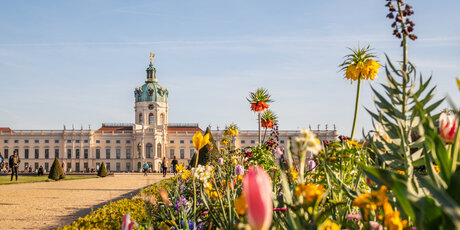
Berlin's Top 10 Attractions
Are you on a whistle-stop tour of the capital or just looking for the Berlin Top 10 ? Well look no further, because we've picked the top ten things to see and do in Berlin so you don't have to. The choice of the top 10 Berlin attractions was by no means easy - this city has so much to offer! But here are the top 10 attractions and places you do have to visit in Berlin.
Top pick 1: Reichstag & glass dome

When the decision was made to move the Federal Government to Berlin, it was time to reawaken the Reichstag building from its long years of slumber on the Mauerstreifen, the military zone between the two sides of the Wall. The building has since been completely modernised, and today's visitors to the Reichstag can look out from the building's glass dome to get a bird's eye view of the hustle and bustle in the city. There are also a number of government buildings in the vicinity of the Reichstag, for example the Bundeskanzleramt ( Federal Chancellery ) and the Brandenburg Gate .
Experience the government district and many other highlights from the water with a boat tour:
Tickets for boat tours
Top pick 2: Brandenburg Gate - Berlin's signature attraction
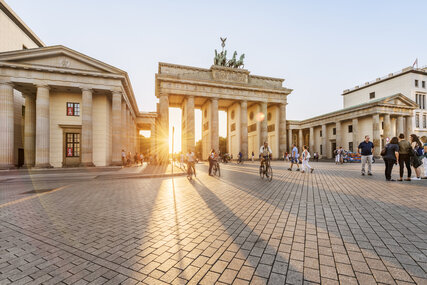
Without a doubt, the Brandenburg Gate is Berlin's signature attraction. Built in 1791, it was just one of many old city gates around the city of Berlin which, at that time, was still a manageable size. The decorative Pariser Platz was laid at the foot of the gate and is now home to many of the city's important buildings, for example, the Hotel Adlon with its wealth of history and the Akademie der Künste (Academy of the Arts).

Kraftwerk Berlin: Home of F4 FanZone
Live basketball vibes and celebrate the EuroLeague Final Four at the FanZone! Meet basketball players, take photos with the EuroLeague Trophy, get your official merchandise and enjoy games, tournaments, food and fun, all at the trendy spot in the German capital on May 23-26.
Mehr erfahren
Top pick 3: Berlin Television Tower (Fernsehturm) - Berlin's highest attraction
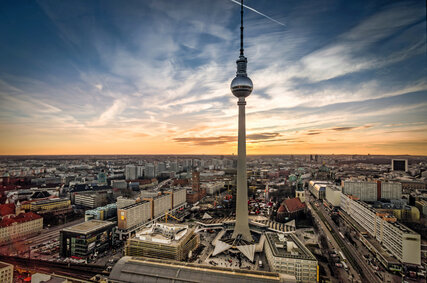
The Berlin Television Tower , which is known to locals as the Fernsehturm , and is instantly recognisable from the distance, stand outs of the skyline at 368m, making it the tallest building and by far highest tourist attraction in Berlin. Built in the 1960s, visitors to the tower can enjoy a unique 360° panorama of the city. Tip: Visit the TV Tower with the Berlin Welcome Card and save up to 25 per cent. The Berlin WelcomeCard enables free travelling with all public transport services to the Berlin visitors. With over 200 partners and outstanding discounts the Berlin WelcomeCard offers you a complete „carefree“ package.
Tickets for TV-Tower & Restaurant Sphere
Berlin Welcome Card
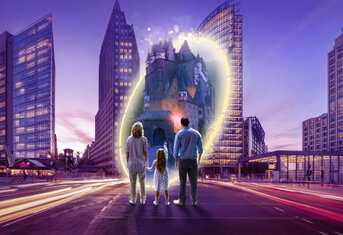
Deutschlandmuseum
The immersive history experience! Travel through 2000 years of German history: sneak round a castle, operate Gutenberg’s printing press, dance in the roaring 20s and see the ruins of Berlin after WW2. Finish in the 1990s on a Berlin S-Bahn.
Top pick 4: Humboldt Forum - always a great place to visit

Directly opposite Berlin's Museum Island , a new cosmopolitan forum for culture, art and science is located: the Humboldt Forum . Visible from afar, it covers an area of around 30,000 square metres. The reconstructed baroque palace facades shine in bright quince yellow. State-of-the-art interactive exhibitions await you under one roof and spread over five floors. The world-famous collections of the Ethnological Museum and the Museum of Asian Art are also on display here.
Also take a look around the corner from the Humboldt Forum: The Friedrichswerder Church , built by Schinkel, is now a very special museum, displaying sculptures of classicism in the high neo-Gothic church hall.
Top pick 5: Gendarmenmarkt - Berlin's most beautiful attraction
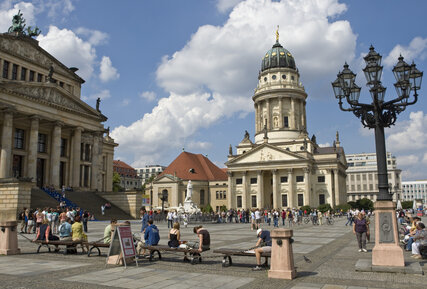
The Gendarmenmarkt is one of the most stunning squares in the city, located close to Friedrichstraße , Berlin's exclusive shopping street in the central Mitte district. Three of the most impressive examples of architecture in the capital city are to be found here: the Concert House designed by Schinkel and the German and French Cathedrals (the Deutscher Dom and the Französischer Dom ).
Combine your visit to Gendarmenmarkt with a city tour and discover other top sights:
Tickets for Hop-On Hop-Off Bus Tours
Top pick 6: Kurfürstendamm - Berlin's most famous shopping street

Extending all the way from the ruins of the Kaiser Wilhelm Memorial Church on Breitscheidplatz to Berlin's elegant Halensee neighbourhood, the affectionately termed Kurfürstendamm is the most expensive address in the capital city and home to the most exclusive brands. Europe's biggest department store KaDeWe is also situated on the extension of the Ku'damm, on the street known to locals as the Tauentzien (short for Tauentzienstrasse). You will find many sights and top attractions along this famous shopping street. The little ones will just love the Zoo Berlin , Germany's oldest zoo.
Day-Tickets for Zoo Berlin
Top pick 7: Charlottenburg Palace
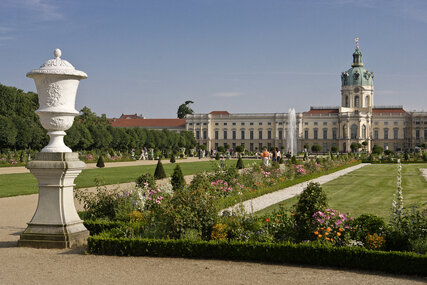
The magnificent Charlottenburg Palace is located just outside the city centre. Built by the Prussian head of state Frederick I around 1700 for his beloved and much-admired wife, Queen Sophie Charlotte, it lies in the middle of a picturesque palace park directly on the River Spree. If you don't fancy a stroll in the park, you can also visit first-class museums and a collection of casts of ancient sculptures directly opposite on Schloßstraße.
Top pick 8: Museum Island
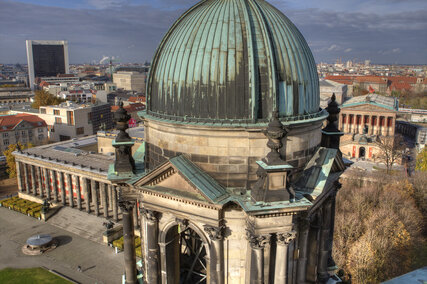
Berlin's Museum Island is one of the UNESCO world heritage sites and home to the city's most important exhibition centres: the Altes Museum ( Old Museum ), the Neues Museum ( New Museum ) the Bode Museum , the Pergamon Museum and the Alte Nationalgalerie ( Old National Gallery ). The collections in these buildings encompass over 6,000 years of art and cultural history. Unfortunately, the Pergamon Museum is closed for extensive renovation work.
Just opposite Berlin's Museum Island, the magnificent monumental Berlin Cathedral, an important landmark of Berlin whose history dates back to the 15th century, is also located on the Museum Island.
Tip: Visit Berlin's museums with the 3-day Berlin Museum Pass . For €32 (reduced €16), the museum pass guarantees free admission for all Berlin visitors on three consecutive days to many museums. Order now in the visitBerlin-Shop
Tickets for the Museum Pass
Top pick 9: The Berlin Wall Memorial and Documentation Centre
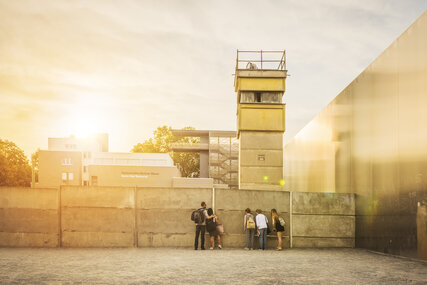
The Gedenkstätte Berliner Mauer ( Berlin Wall Memorial ) is located between the districts of Wedding and Mitte on Bernauer Straße. The large area houses an outdoor exhibition, a documentation centre, the memorial to the victims of the division and the Chapel of Reconciliation. The surviving section of the wall and watchtower enable visitors to get a real feel for the reality of the border facilities. A must see Berlin attraction, not only for visitors interested in Beriln's history.
Get to know more about the Berlin wall at the East Side Gallery .
Top pick 10: Victory Column - magnificent view on Berlin
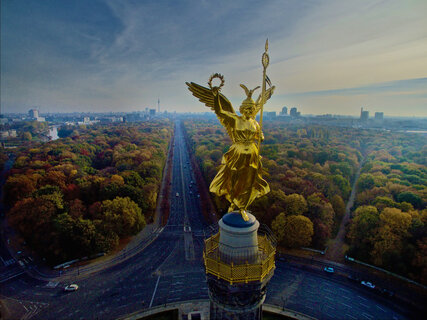
The Berlin Victory Column is one of the most famous landmarks of the German capital. The 67-metre-high column, crowned by the golden Berlin Peace Angel visible from afar, stands in the middle of the Tiergarten. From the platform you have a magnificent view over the parklands of the Tiergarten and over the whole of Berlin. The Victory Column was erected in the 19th century and originally commemorated Germany's wars of unity. Today it has become a symbol of peace.
From the Victory Column you can walk in the Tiergarten but also walk to the nearby Brandenburg Gate , Potsdamer Platz or the Berlin Reichstag .
More about sights in Berlin:
Sightseeing in berlin.
- All sights in Berlin
Museums in Berlin
Do you know what is planned in the historic centre of Berlin and which new openings are coming up? Find out on our infographic:
Berlin's new cultural centre
- Share on Facebook Share on Facebook
- Share on X Share on X
- Share by email Share by email
- Print page Print page
You might find this also interesting
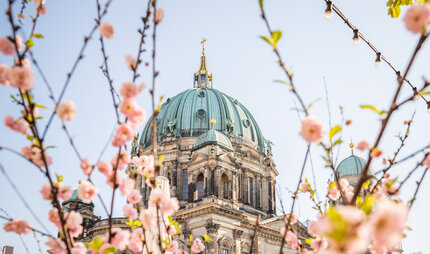
Your Berlin guide with insider tips
The top sights, the best exhibitions and tickets for city tours – your must-do list for sightseeing in Berlin!
Show details
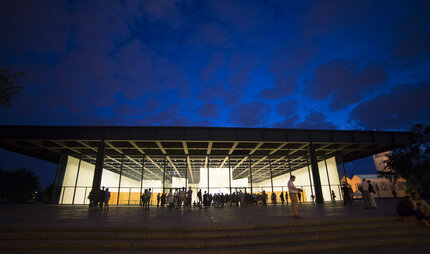
From Museum Island to the DDR Museum
From great masterpieces to unusual exhibits – Berlin’s museums are home to stunning works of art and fascinating worlds.
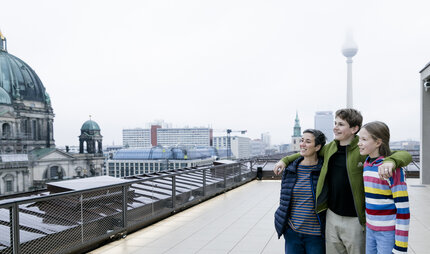
Experience Berlin (almost) for free.
Low Budget Sightseeing in Berlin
Berlin is exciting, Berlin is diverse and surprising for a capital city, Berlin isn't expensive. For visitors on a low budget the city is a
Severe solar storm expected to supercharge northern lights on Friday
A severe solar storm is expected to supercharge the northern lights on Friday, with forecasts indicating that auroras could be seen as far south in the United States as Alabama.
The National Oceanic and Atmospheric Administration’s Space Weather Prediction Center said Thursday that a series of solar flares and eruptions from the sun could trigger severe geomagnetic storms and “spectacular displays of aurora” on Earth from Friday evening through the weekend.

It was the first severe geomagnetic storm watch the agency has issued since 2005.
“We have a rare event on our hands,” said Shawn Dahl, a service coordinator at the Space Weather Prediction Center in Boulder, Colorado. "We're a little concerned. We haven't seen this in a long time."

Because strong geomagnetic storms have the power to disrupt communications and power grids on Earth, as well as satellites in space, Dahl said satellite and grid operators have been notified to prepare.
He said forecasters predict the storm could arrive as soon as about 8 p.m. ET on Friday.
"We’re less certain on the timing of these events, because we’re talking about something for 93 million miles away," Dahl said, referring to the distance from the sun to the Earth.
A NASA spacecraft orbiting about 1 million miles from Earth, called the Advanced Composition Explorer, will help forecasters measure the solar wind and understand the timing and potential effects more precisely.
The northern lights , or aurora borealis, come from charged particles that spew from the sun during solar storms. The colorful displays are created when clouds of these energetic particles slam into Earth’s magnetic field and interact with the atoms and molecules in the planet’s upper atmosphere.
The northern lights typically light up the night sky at high latitudes, but during intense periods of solar activity, they can be spotted farther south than usual.
The Space Weather Prediction Center’s forecast said it’s possible that auroras on Friday night could be seen “as far south as Alabama and Northern California.”

The agency maintains an aurora dashboard that provides short-term forecasts of the northern lights. If conditions are clear, auroras are best viewed from locations that are dark and far from city lights.
As night descended on parts of Australia and Europe, early photos began to emerge of dramatically colorful skies.
Dahl said smartphones might even be able to capture imagery of the aurora at southern locations where the human eye can't see anything unusual.
According to the Space Weather Prediction Center, several “moderate to strong” solar flares have been detected since Wednesday morning. Solar flares unleash clouds of plasma and charged particles, called coronal mass ejections, into space. At least five flares and their associated coronal mass ejections appear to be directed at Earth, the center said.
“Additional solar eruptions could cause geomagnetic storm conditions to persist through the weekend,” it said in a statement.
When directed at Earth, this geomagnetic and solar radiation can induce currents on high-voltage transmission lines and cause problems for transformers on the power grid.
One of the most damaging geomagnetic storms occurred in 1989, when roughly 6 million people in Montreal, Canada, lost power for nine hours, according to NASA . Some parts of the northeastern U.S. and Sweden were also affected in that event.

In 2002, a coronal mass ejection knocked out 38 commercial satellites .
The sun goes through 11-year cycles from minimum to maximum activity. The current cycle, which began in late 2019, is predicted to peak with maximum activity in July 2025 , according to NOAA and NASA forecasts.
Denise Chow is a reporter for NBC News Science focused on general science and climate change.
Evan Bush is a science reporter for NBC News. He can be reached at [email protected].

IMAGES
VIDEO
COMMENTS
The fastest and cheapest way to city center from Tegel Airport is by using one of the Airport Express Busses. You can catch the busses outside of the terminal, they leave every 10 minutes. The journey takes around 35 minutes and costs €2.80. For information on which Express bus to take click here.
11:00 Tour the Gemäldegalerie; have lunch at a museum café or on Potsdamer Platz. 15:00 Ride the U-Bahn (U2 from Potsdamer Platz to Senefelderplatz) and stroll the heart of Prenzlauer Berg, from Senefelderplatz to Kollwitzplatz to Kastanienallee, Oderberger Strasse, and the Mauerpark (with my Berlin guidebook, follow its Prenzlauer Berg Walk).
Berlin by public transportation. You want to get from the airport to the city or discover Berlin's sights by S-Bahn, U-Bahn, streetcar (tram) and bus. No problem. The public transport network is well developed throughout Berlin. Our video shows you how public transport works in Berlin.
Konnopke's Imbiss is another famous place. Döner kebab - The standard street food in Berlin. The best kebab places are a secret, but the worst kebabs are usually in train stations and tourist areas. Gemüse döner (also called a chicken döner) - A döner kebab with chicken and fried vegetables.
Berlin is full of magic, positive energy and excitement - but there are places where a little caution is wise. Here are the top things you need to know before a visit to Berlin. 1. Travel at off-peak times. Berlin is Germany's top tourist destination, and there's a lot of competition for hotel rooms and transport at peak times.
The main airlines that fly to Berlin are the following: United Airlines. Lufthansa. Brussels Airlines. Delta Airlines. Traveling from Canada. Air Canada Rouge offers nonstop flights between Toronto and Berlin. The connection works four times a week from June to October.
1. As a first-time visitor, planning a trip to Berlin can be overwhelming. From navigating the public transportation to choosing a place to stay, there is a lot of information to sift through. And that's not even considering all of the things to see and do. I was certainly overwhelmed on my first visit in 2020 - my custom Google map had ...
Because: We love Berlin and know our city like no other! Your complete Berlin holiday - hotels, city trips, tickets & tips. Secure booking on the official Berlin travel portal. Qualified Berlin experts with over 20 years experience. Free of charge travel advice, no commission fees.
Our 72-hour tour will take you to the most famous landmarks in Berlin and to its most beautiful places. Be guided through a sightseeing tour of Mitte, go shopping on Kurfürstendamm and in City West, and experience neighbourhood life in the districts of Kreuzberg and Friedrichshain. With our 72-hour programme, you won't miss out on any top ...
If you plan to stay in Berlin for only a long weekend, getting a 24-hour ticket (€9.50 for fare zone AB) is the best choice. For stays between 4-7 days, the 7-day passes (€36 for fare zone AB) are the most cost-effective option, offering unlimited travel within the selected zones for seven consecutive days until midnight on the seventh day.
How Much to Budget to Visit Berlin. Alcohol is cheap, food is affordable, and accommodation is very reasonable — which is why Berlin is such a hotspot for artists, students, and budget travelers. We recommend budgeting €35-€60/day if you're on a backpacker's budget. That said, if you stay in a hotel/rental apartment and eat out a lot ...
Other Berlin Ticket Options: Berlin Welcome Card: This tourist ticket offers access to transport and discounts on attractions from 48 hours to 6 days. Tageskarte: Day passes for 7 euros (AB zone) are available for unlimited travel from time of purchase until 3:00 a.m. the next day. Up to three children (6 to 14) are included in the ticket.
Single ticket: €3.50. A single ticket allows you one journey in one direction with changes for two hours. So if you take the U5 from Alexanderplatz to Brandenburg Gate, hop out for 20 minutes to take pictures and look around, and then get on the Sbahn to Potsdamer Platz, you're covered by that single ticket.
Berlin visitors arriving at a Berlin airport from a foreign country need a passport. EU nationals do not need a visa, others may need one depending on the length, frequency and purpose of their stays. ... During the peak travel season there may be a waiting period for making an application to a German mission. Persons requiring a visa to enter ...
4. Enjoy drinks outdoors. Whether its beer gardens, rooftop bars or some casual drinks in parks and by the Landwehrkanal, Berliners take a relaxed approach to drinking and socializing outdoors. While Berlin has something to offer all year round, the city in the warm weather has a special buzz around it. 5.
Visit the world's most famous checkpoint. Checkpoint Charlie was the main entry point for visitors wanting to cross the infamous Iron Curtain to East Berlin.
You can take a bus from Frankfurt to Berlin Hauptbahnhof via Neustadt, Neustadt, and Nürnberg Hbf in around 4h 46m. Alternatively, FlixBus operates a bus from Erlangen train station to Berlin central bus station 4 times a week. Tickets cost $35-55 and the journey takes 5h 20m. Airlines. Lufthansa.
Option 1: The most direct train is either RE8 or RB23. They both run from the airport through the center of the city and stop at Zoologischer Garten, taking just over 40 minutes to get there. Option 2: The S9 sbahn line also runs from the airport to Zoologischer Garten, but it takes about 15 minutes longer.
Train to London Luton, fly • 5h 17m. Take the train from London St Pancras Intl to Luton. train. Fly from London Luton (LTN) to Berlin Brandenburg (BER) plane. LTN - BER. $77-426. Train to Birmingham, fly • 5h 39m. Take the train from London Euston to Birmingham International.
Berlin, Germany (opens in a new window). A city steeped in history, Berlin balances the old and new effortlessly. Walk the famed Berlin Wall, admire the artwork at the East Side Gallery, visit Checkpoint Charlie and pay your respects at the Holocaust Memorial and the nearby Sachsenhausen concentration camp memorial.
Tip: Visit Berlin's museums with the 3-day Berlin Museum Pass. For €32 (reduced €16), the museum pass guarantees free admission for all Berlin visitors on three consecutive days to many museums. Order now in the visitBerlin-Shop. Tickets for the Museum Pass. Top pick 9: The Berlin Wall Memorial and Documentation Centre
On May 12, 2002, former President Jimmy Carter began a visit to Cuba. He was the first president, in or out of office, to visit the island since 1959.
ÖBB EuroCity operates a train from Praha-Holesovice to Berlin Hbf every 4 hours. Tickets cost €50 - €75 and the journey takes 4h 5m. Four other operators also service this route. Alternatively, RegioJet operates a bus from Praha ÚAN Florenc to Berlin Central Bus Station hourly. Tickets cost €17 - €25 and the journey takes 4h 30m.
The listing broker's offer of compensation is made only to participants of the MLS where the listing is filed. Zillow has 41 photos of this $739,900 5 beds, 4 baths, 3,347 Square Feet single family home located at N1560 State Road 49, Berlin, WI 54923 built in 2021. MLS #50291191.
Tickets cost €60 - €150 and the journey takes 5h 52m. European Sleeper also services this route once a week. Alternatively, FlixBus operates a bus from Amsterdam Central Station to Berlin central bus station 4 times a week. Tickets cost €45 - €70 and the journey takes 8h 15m. Airlines.
By Denise Chow and Evan Bush. A severe solar storm is expected to supercharge the northern lights on Friday, with forecasts indicating that auroras could be seen as far south in the United States ...
Rome2Rio makes travelling from Copenhagen to Berlin easy. Rome2Rio is a door-to-door travel information and booking engine, helping you get to and from any location in the world. Find all the transport options for your trip from Copenhagen to Berlin right here.